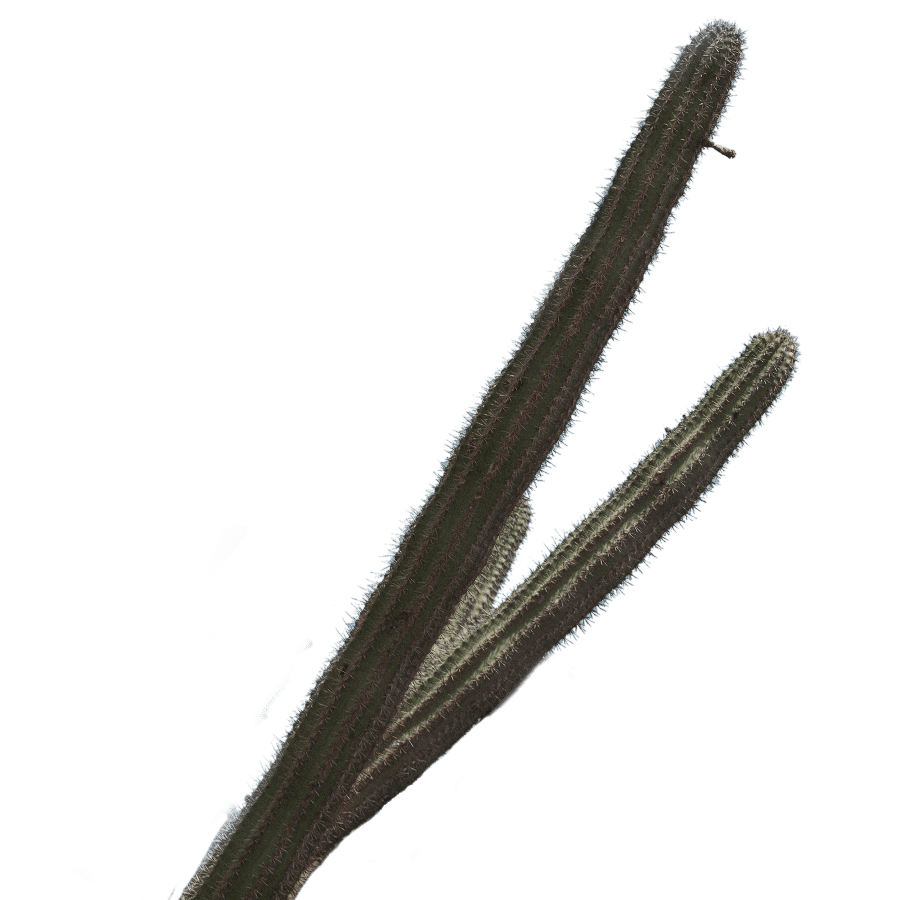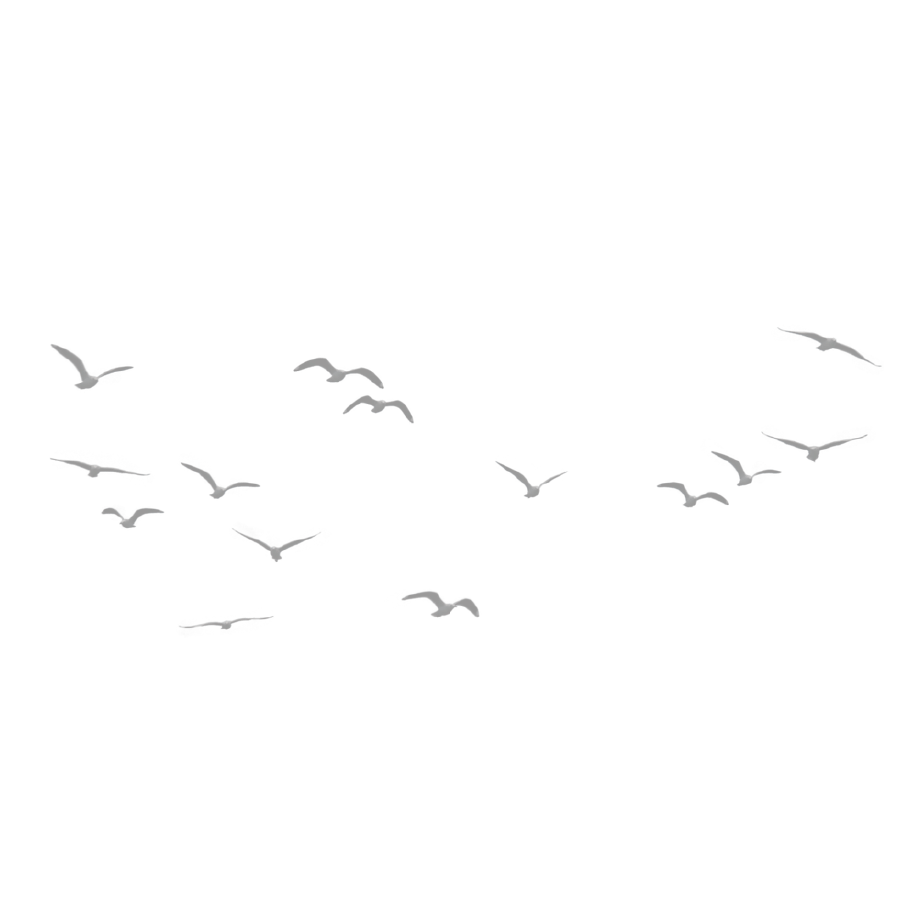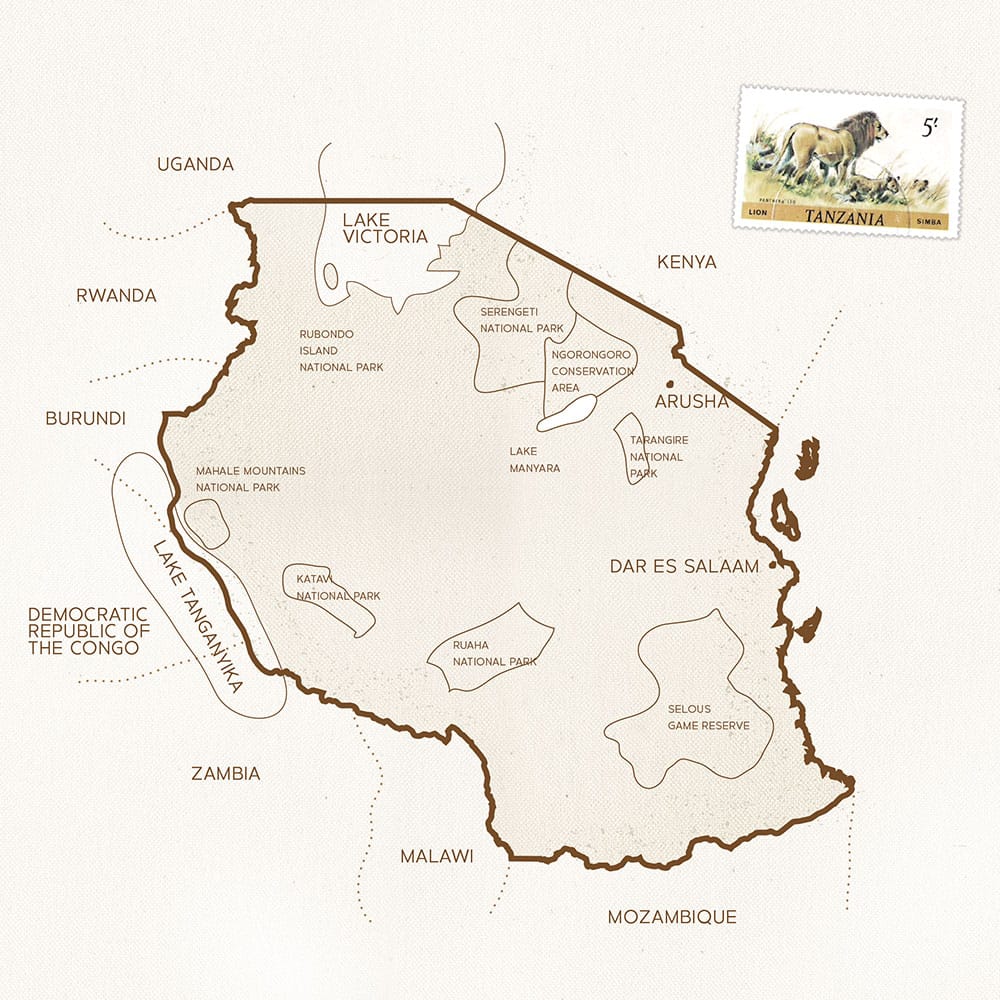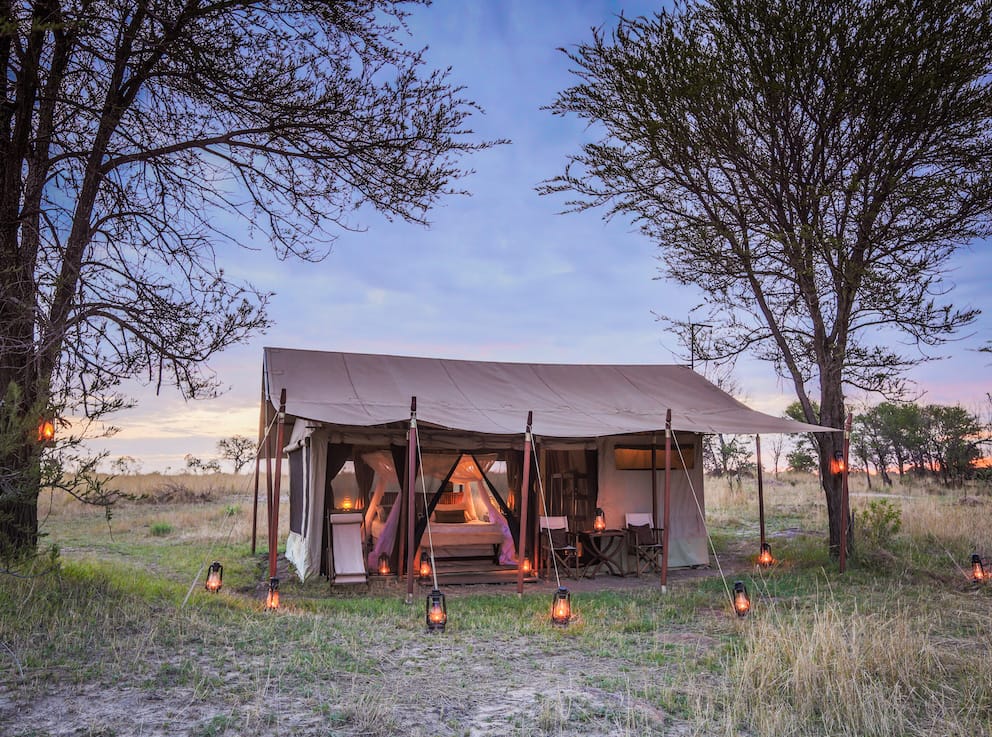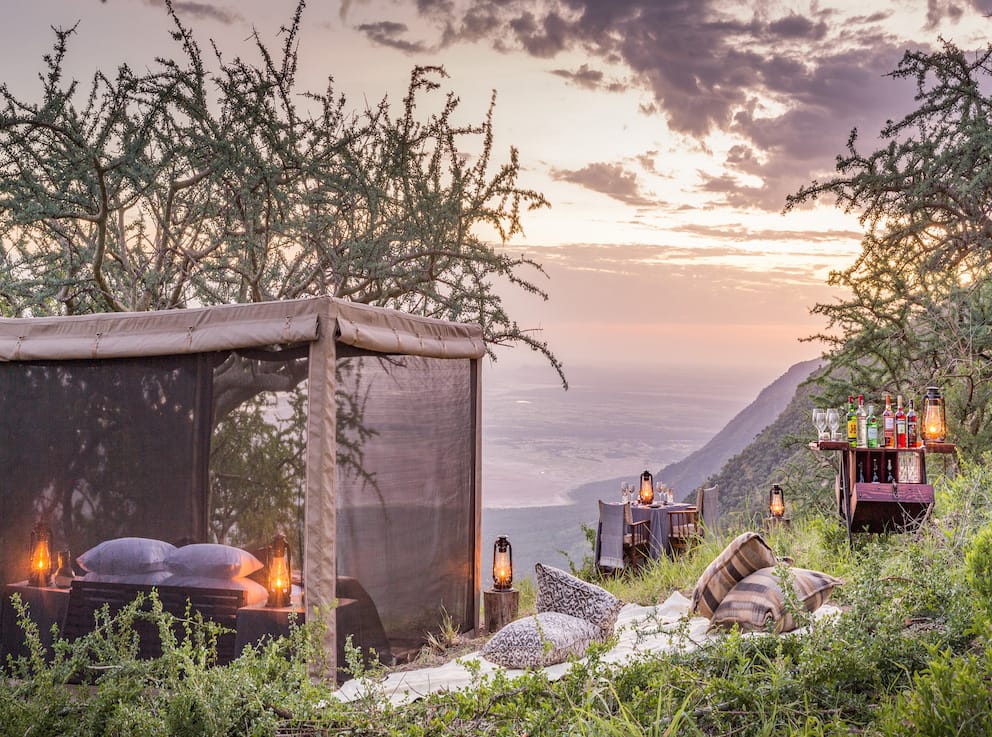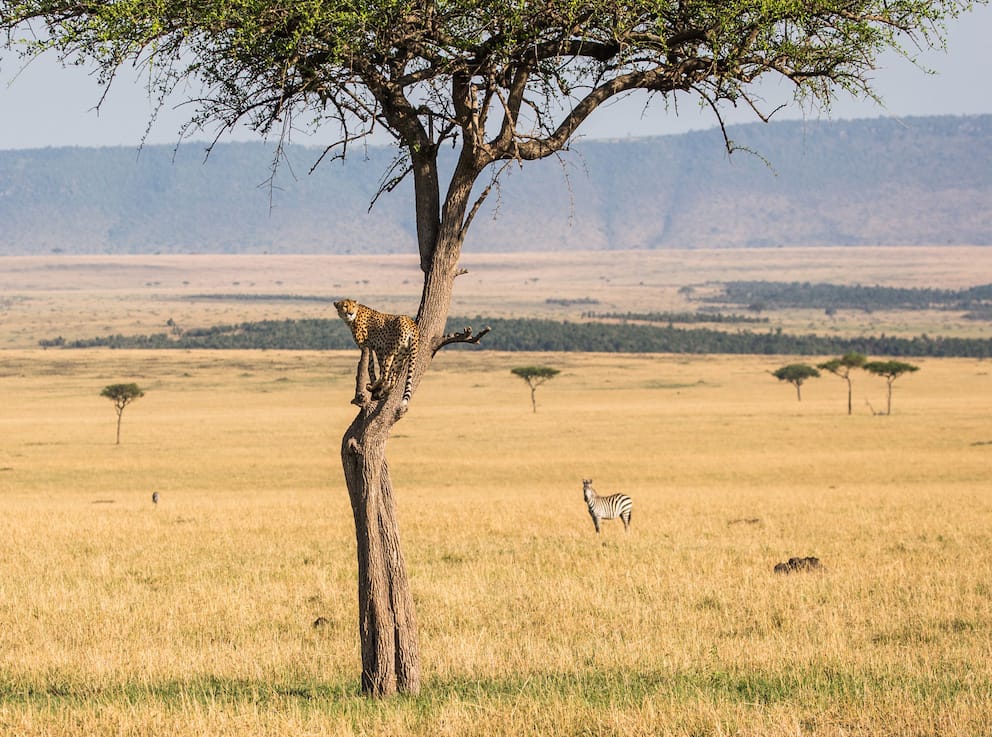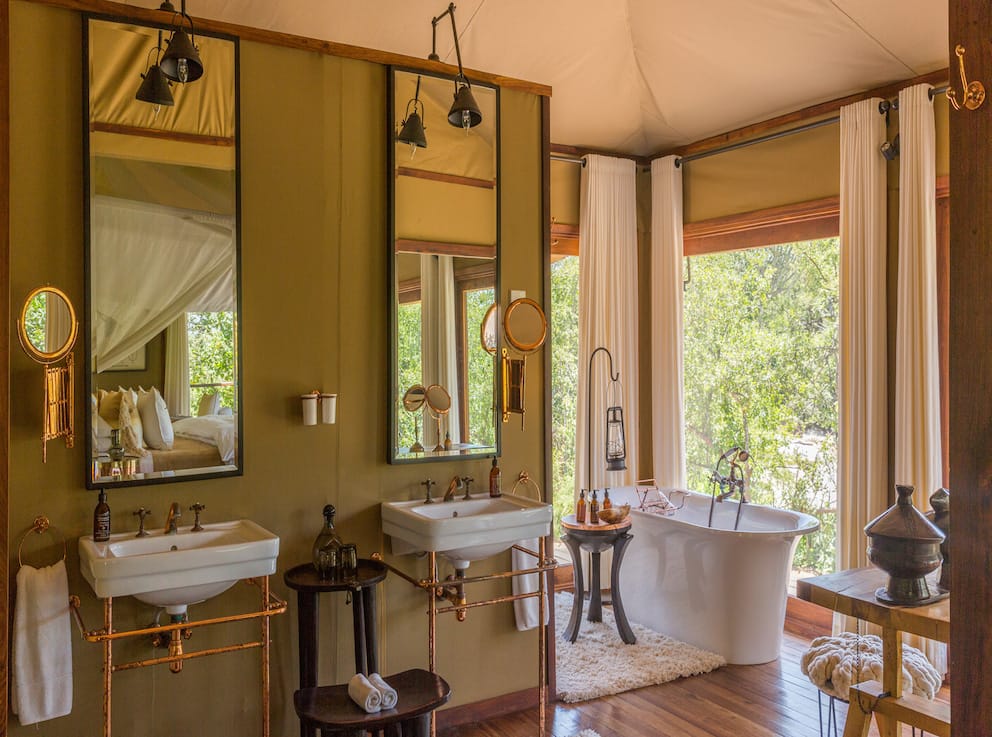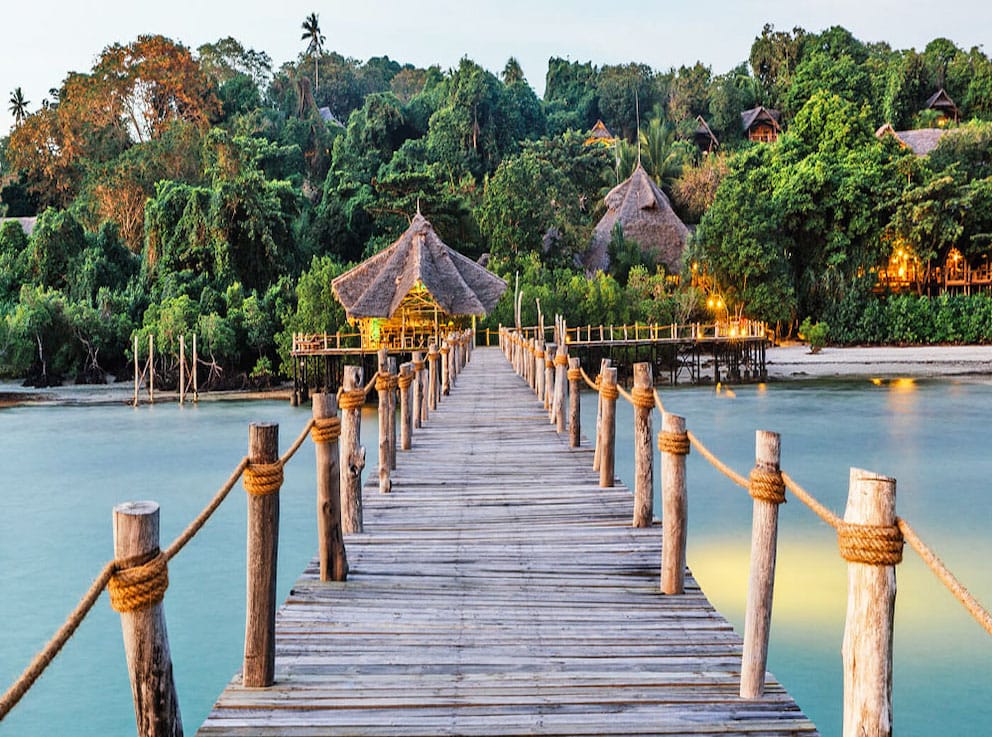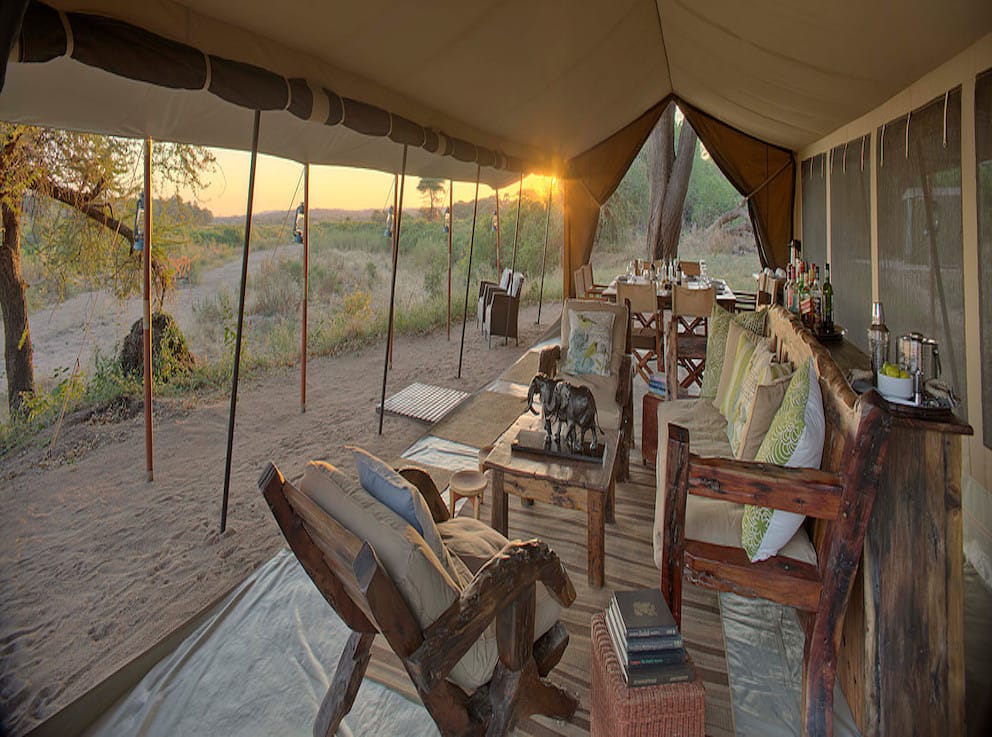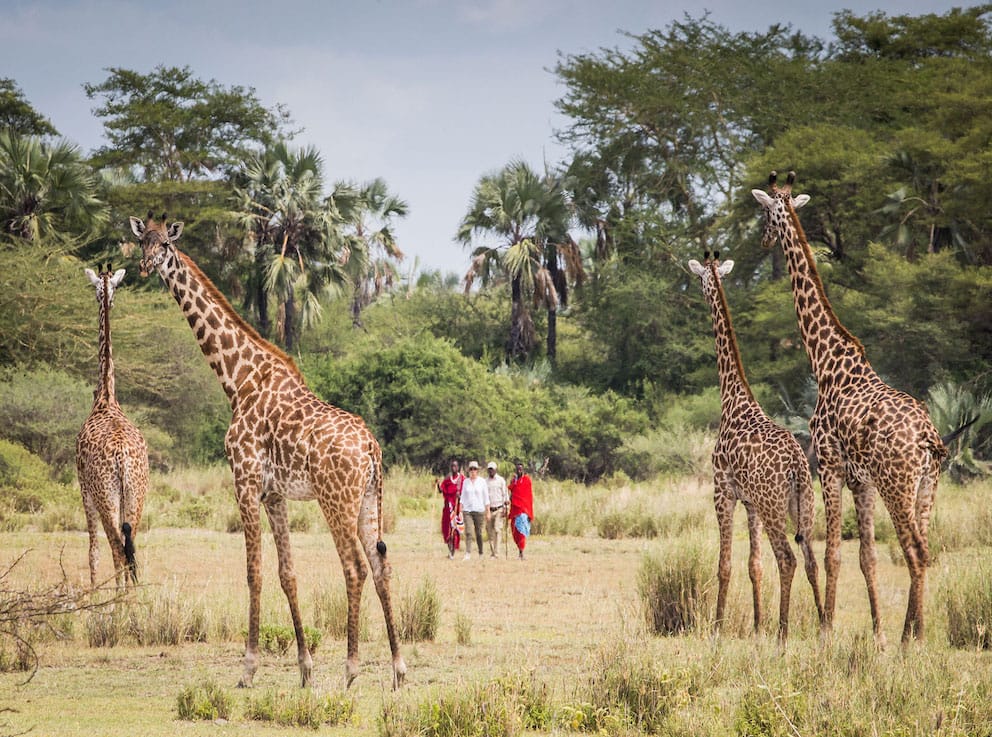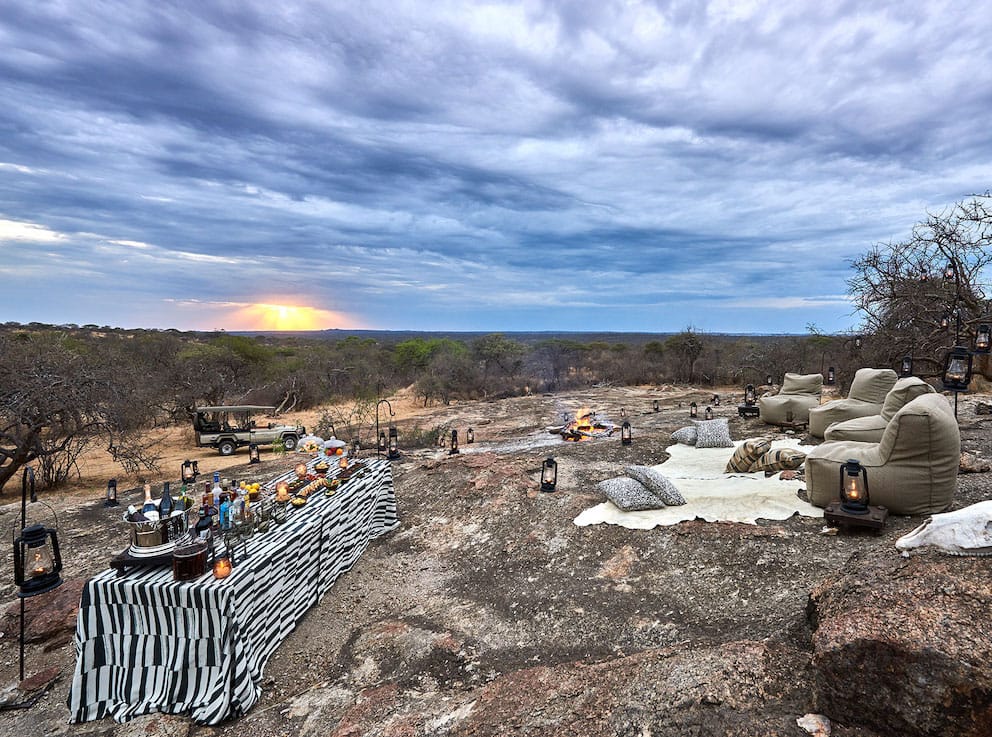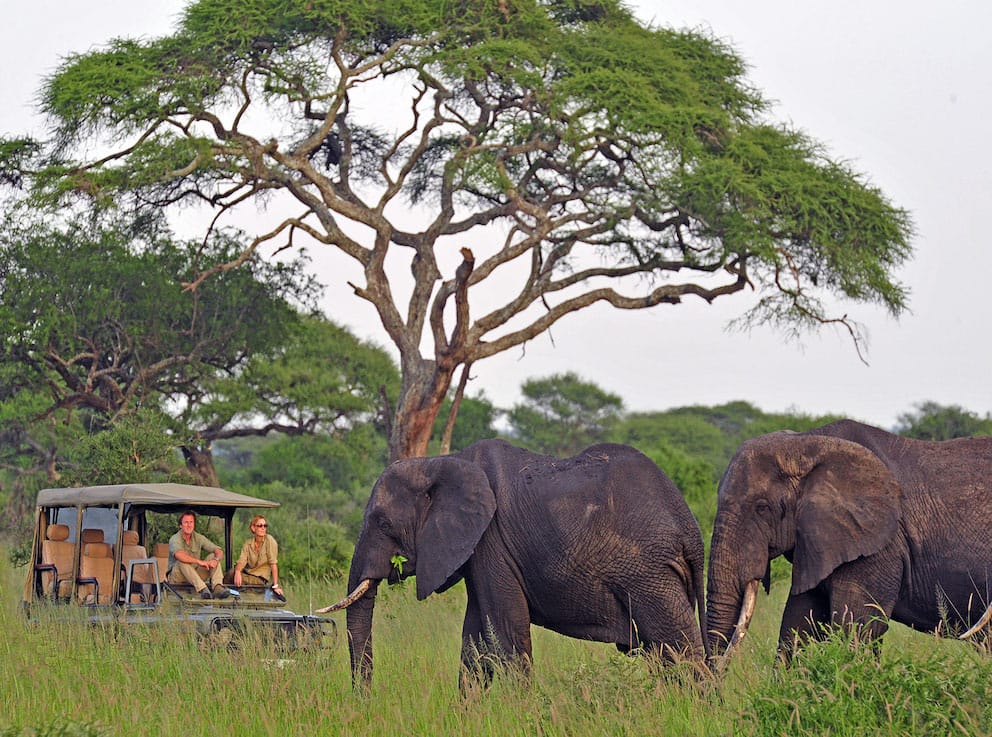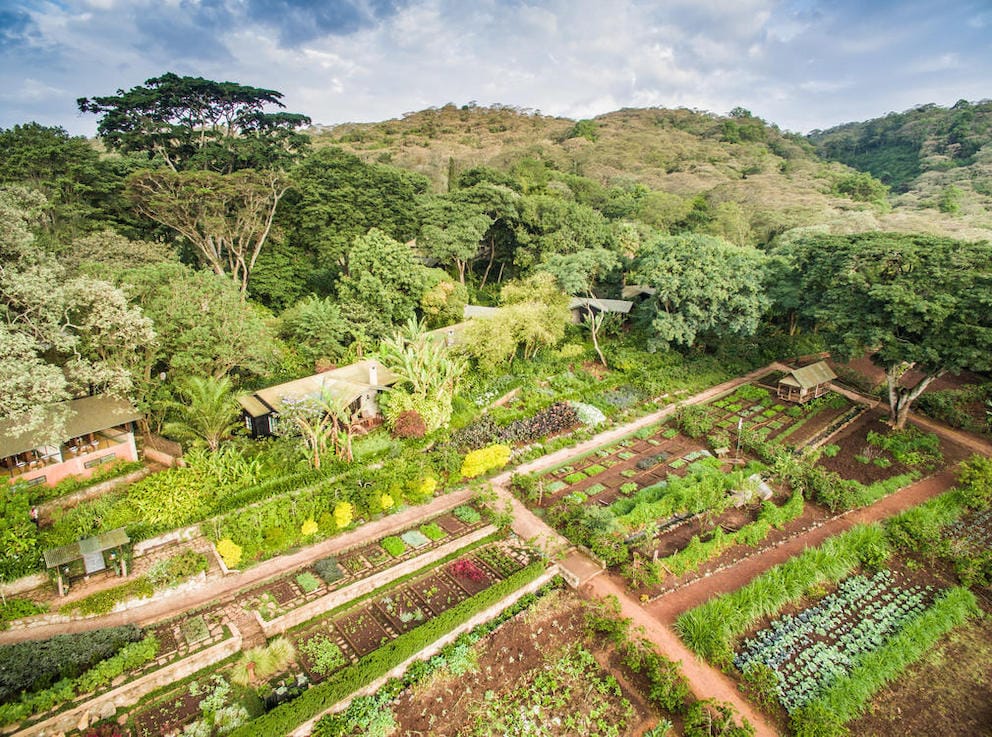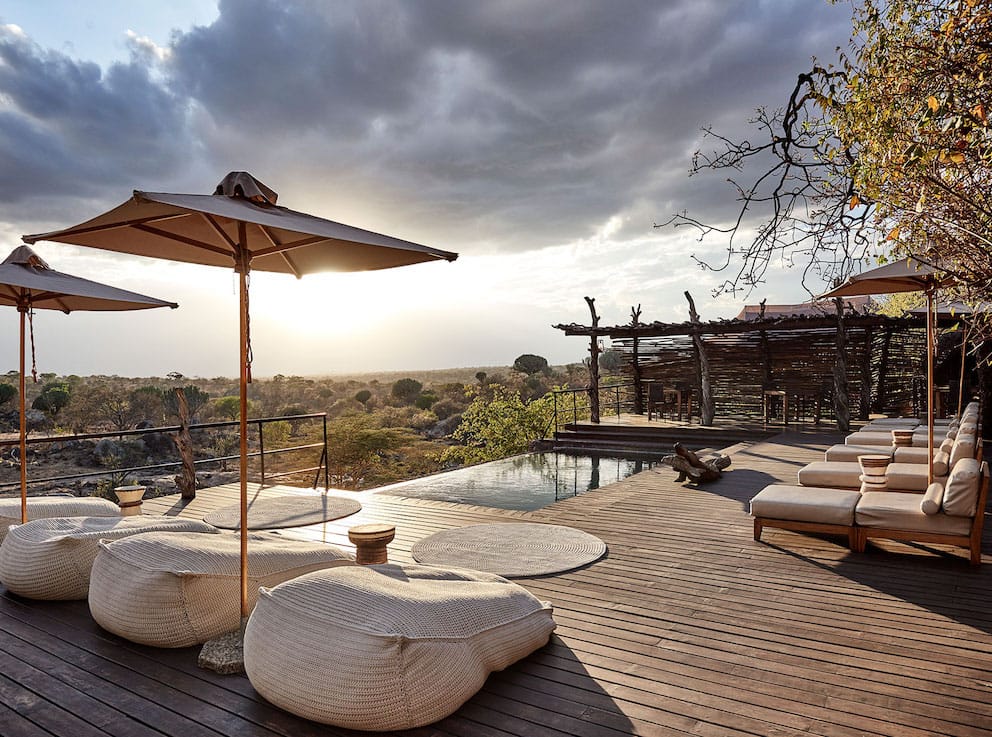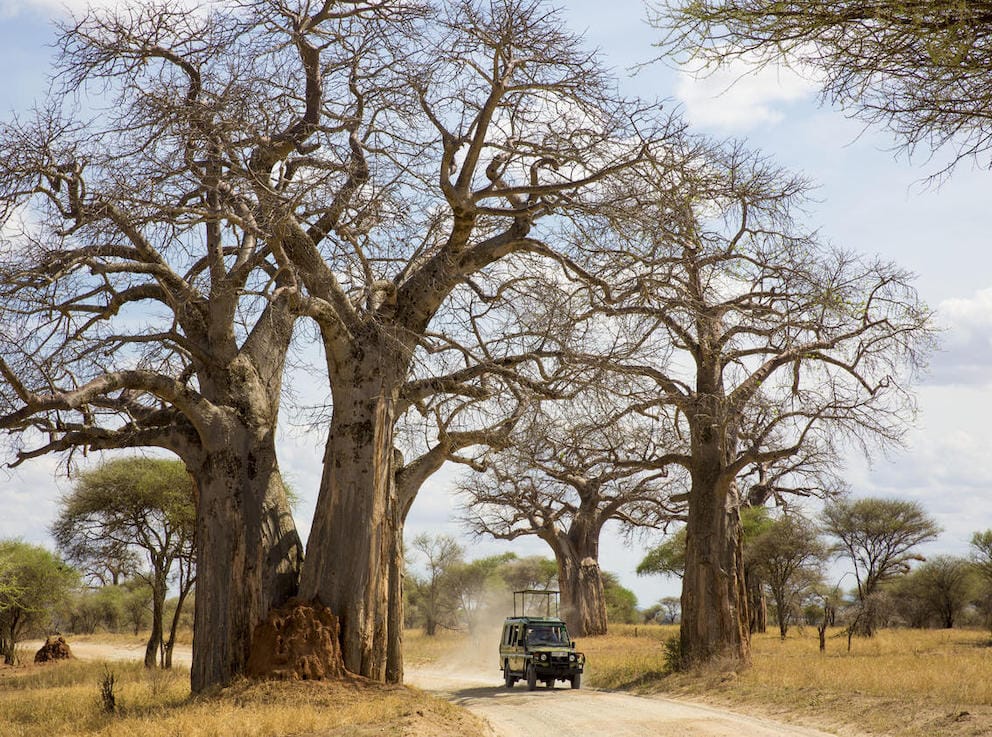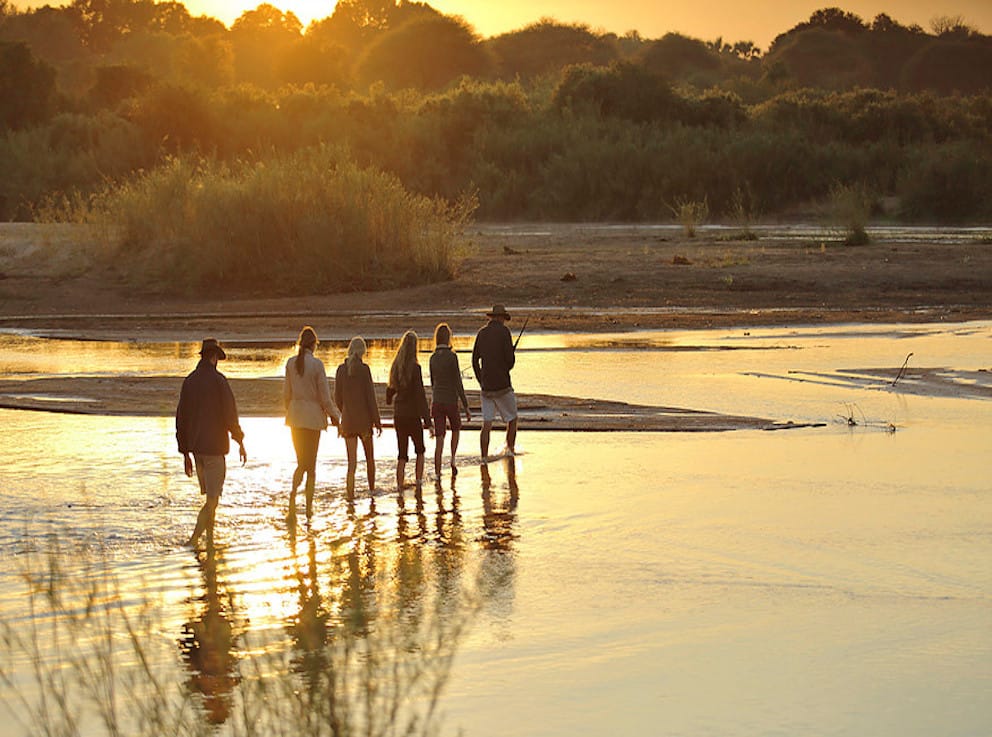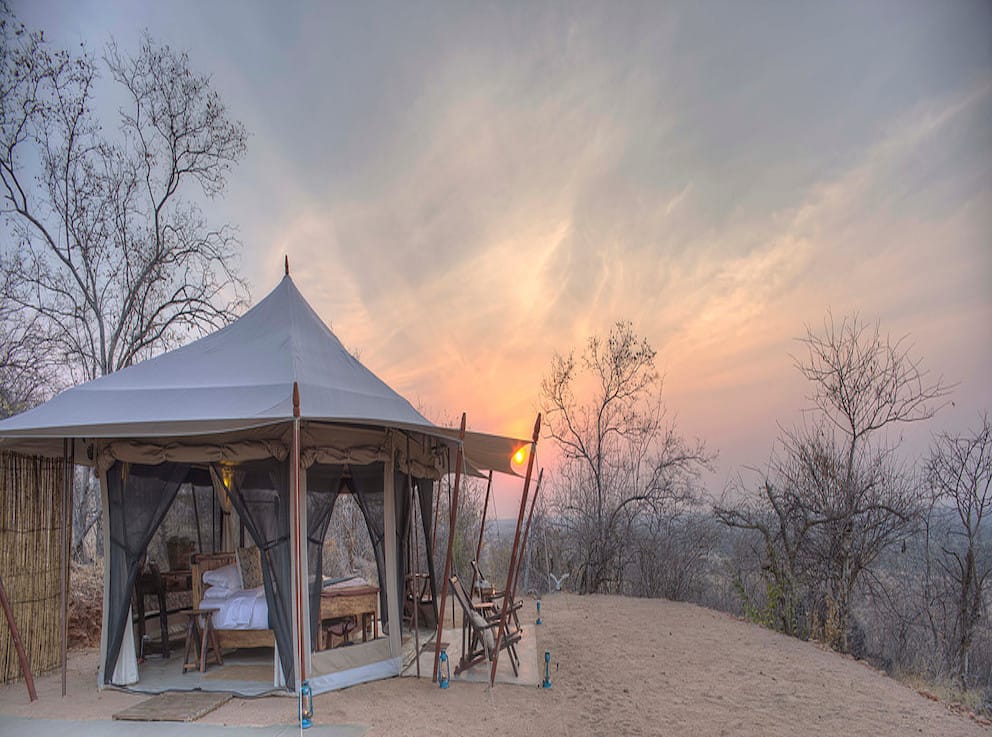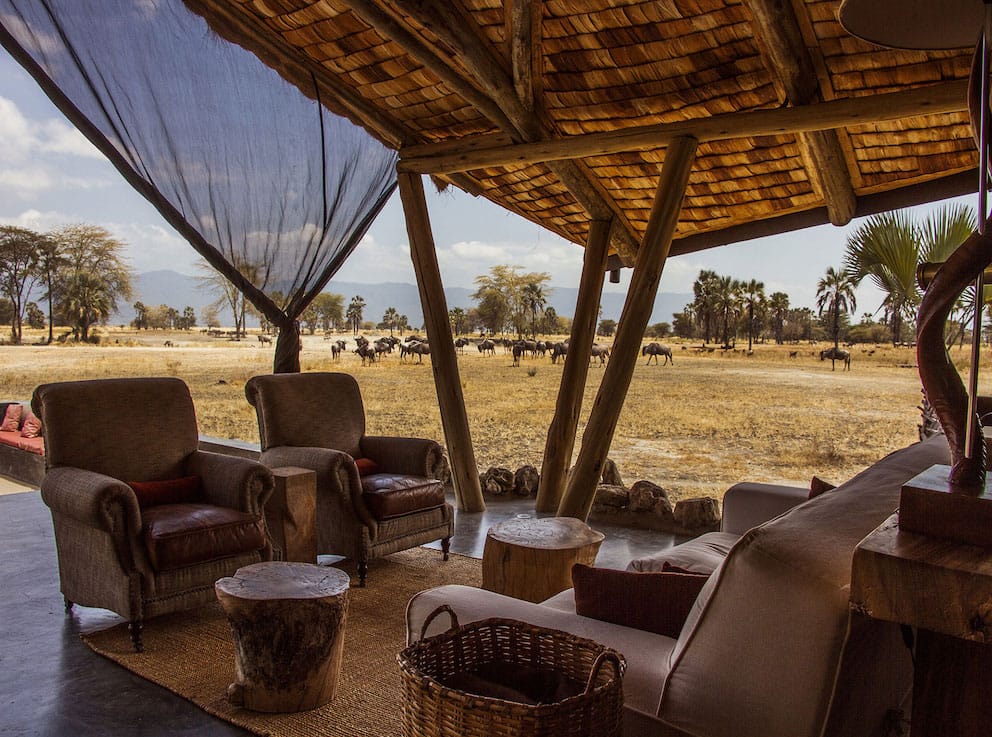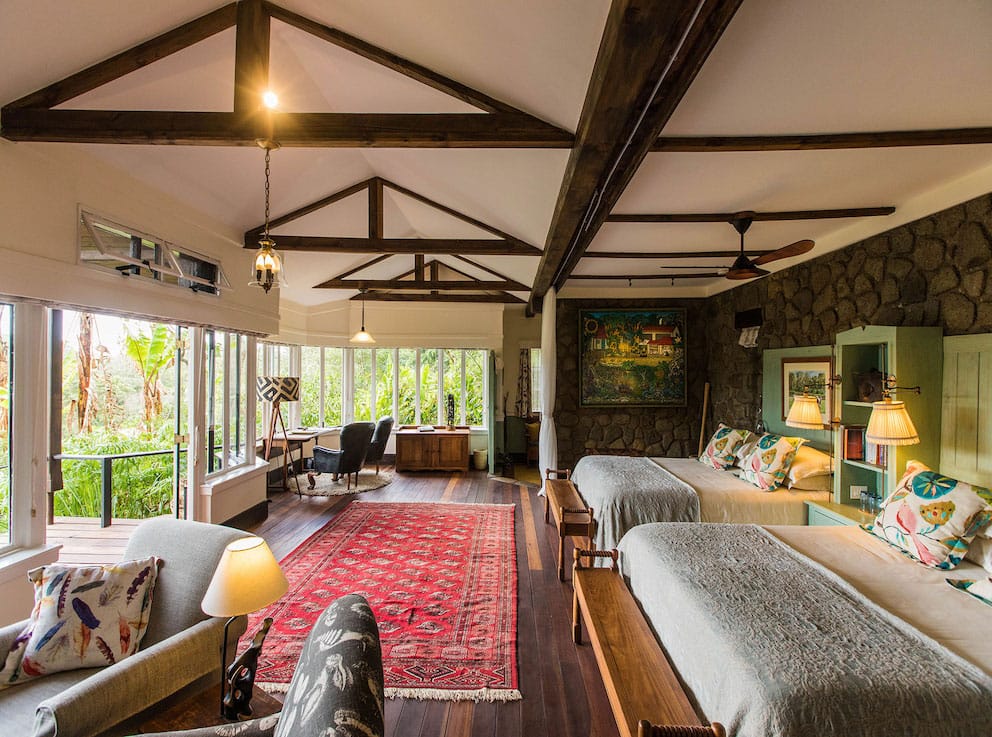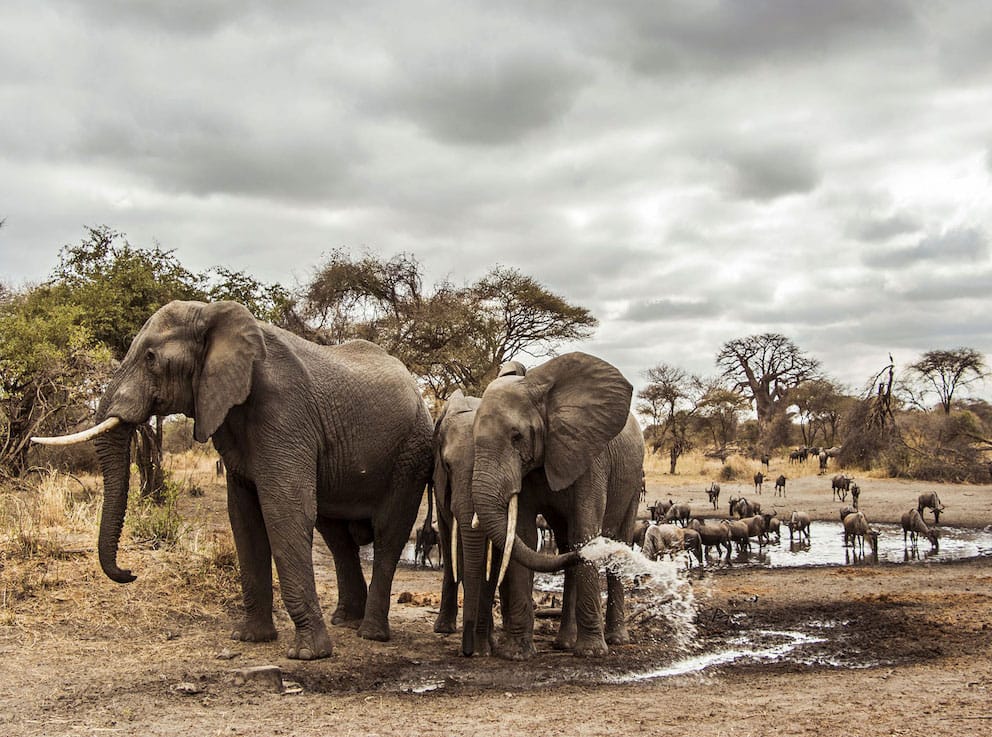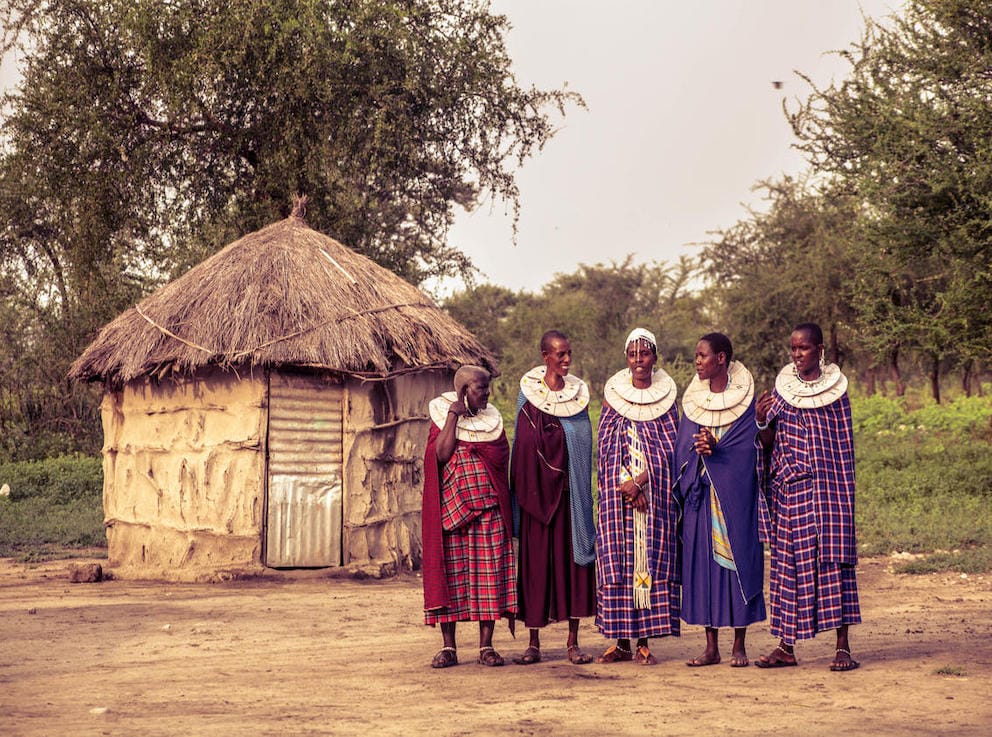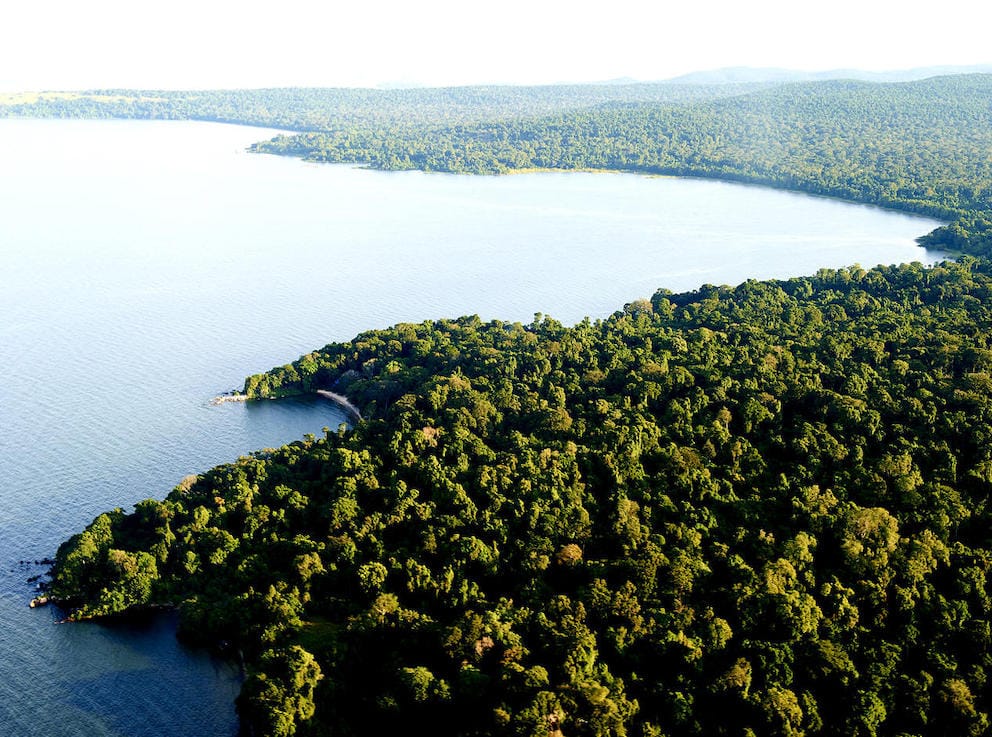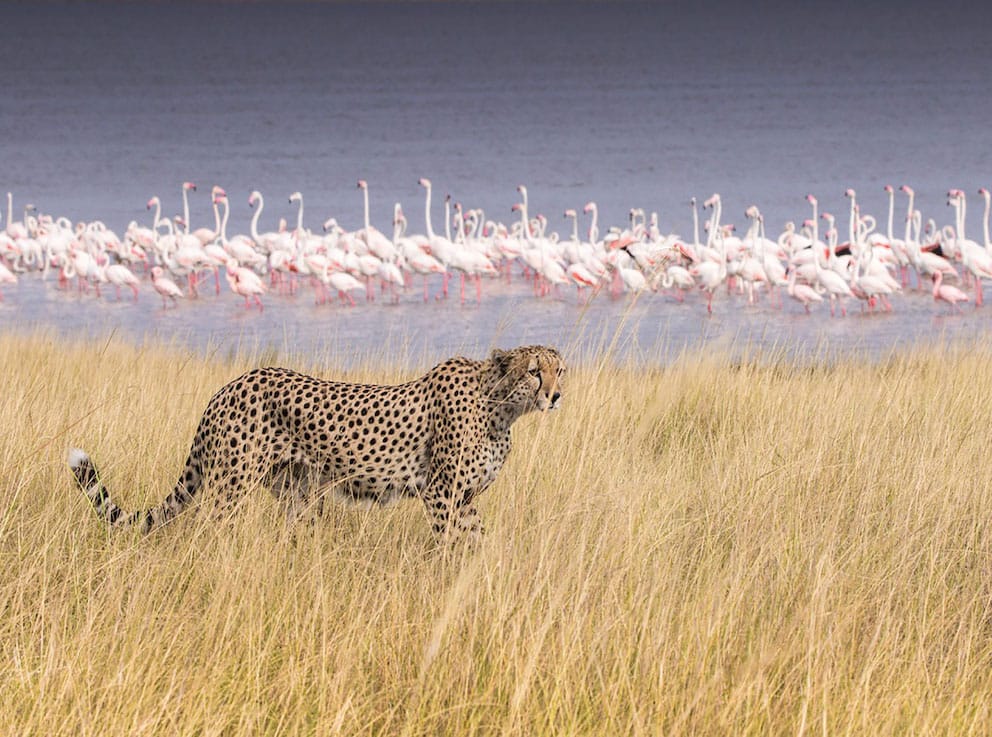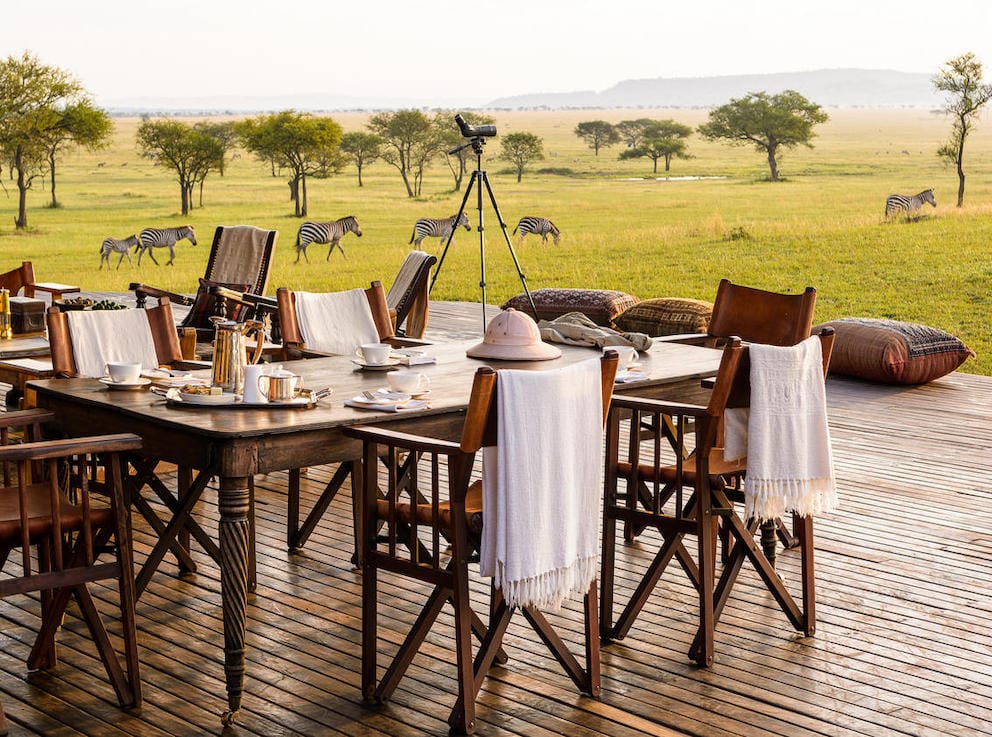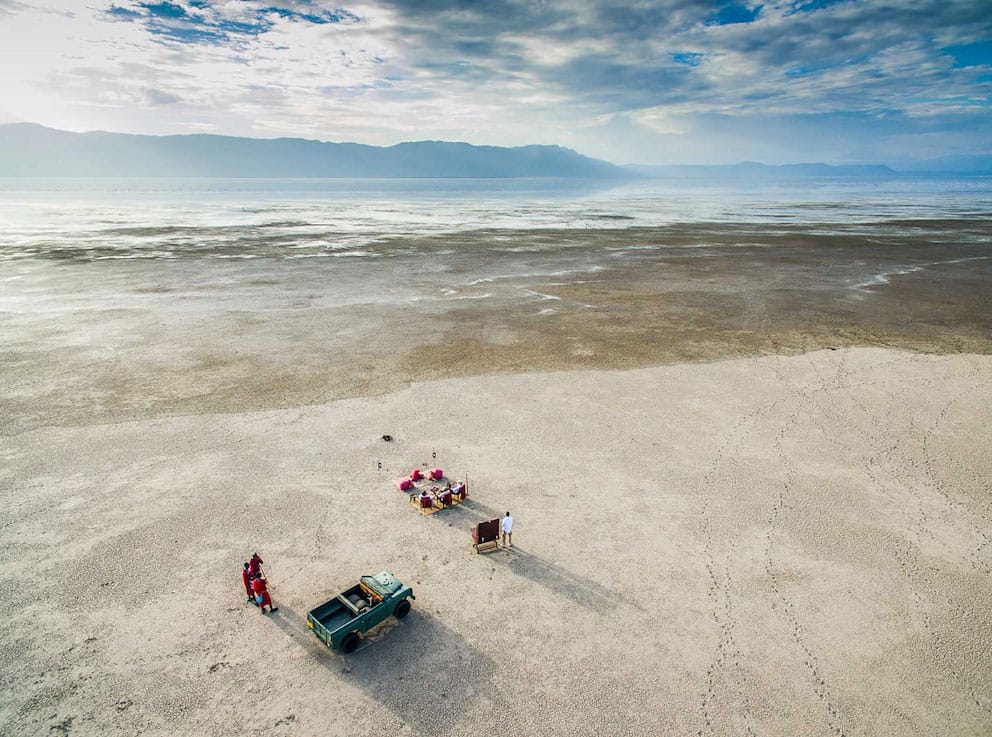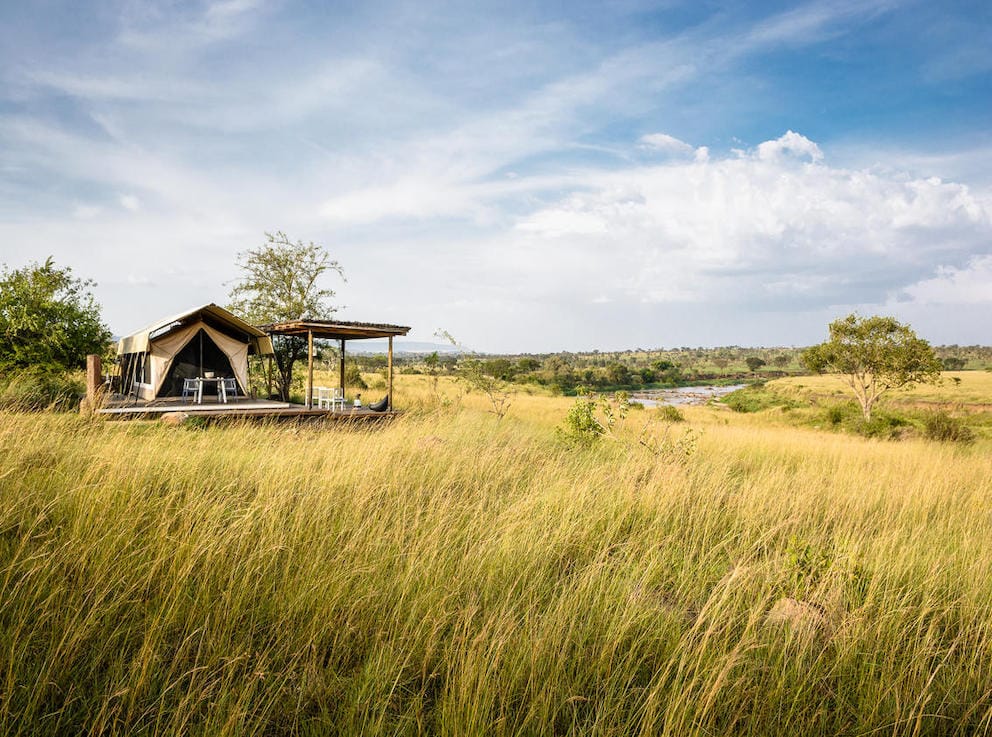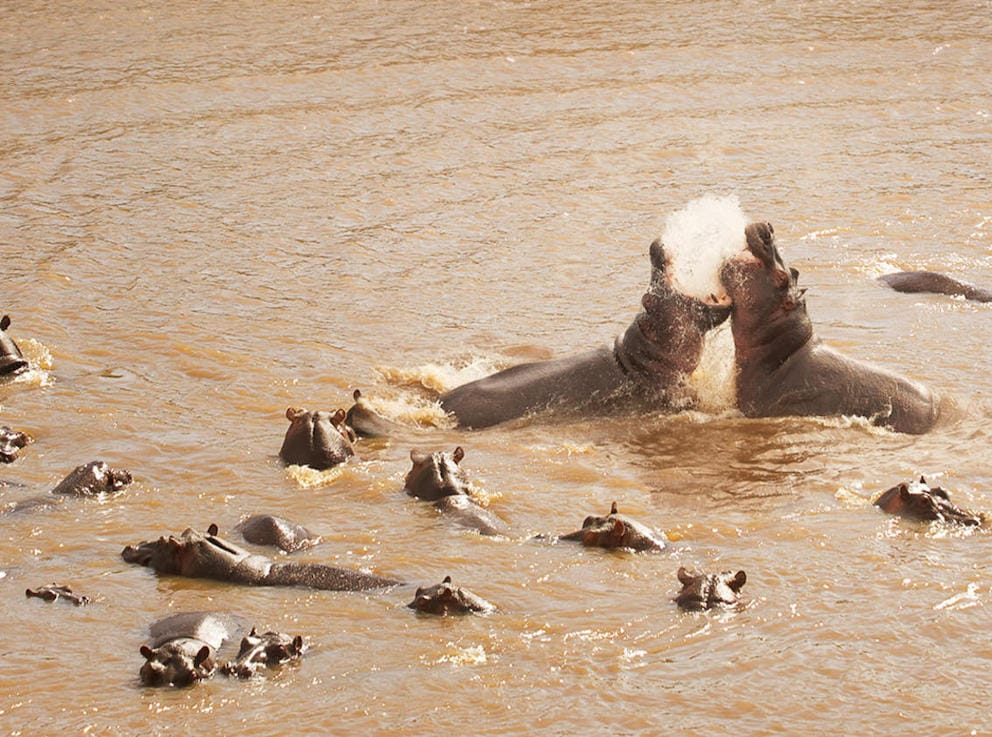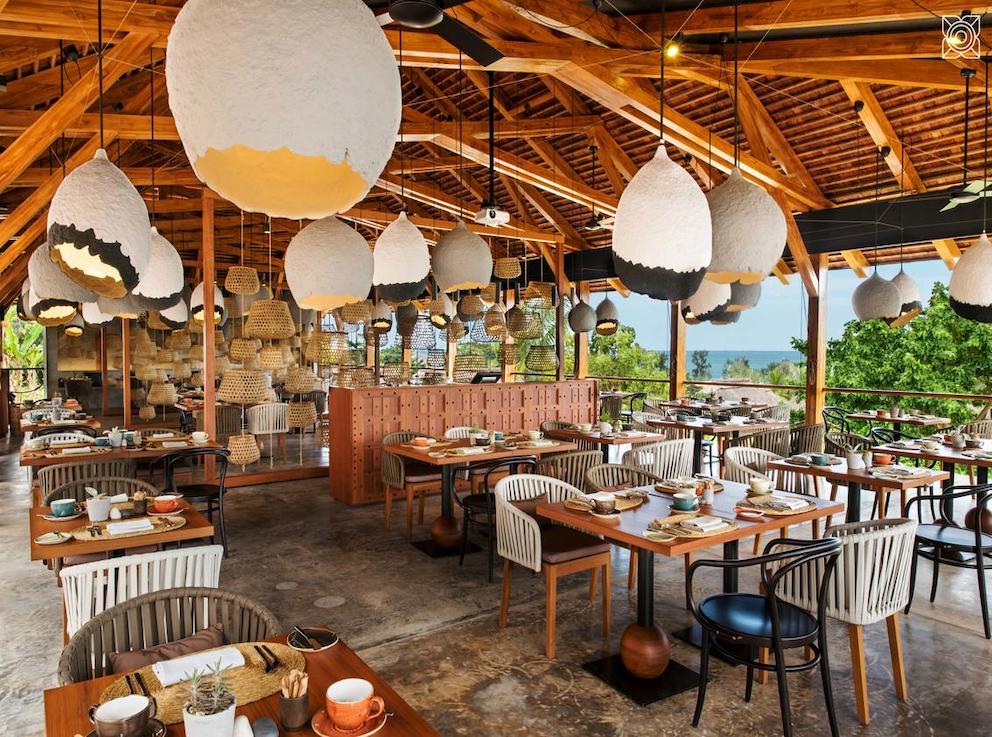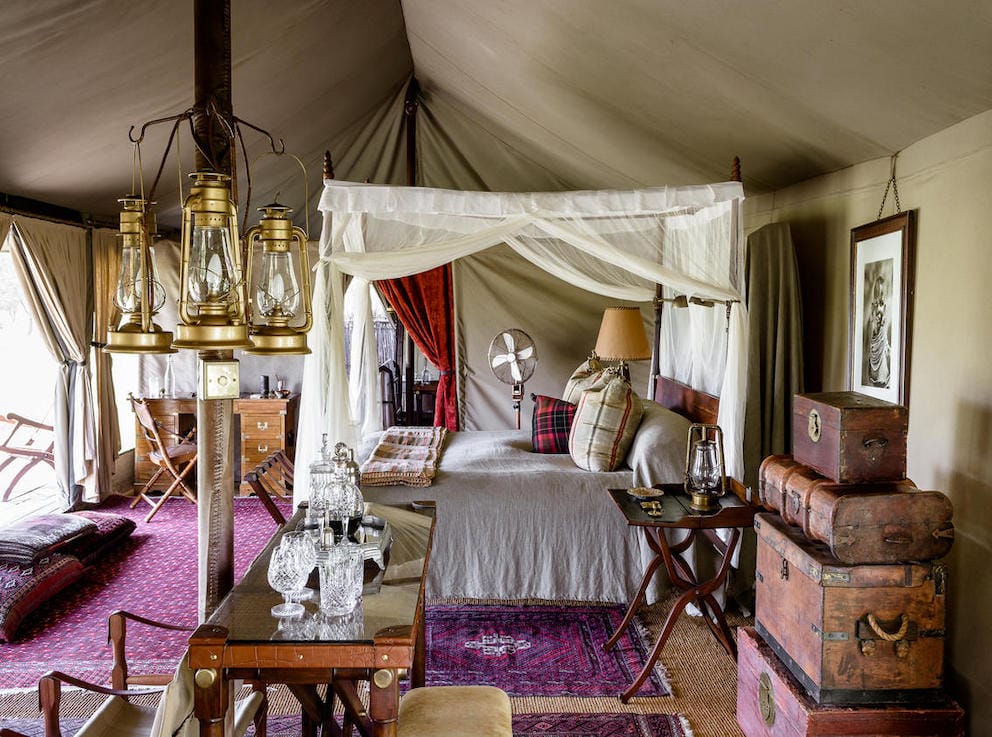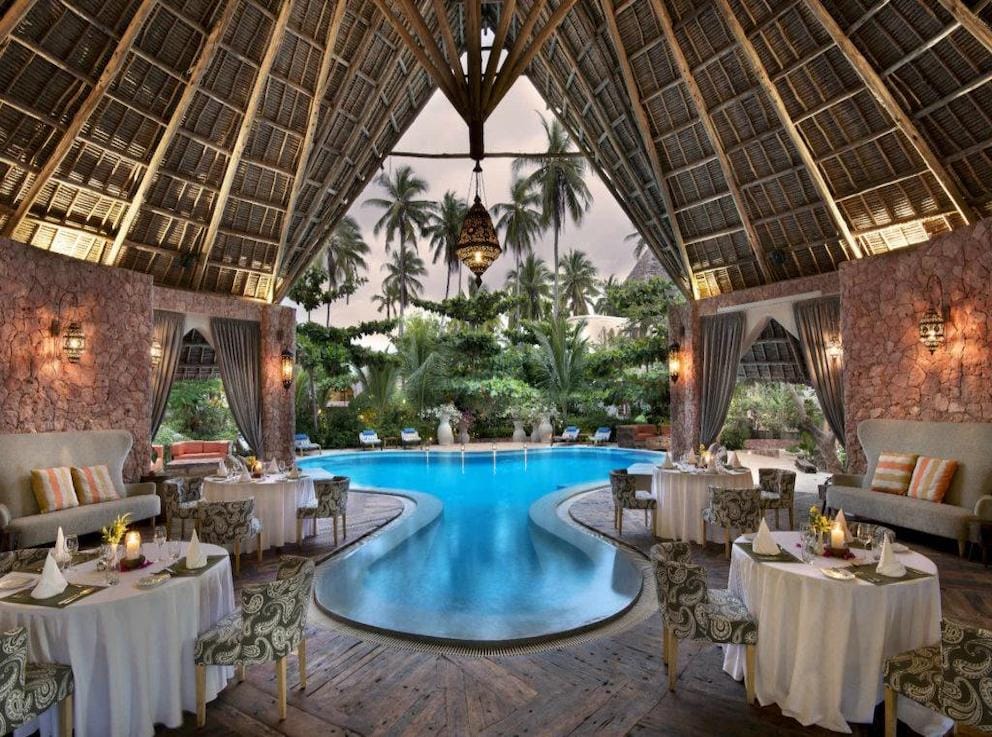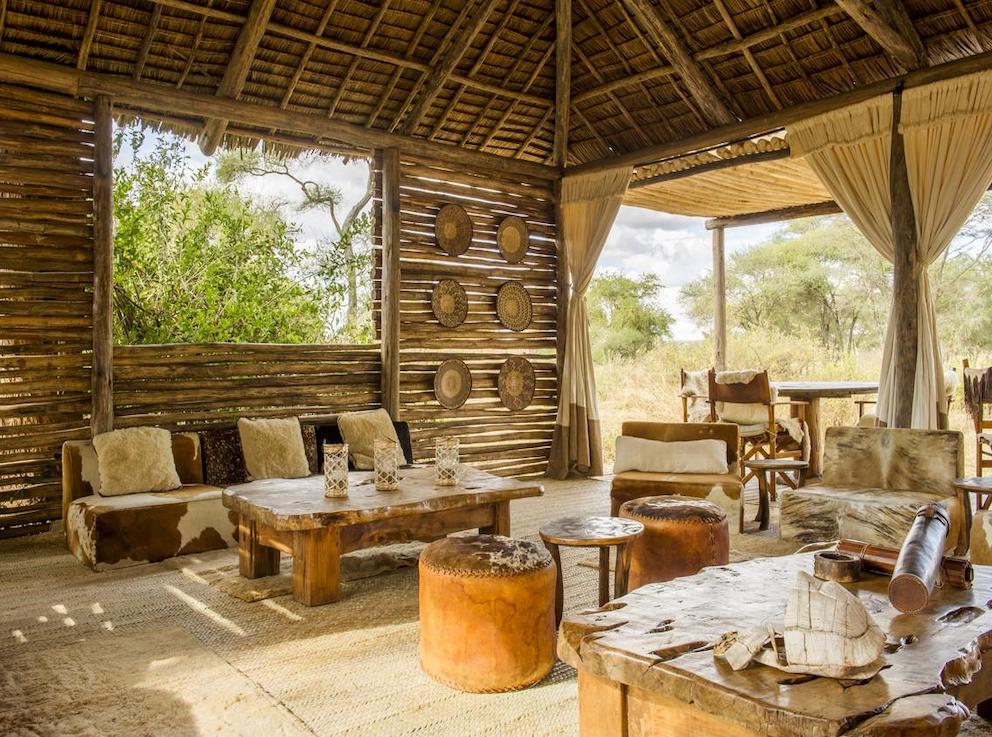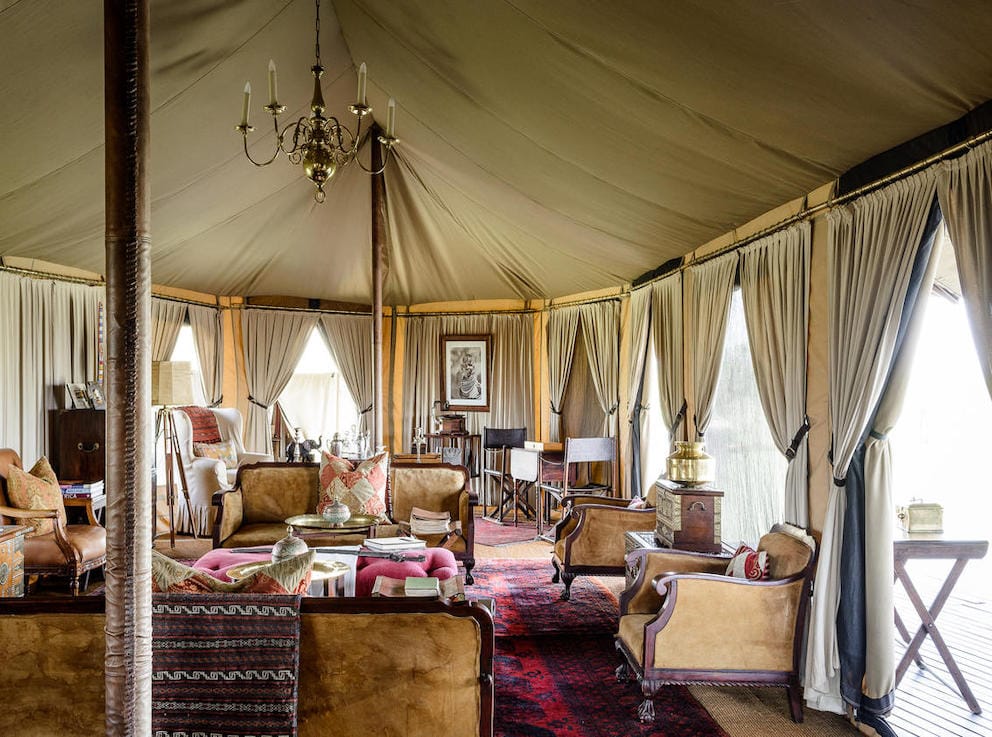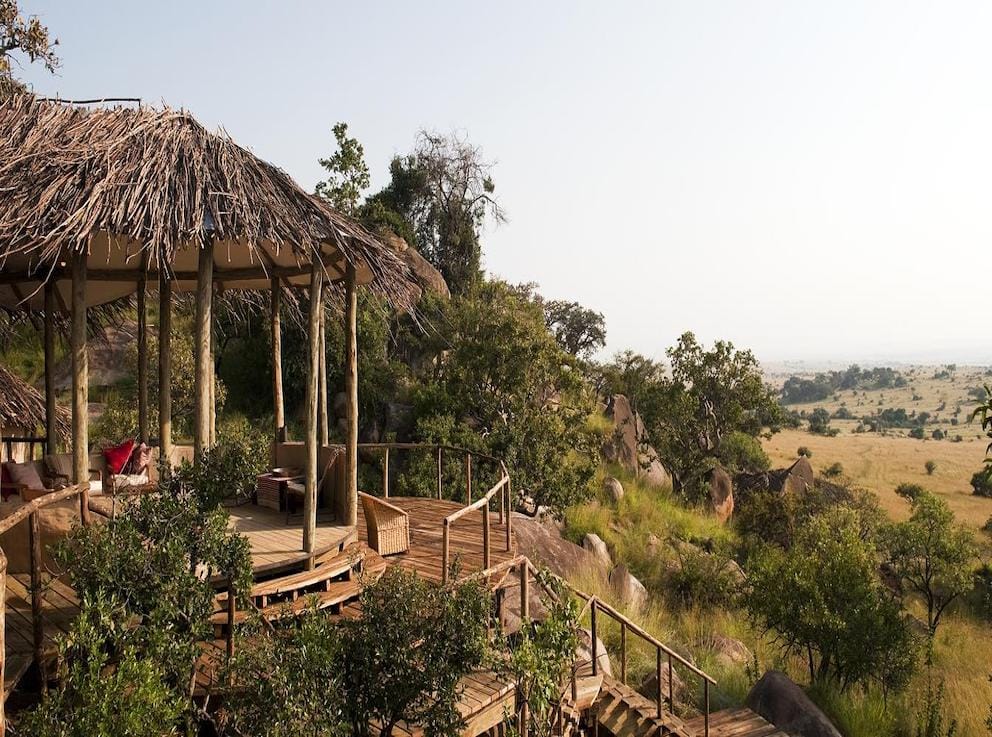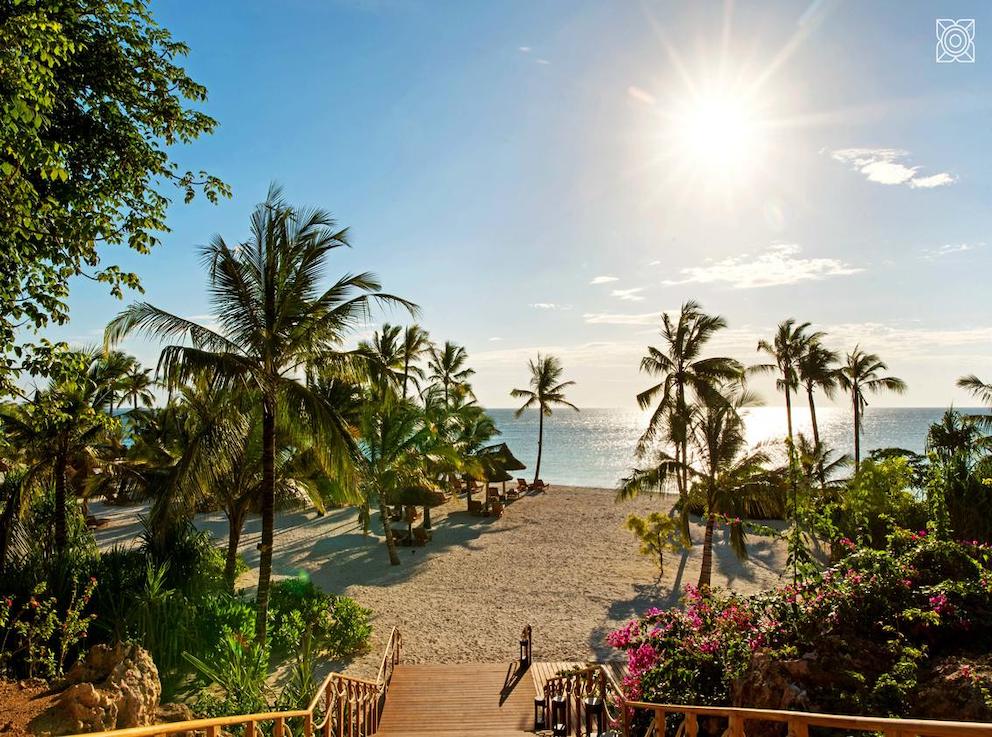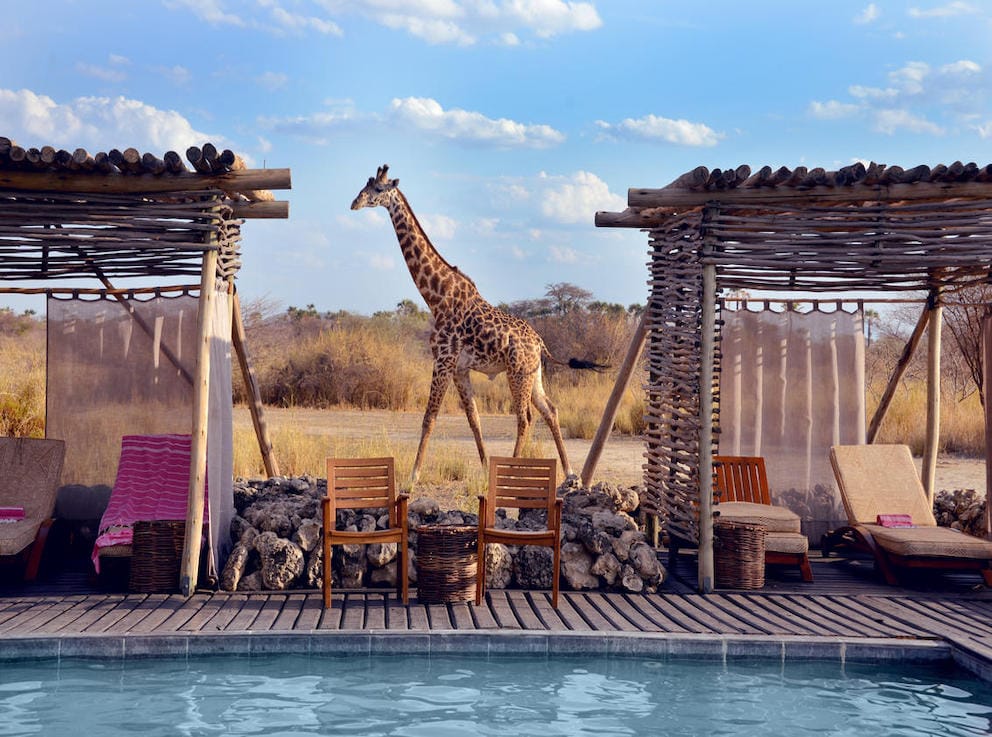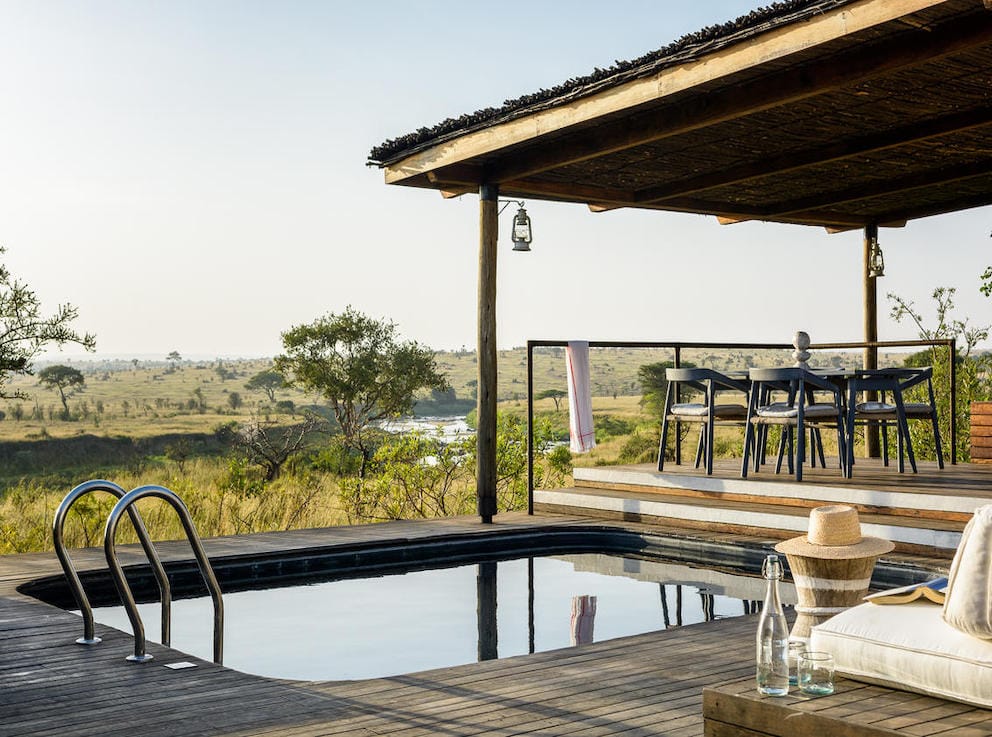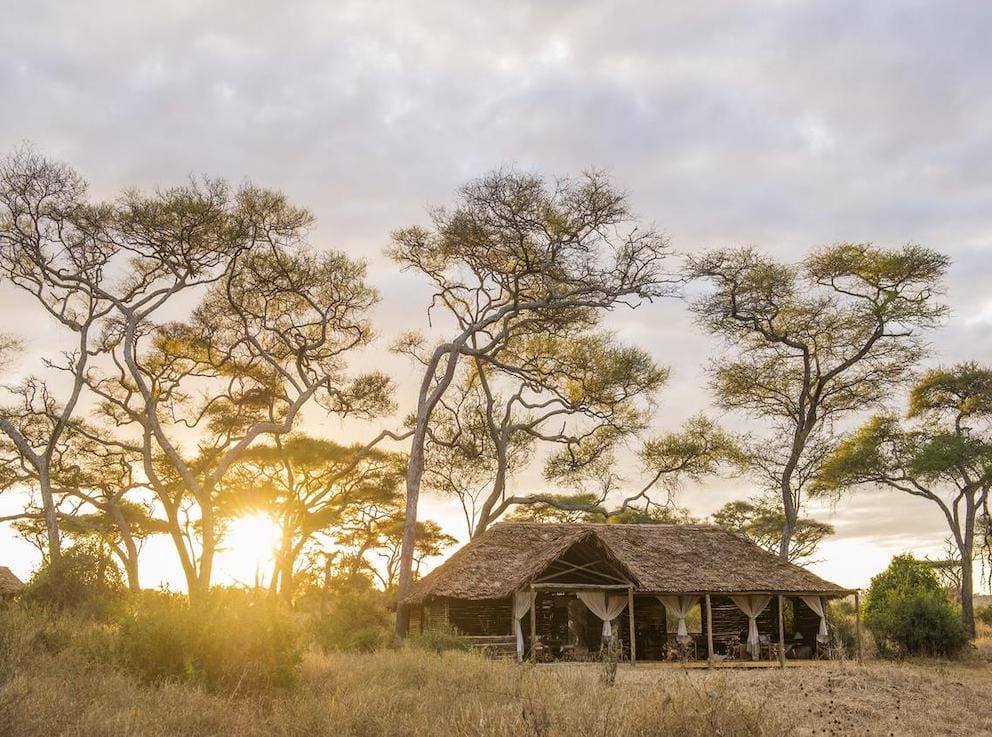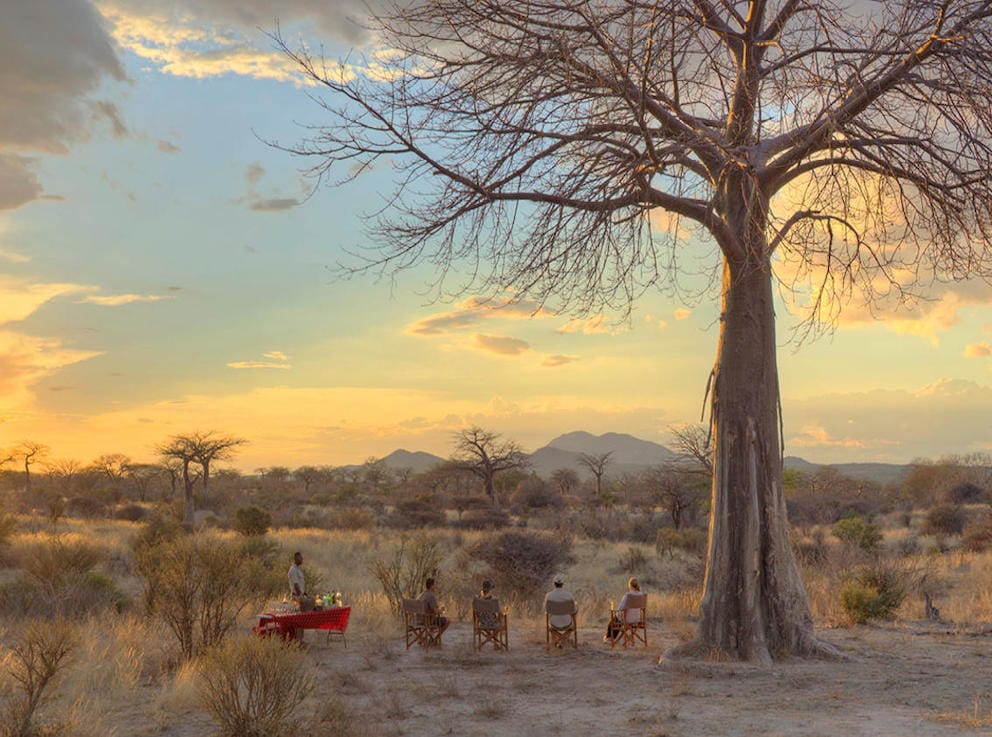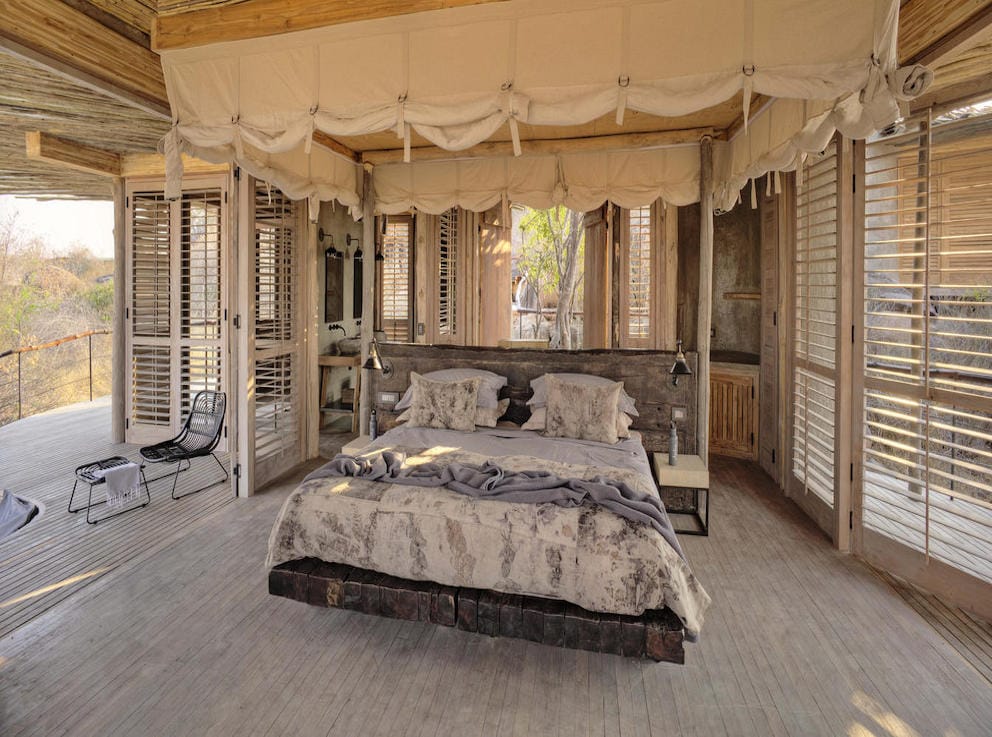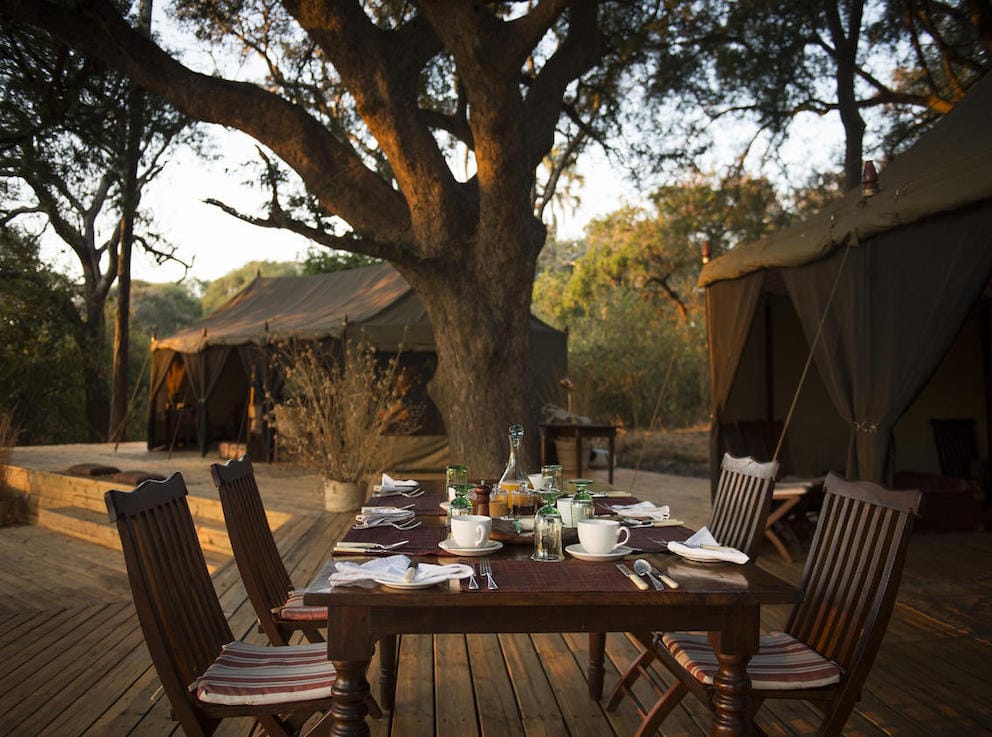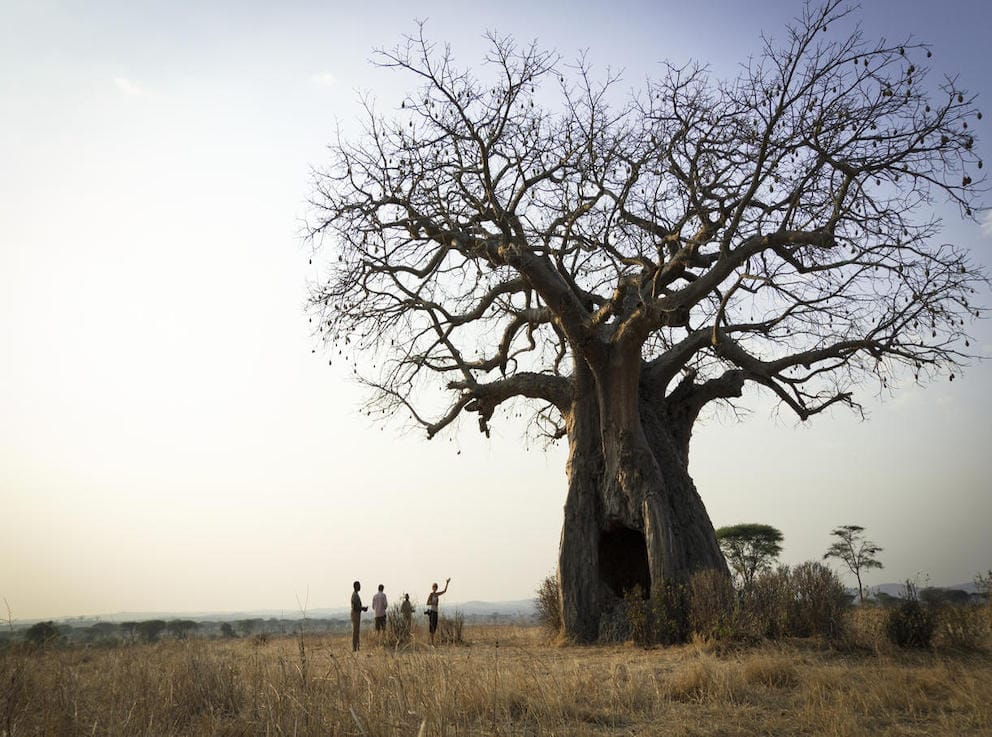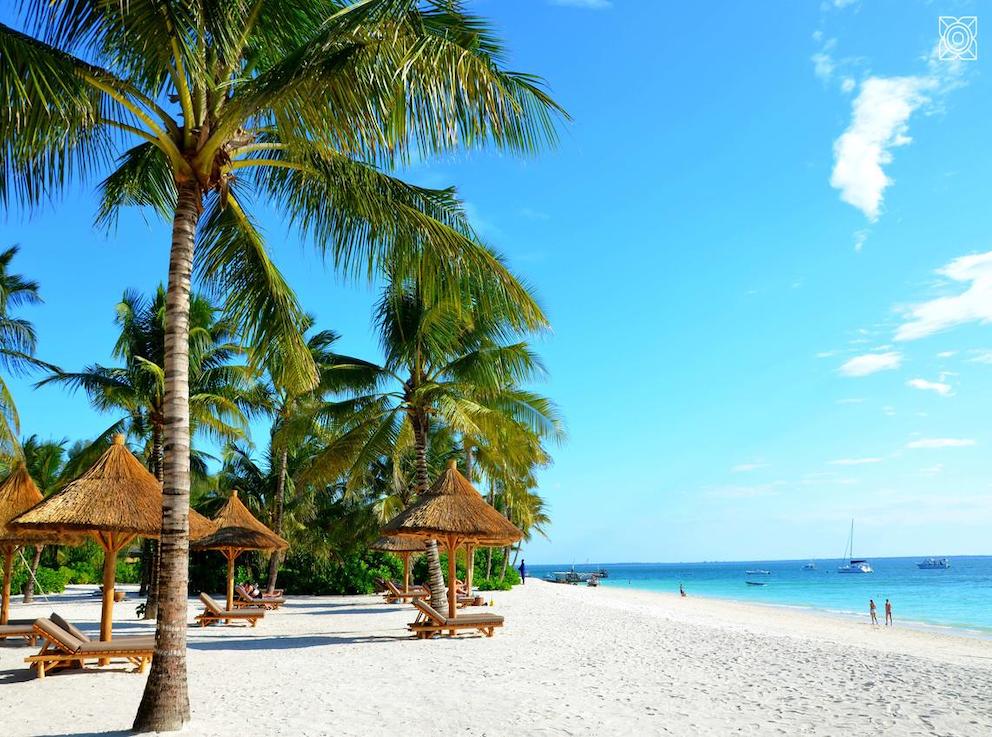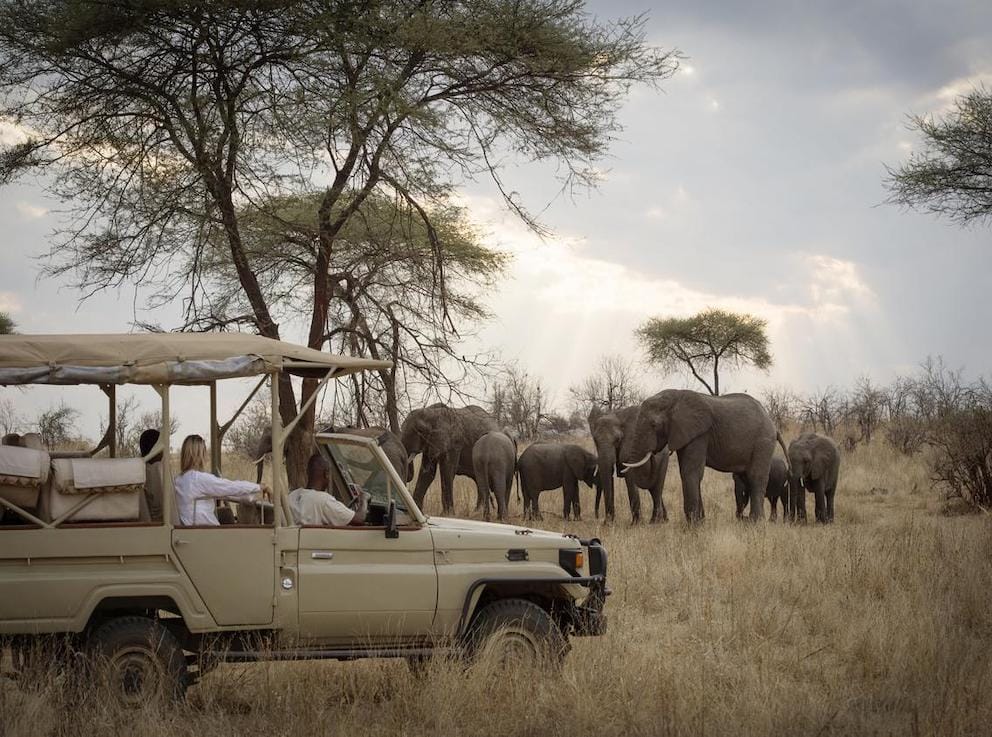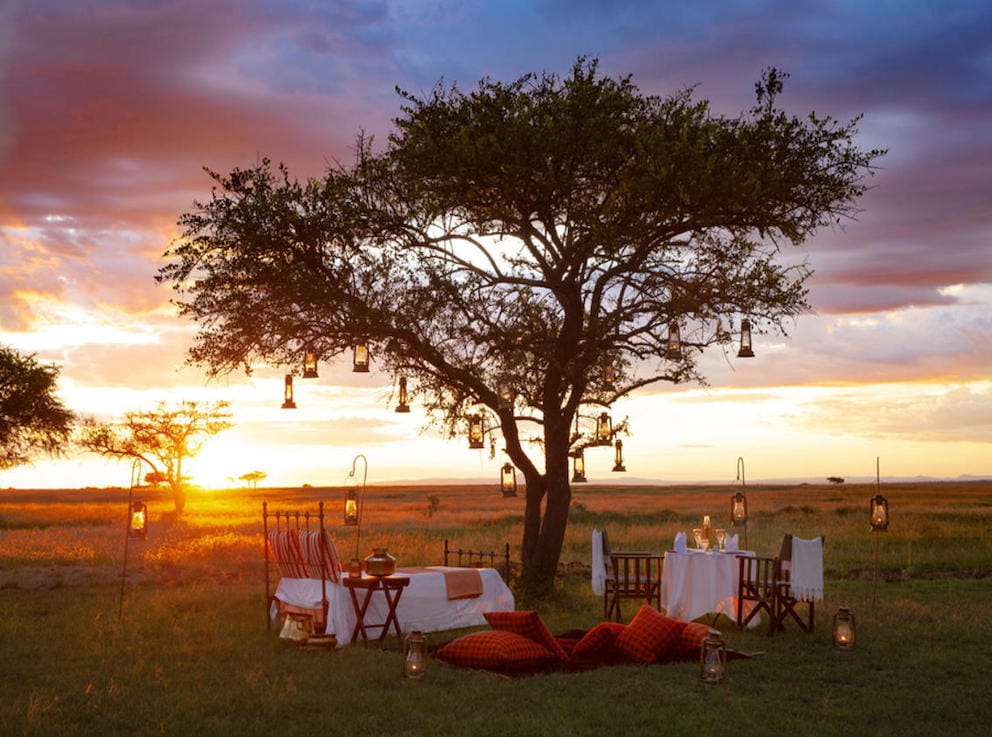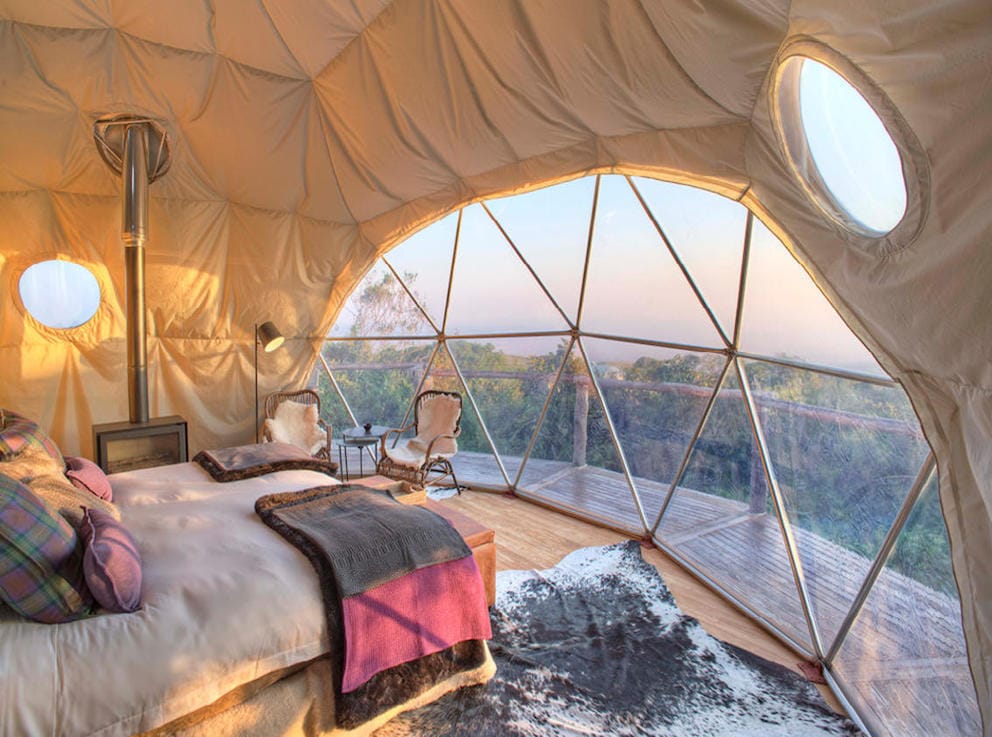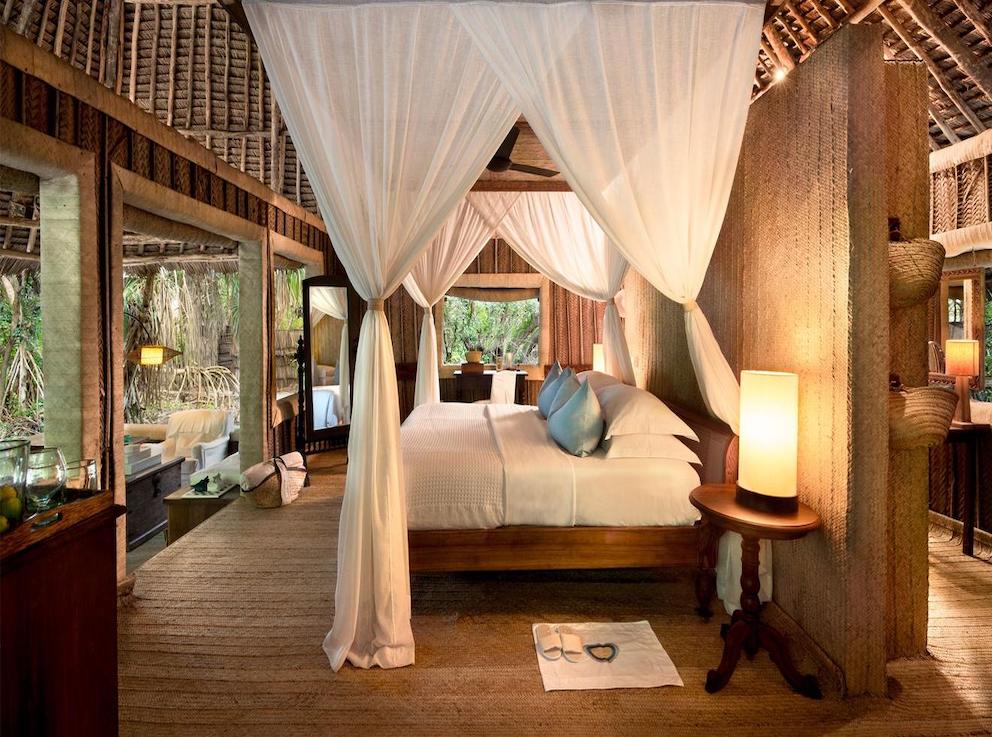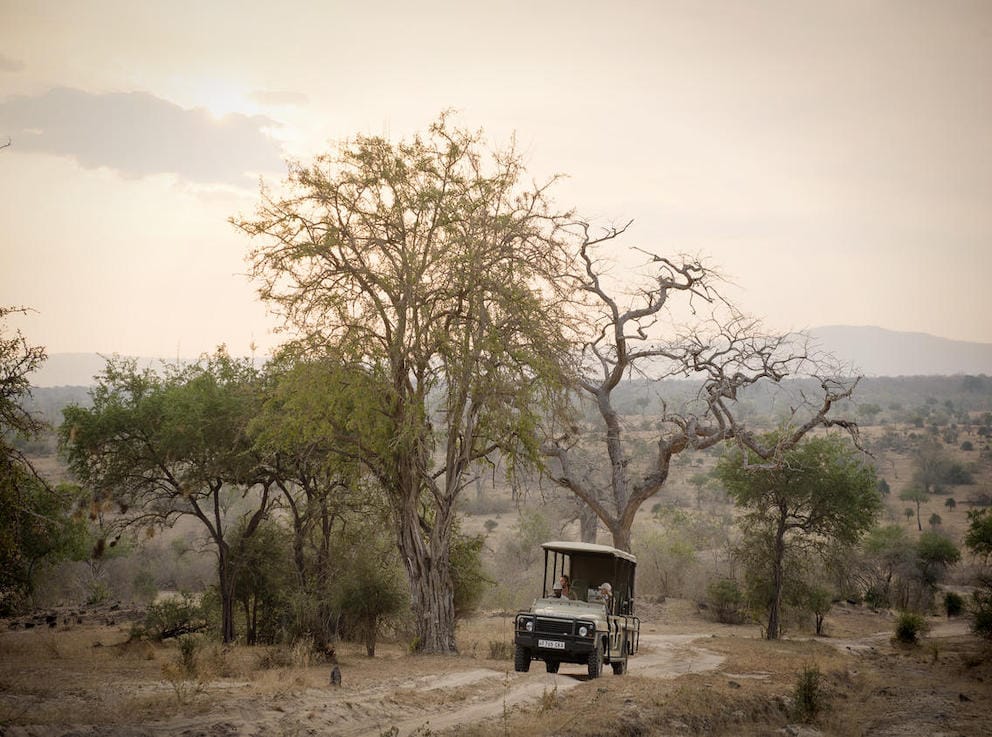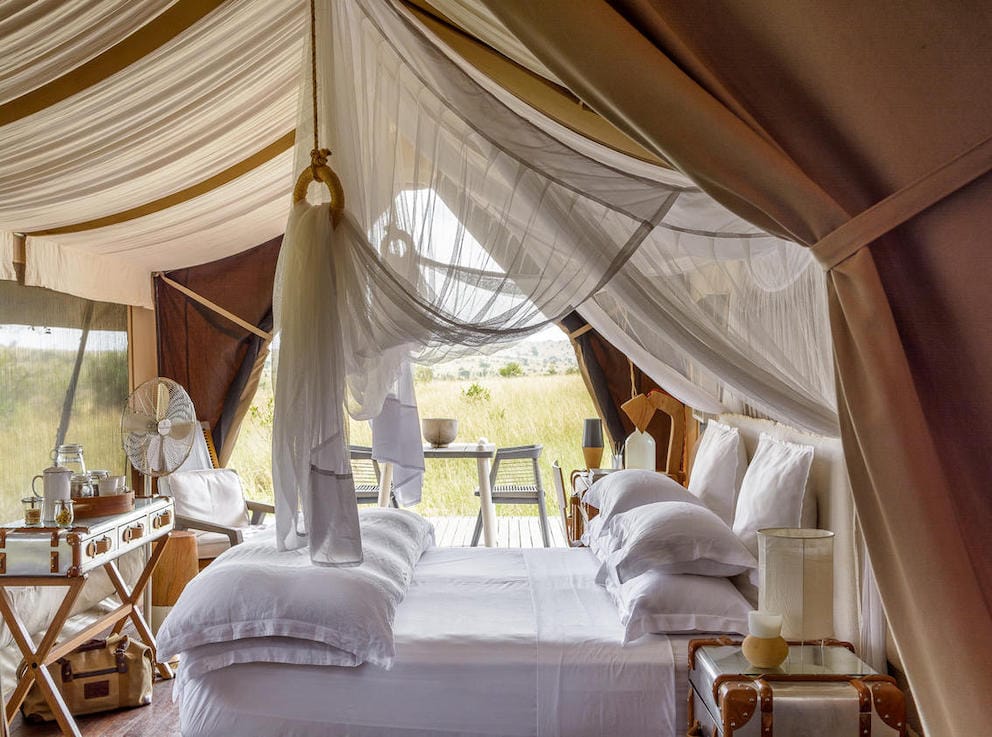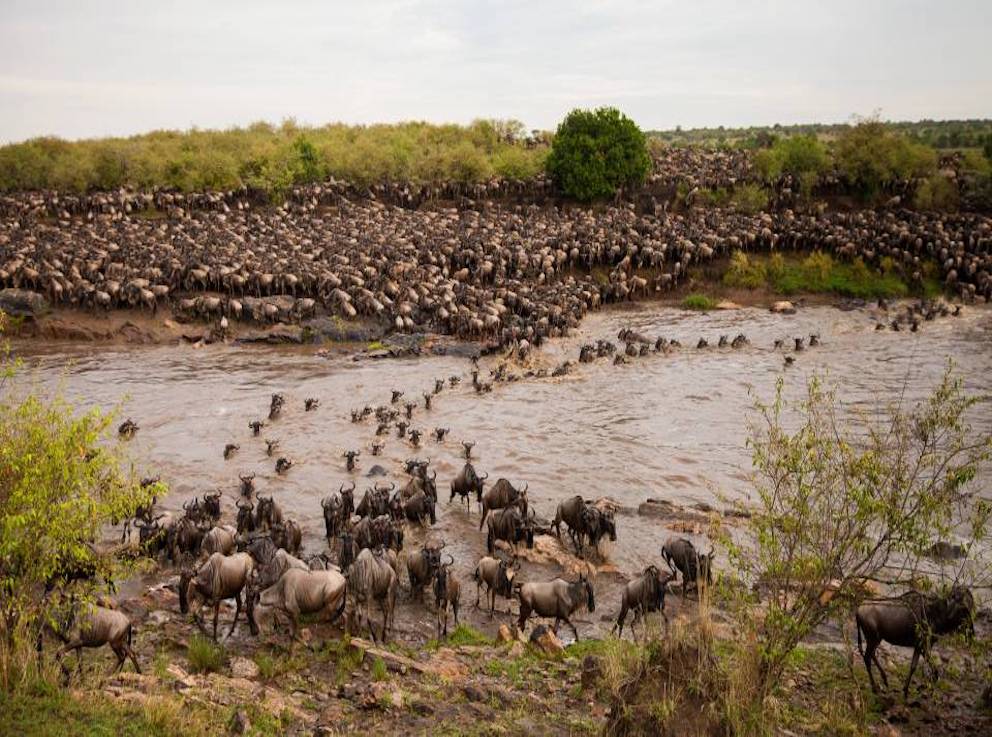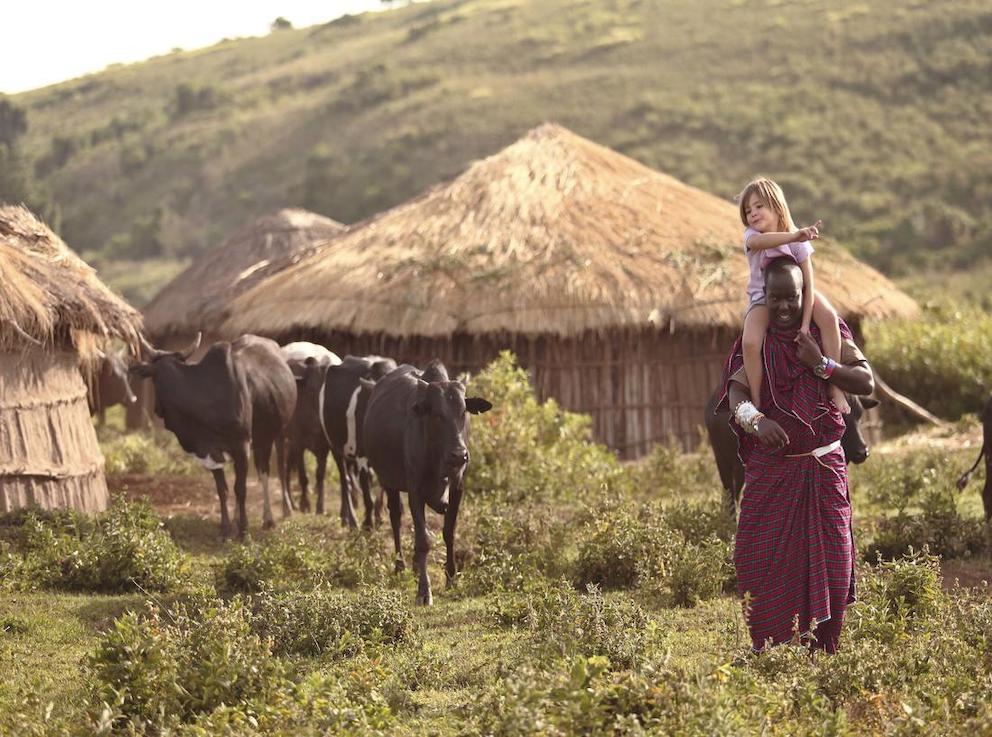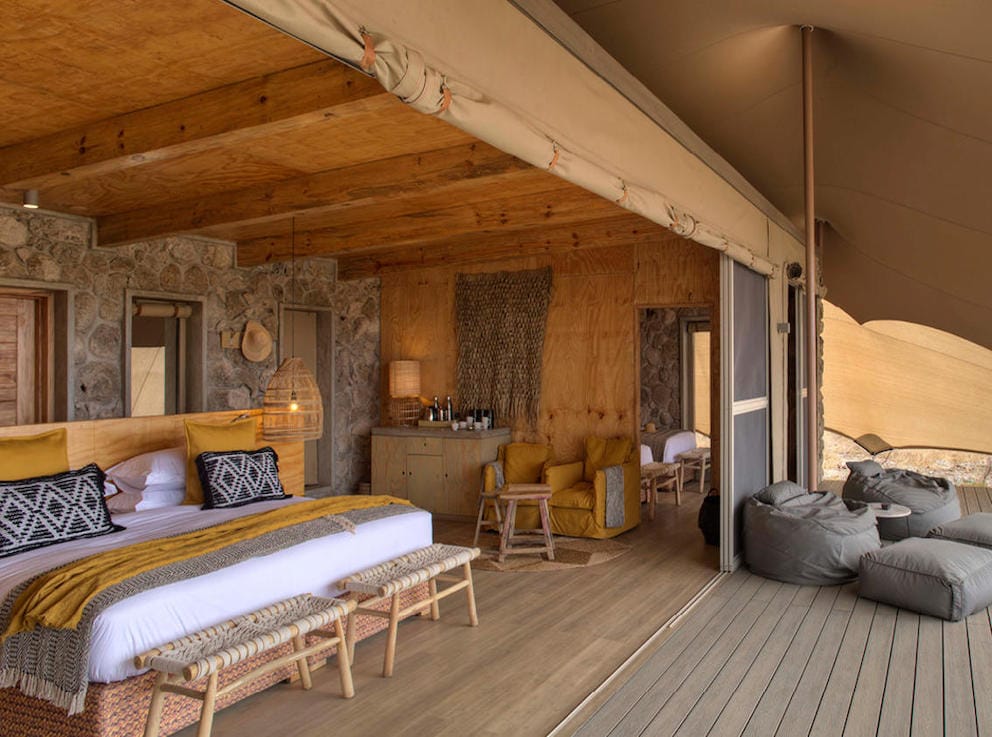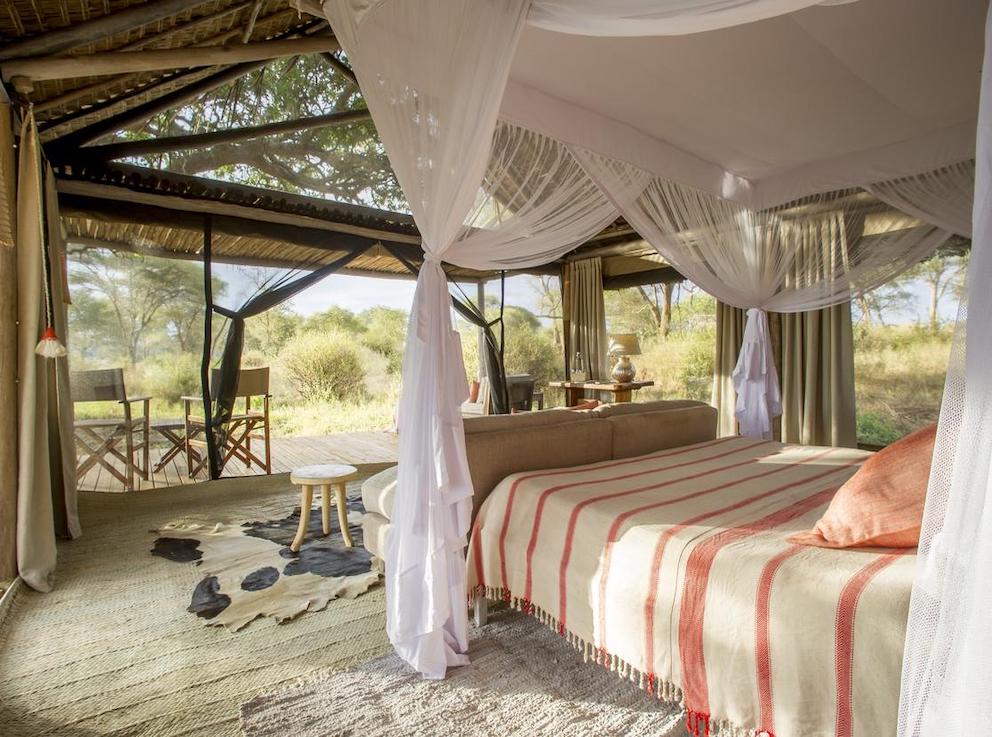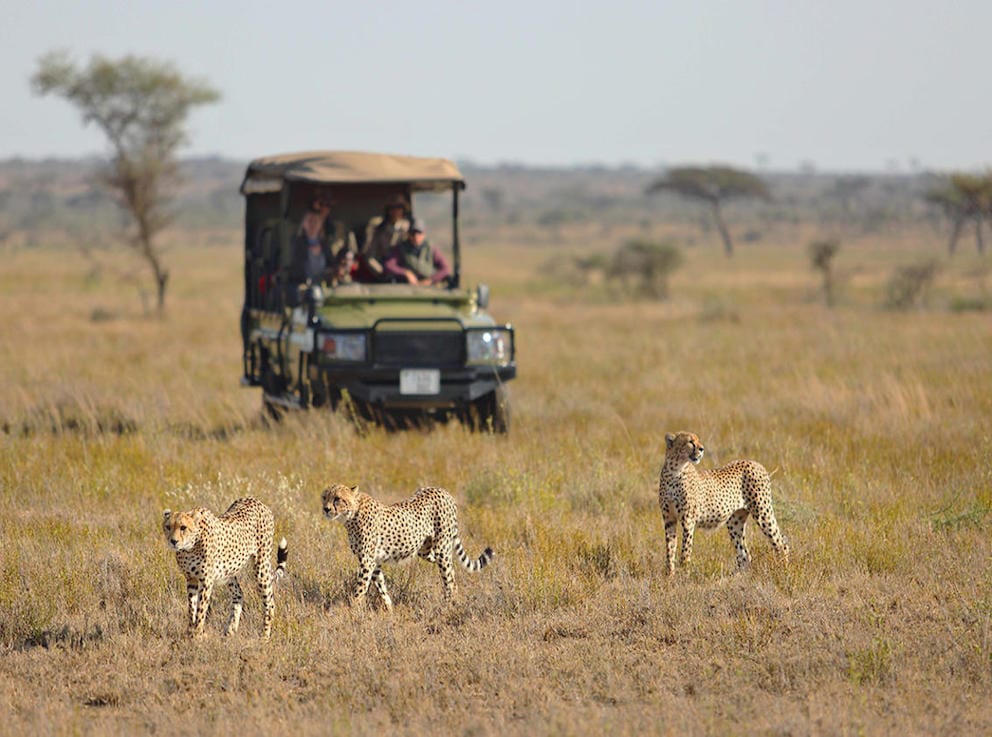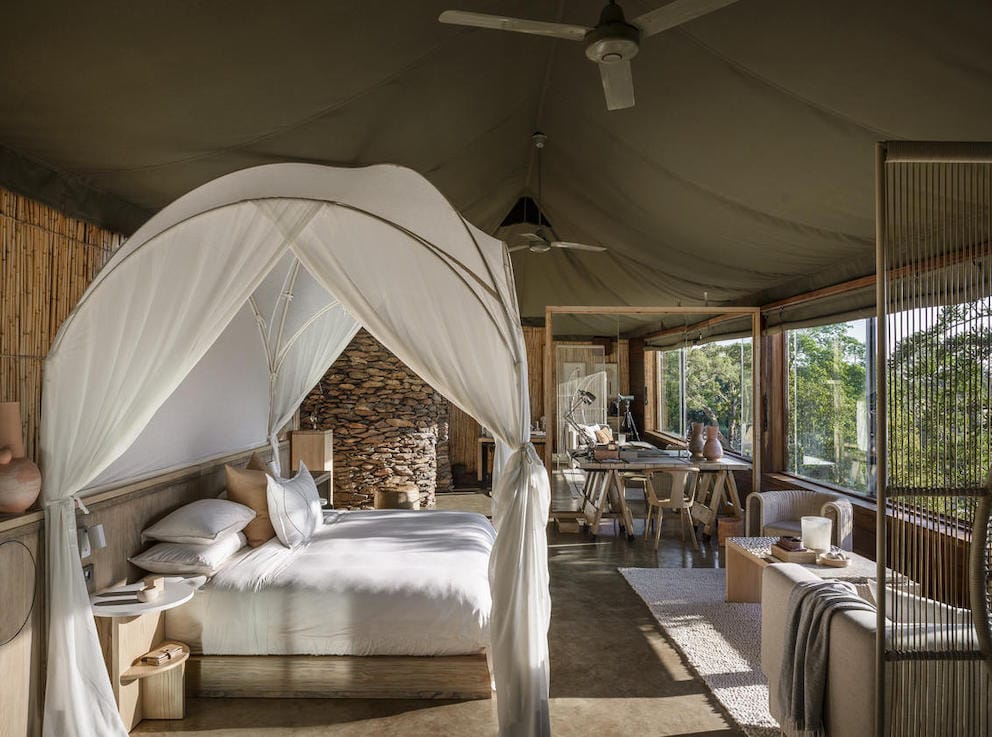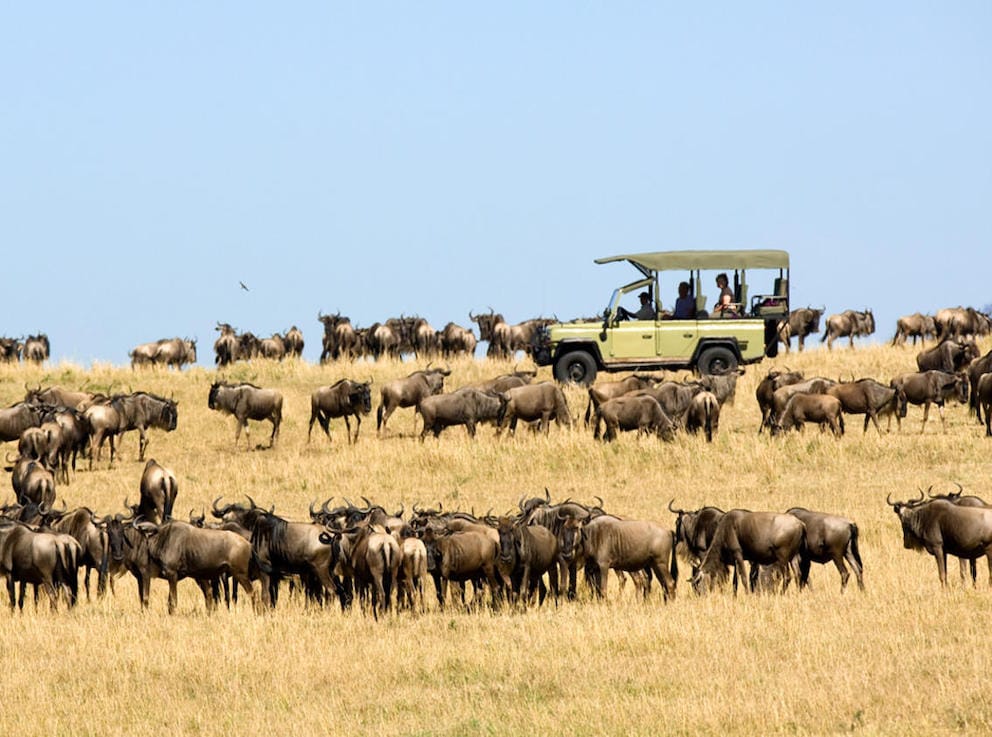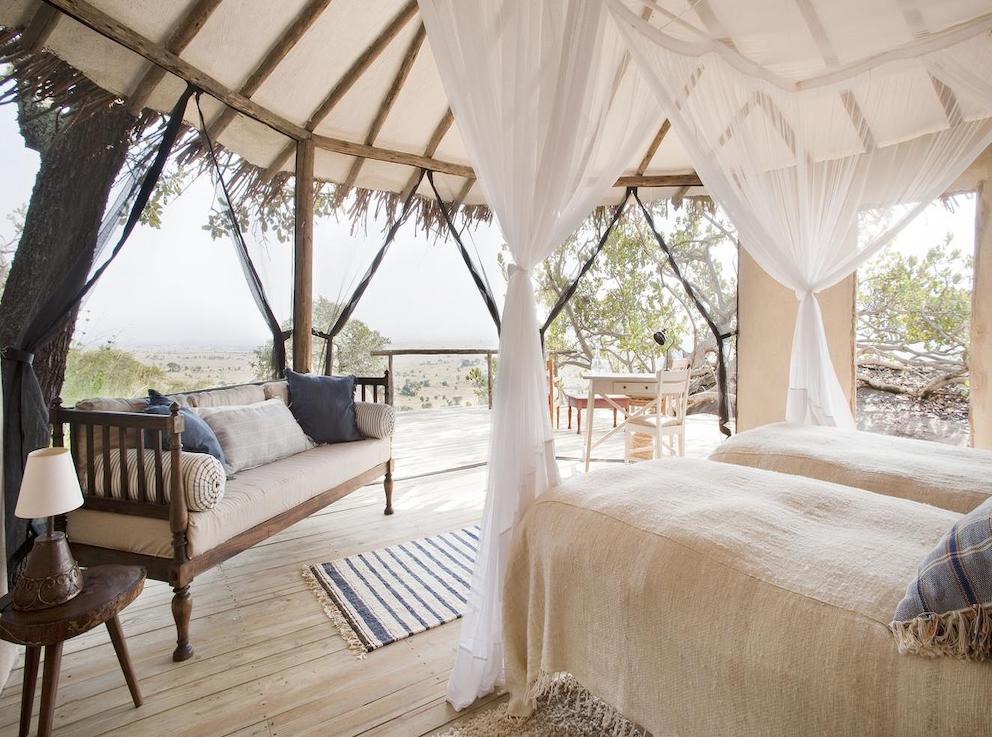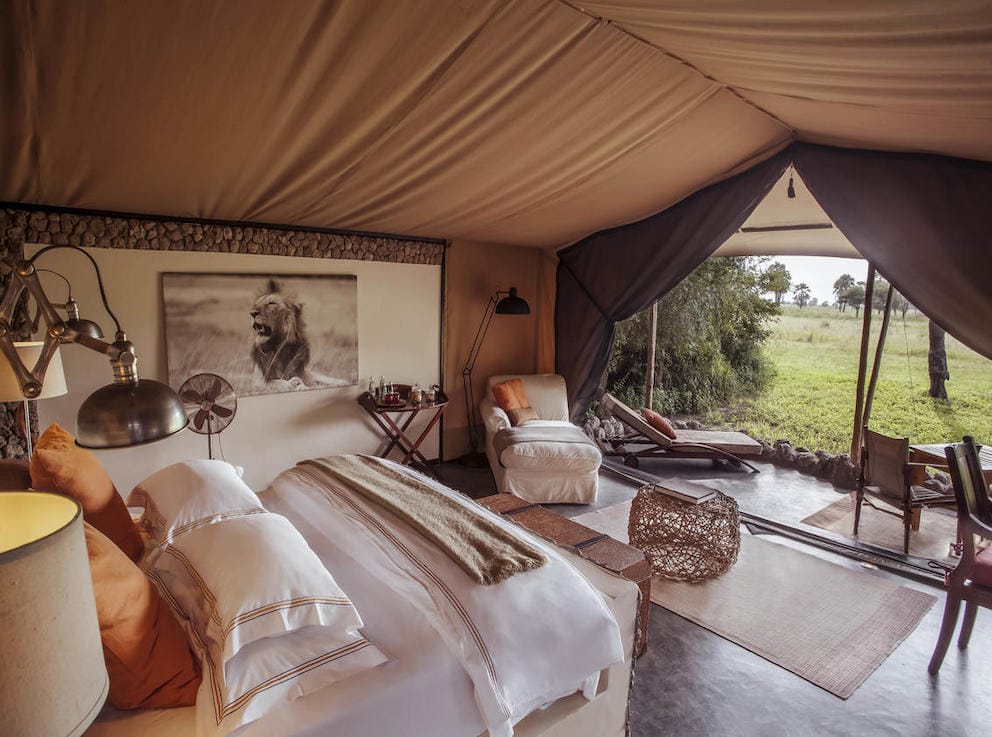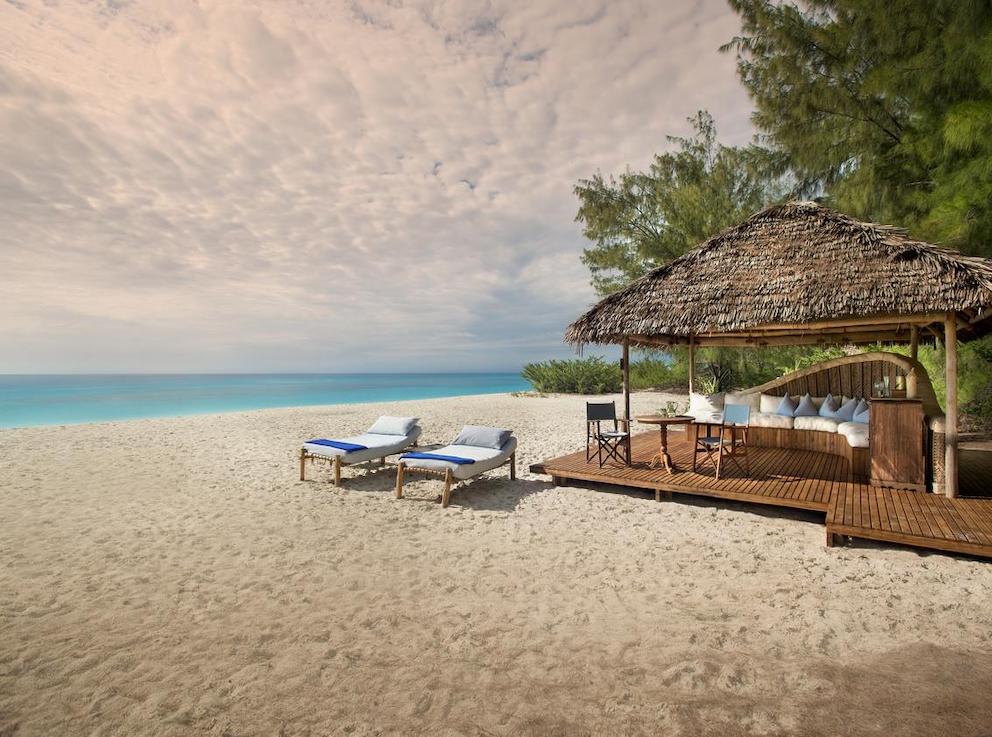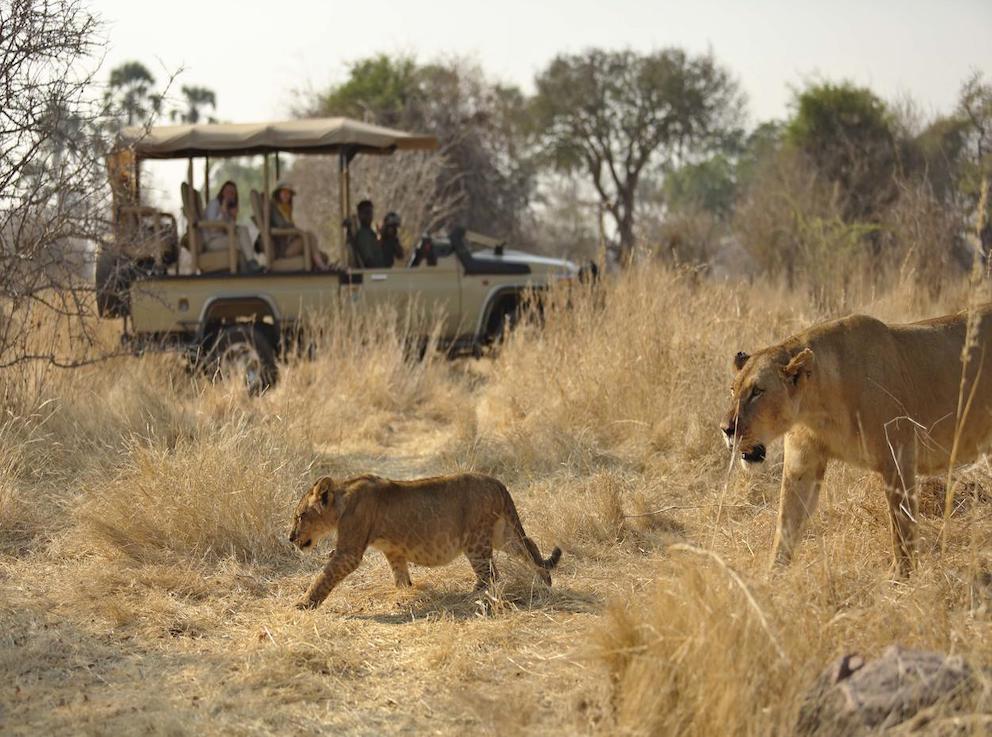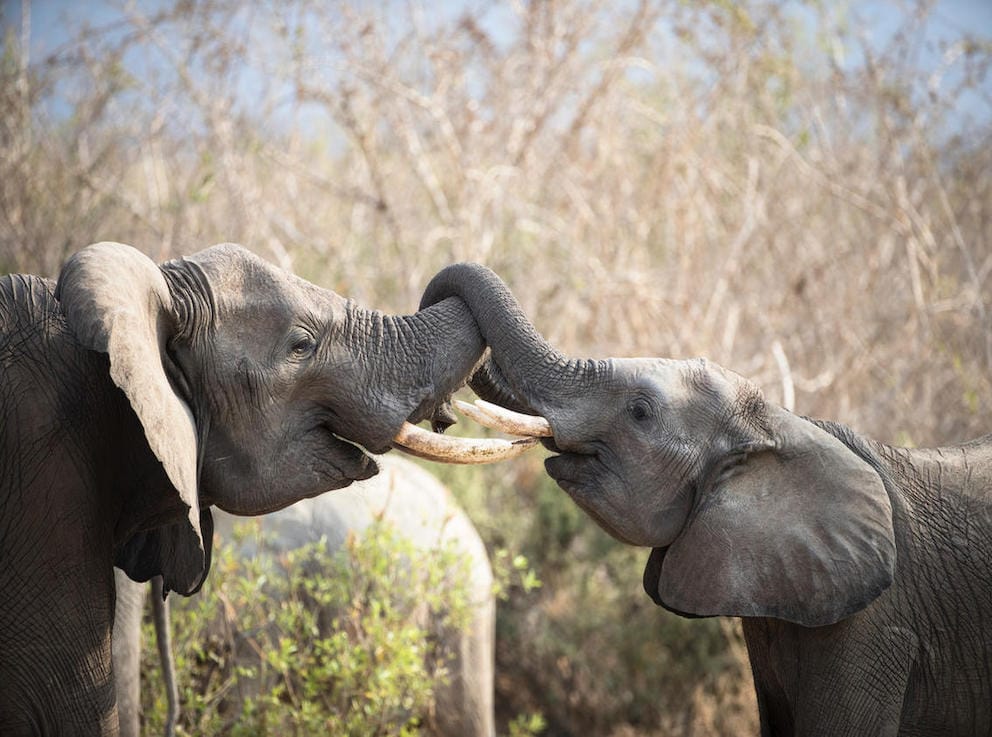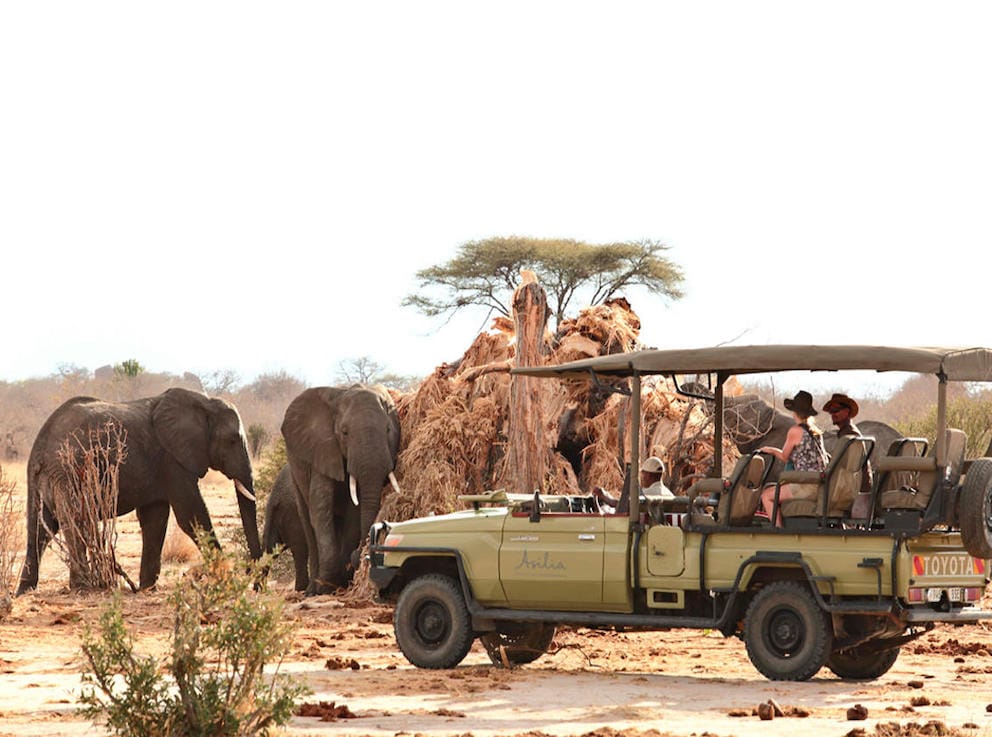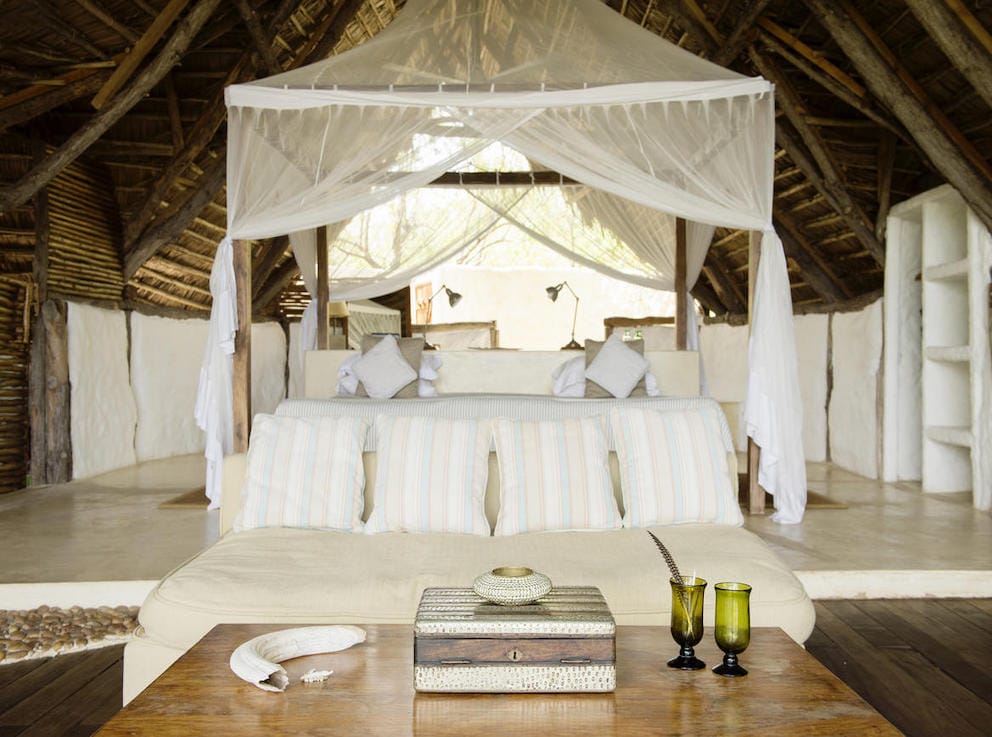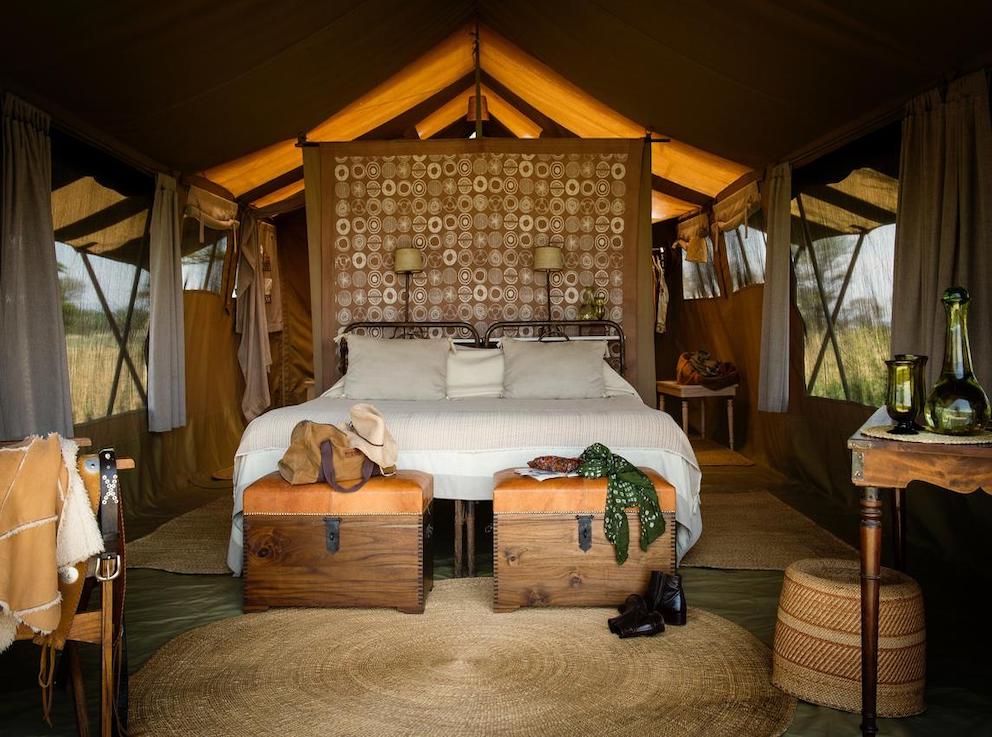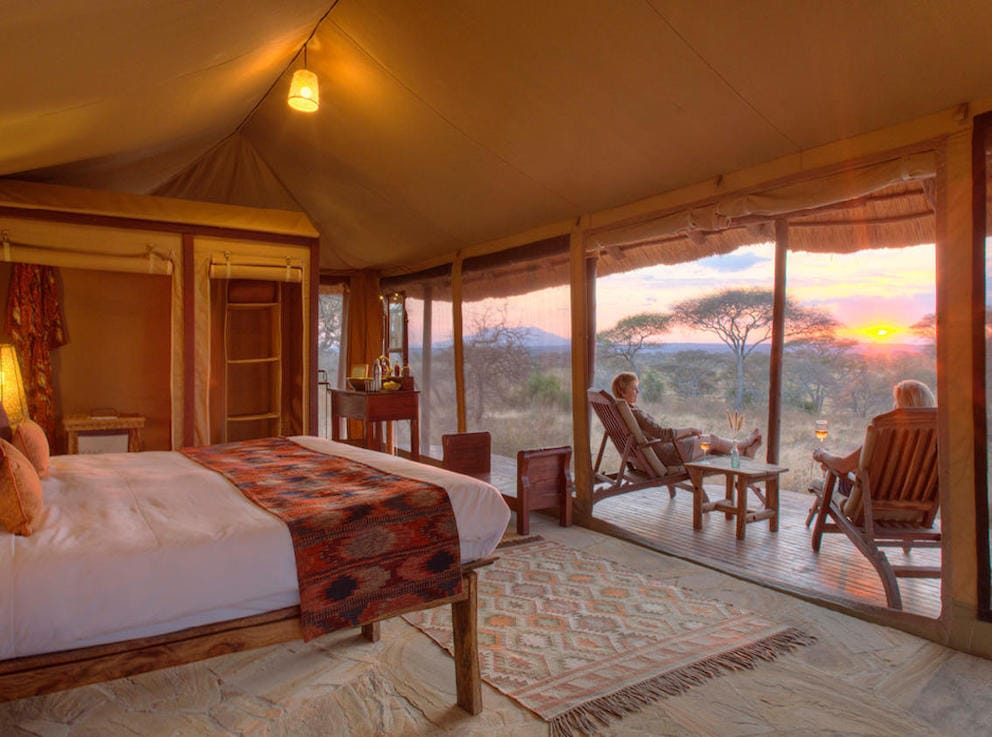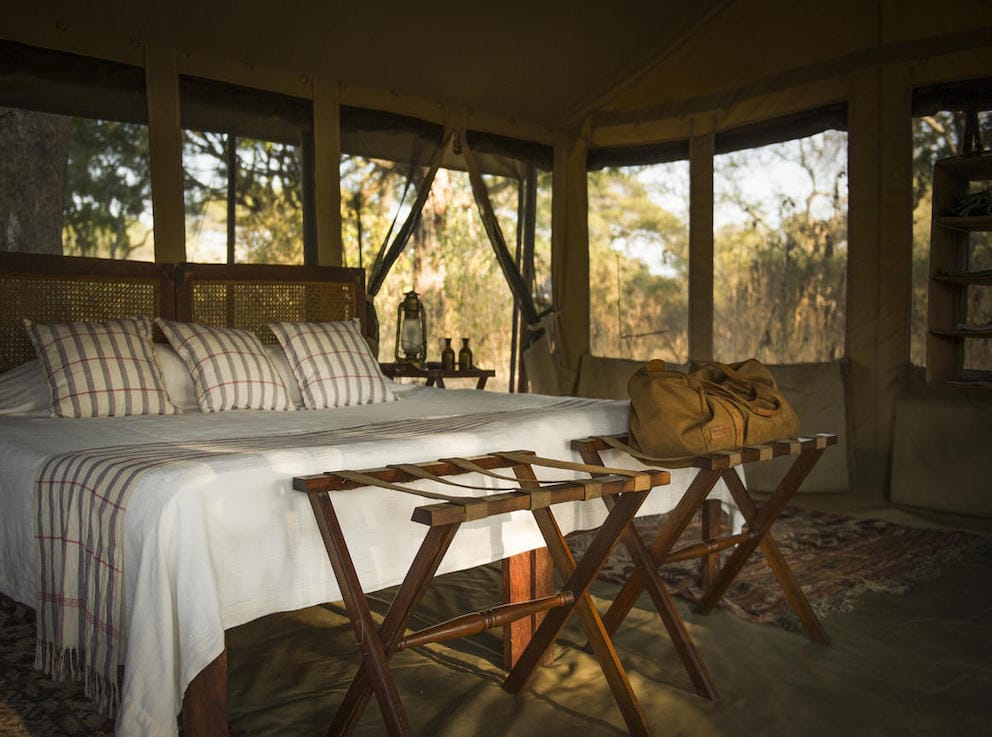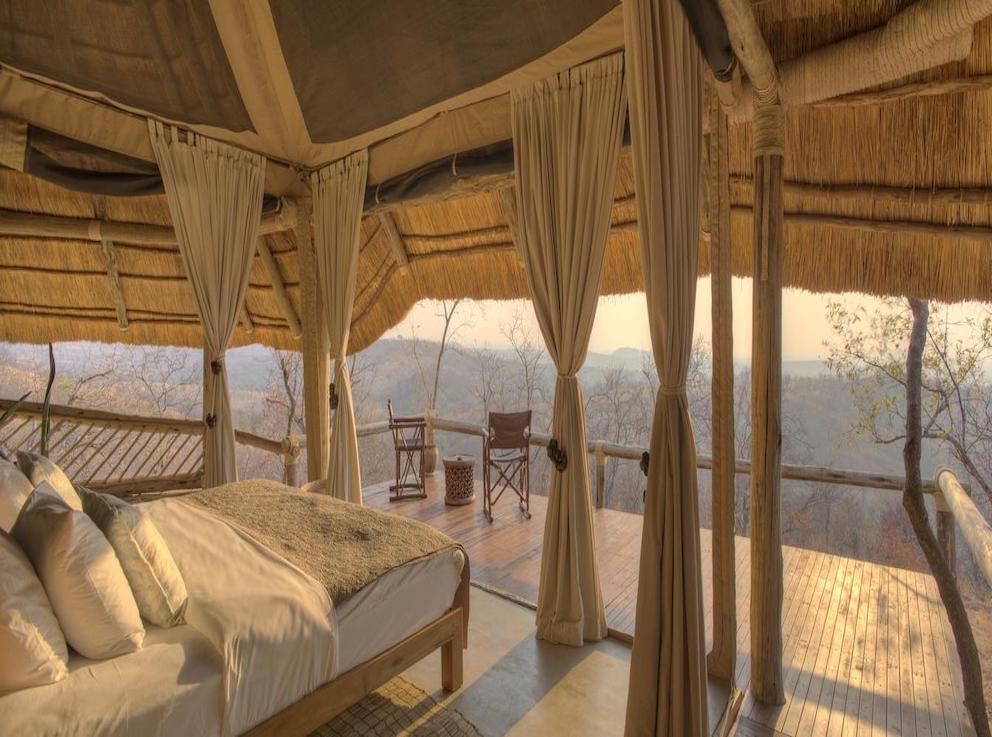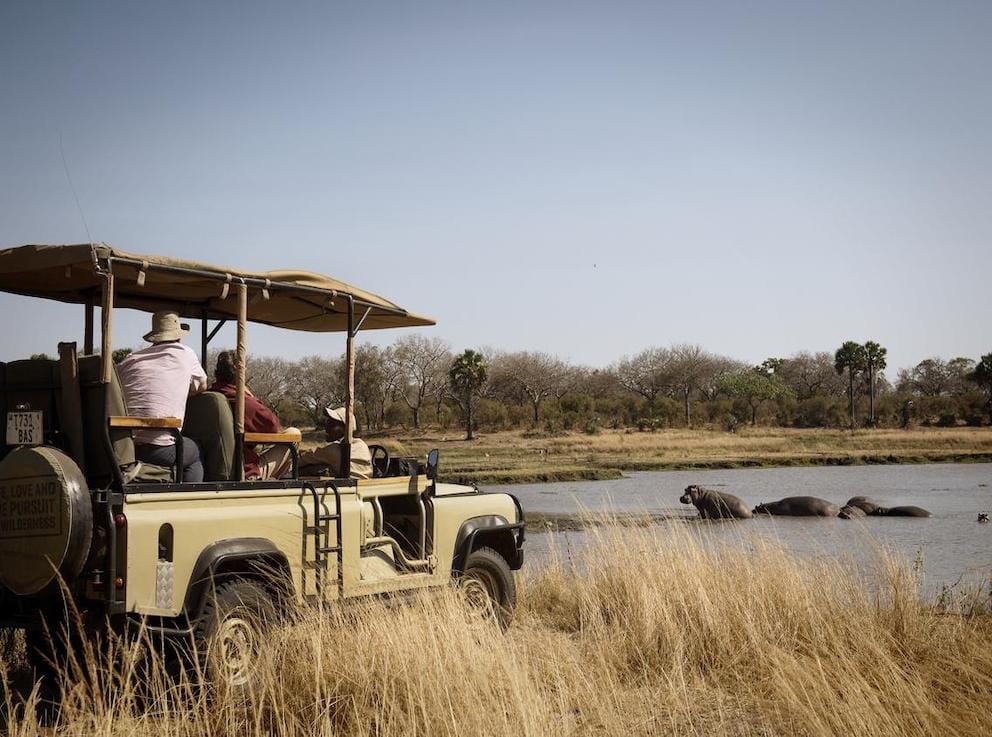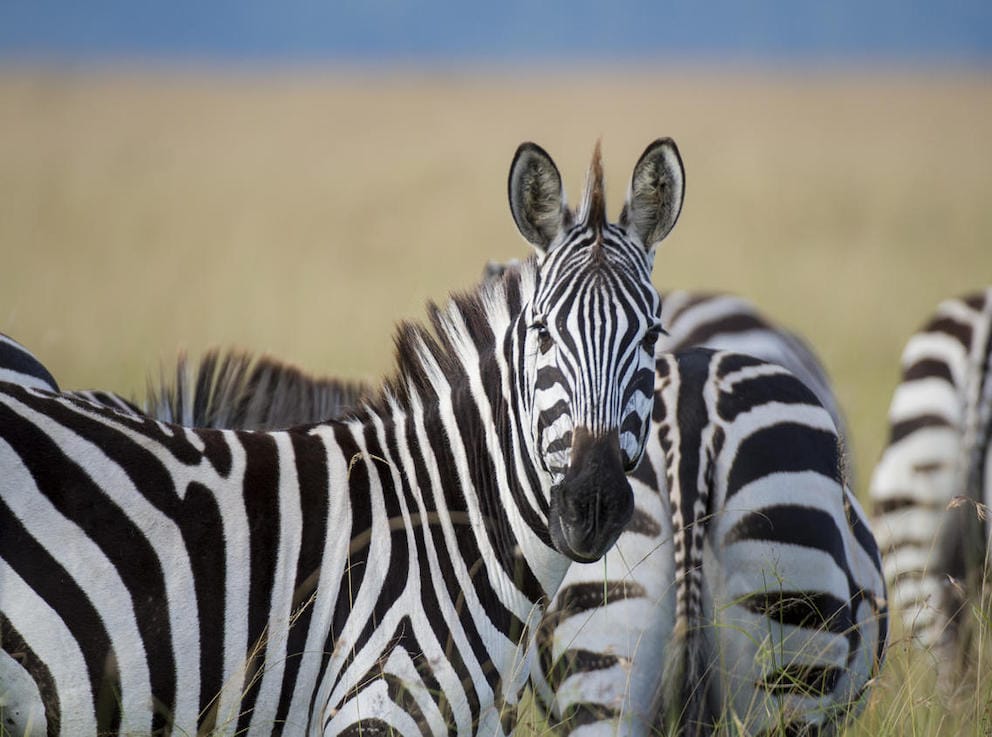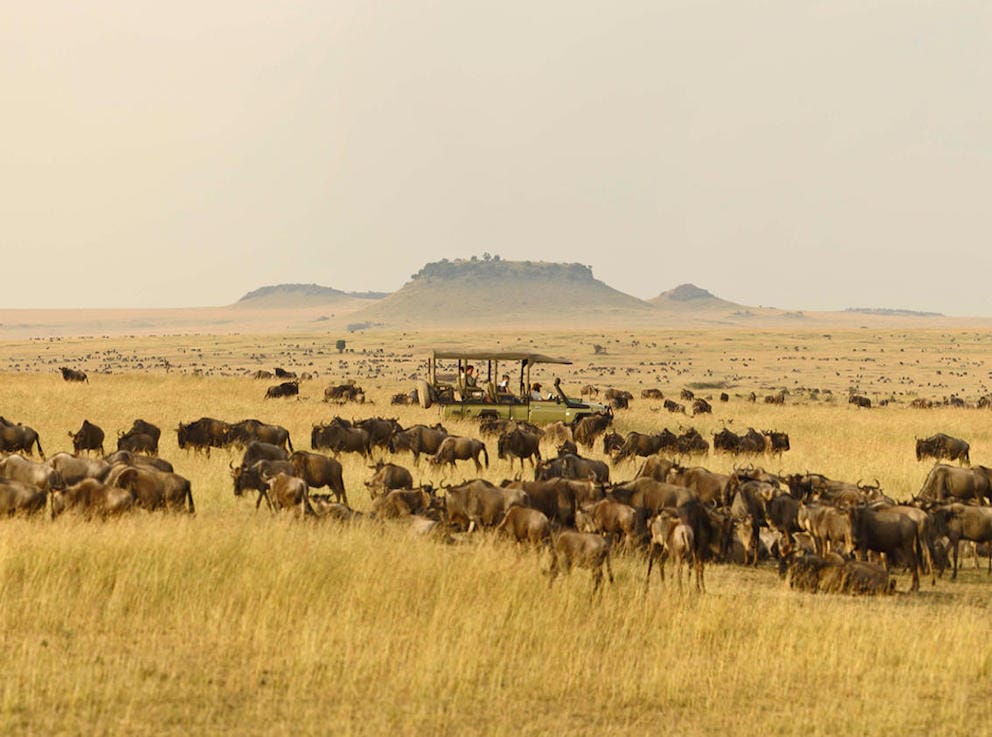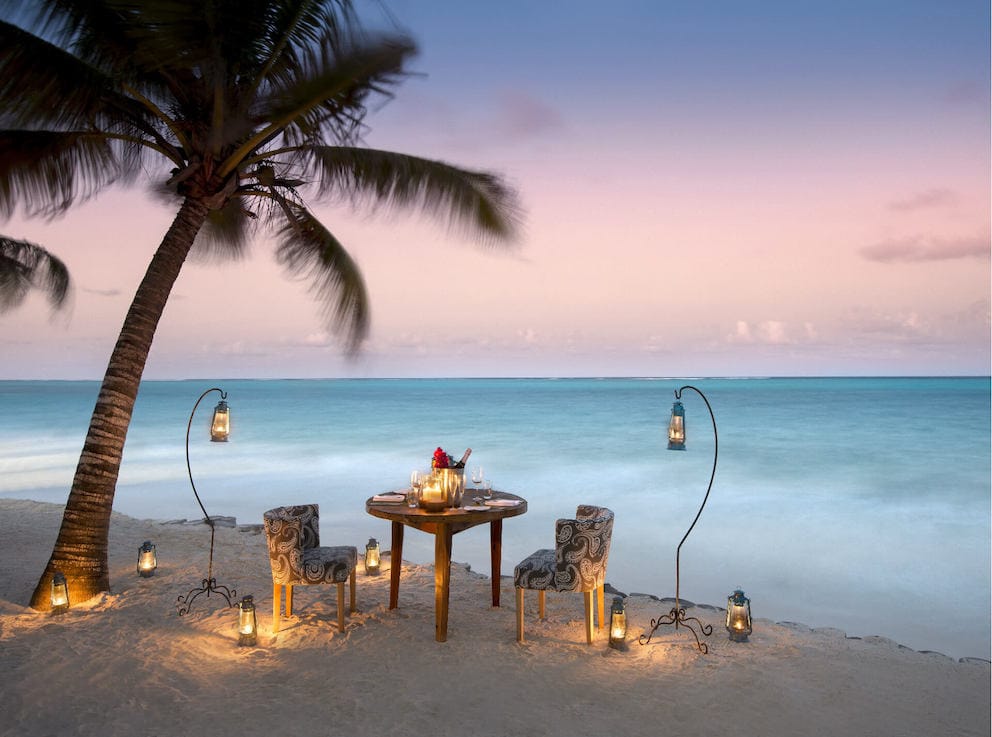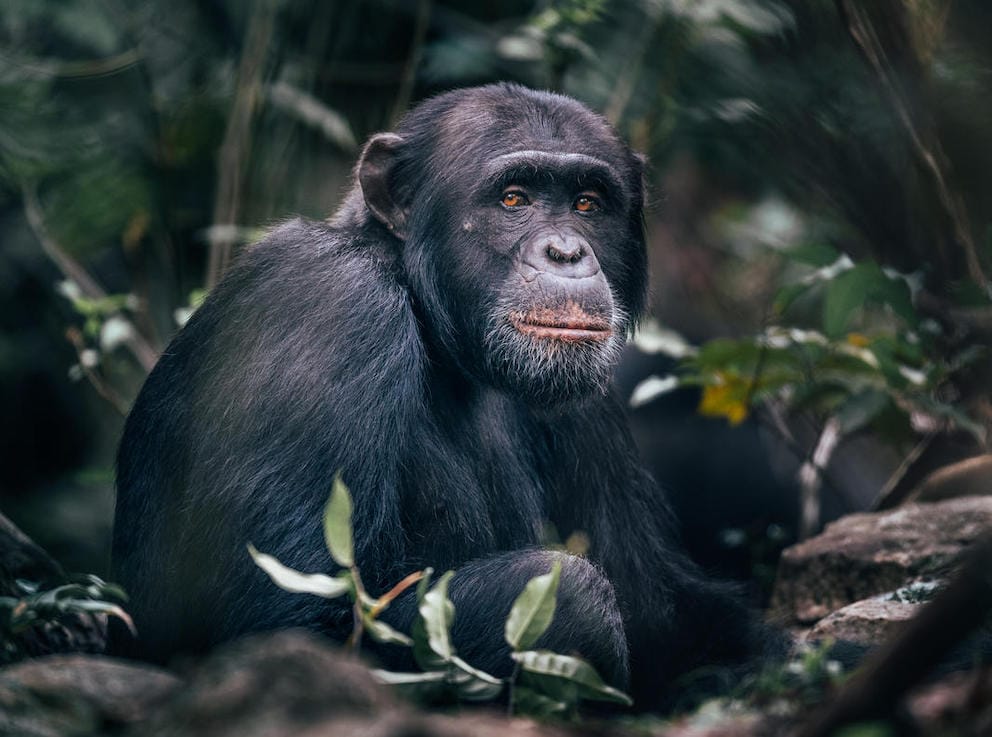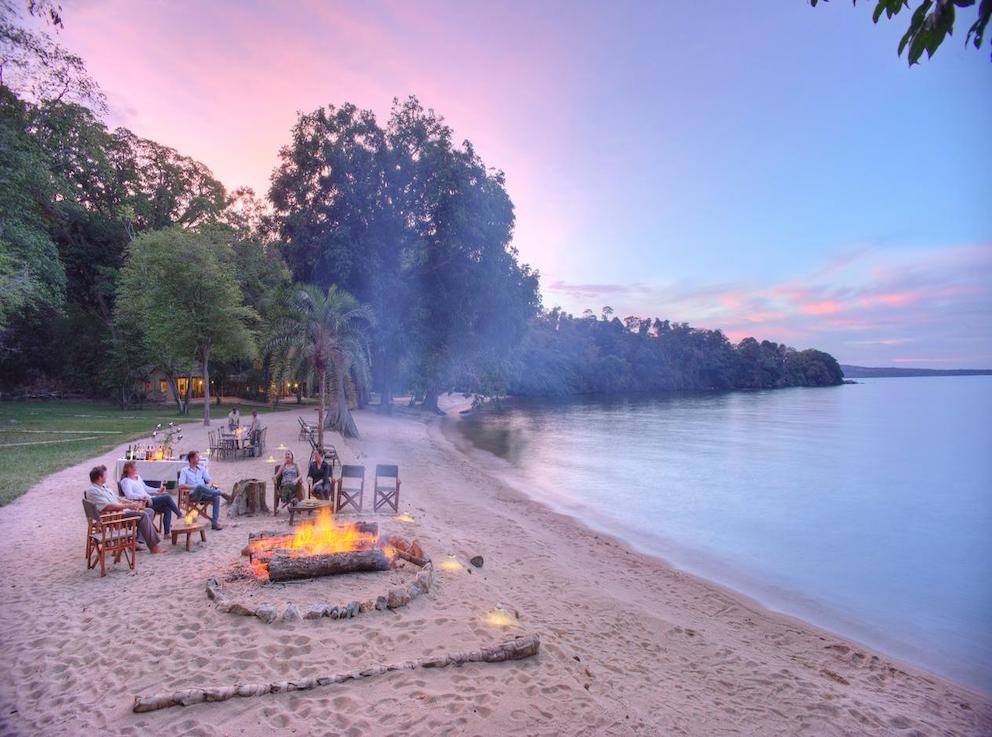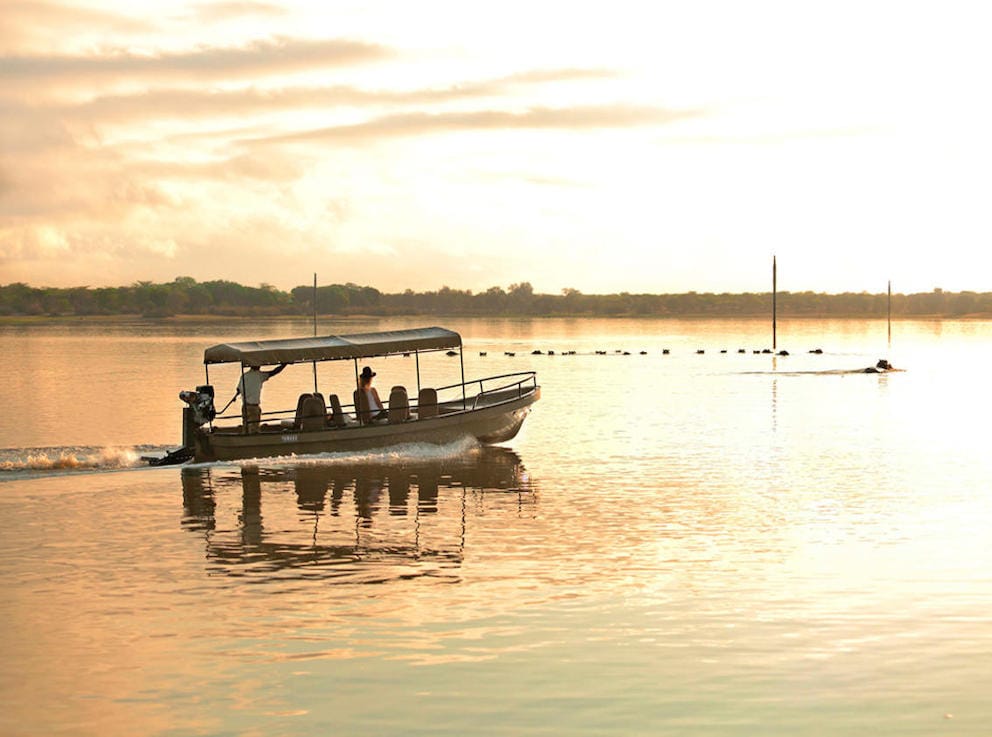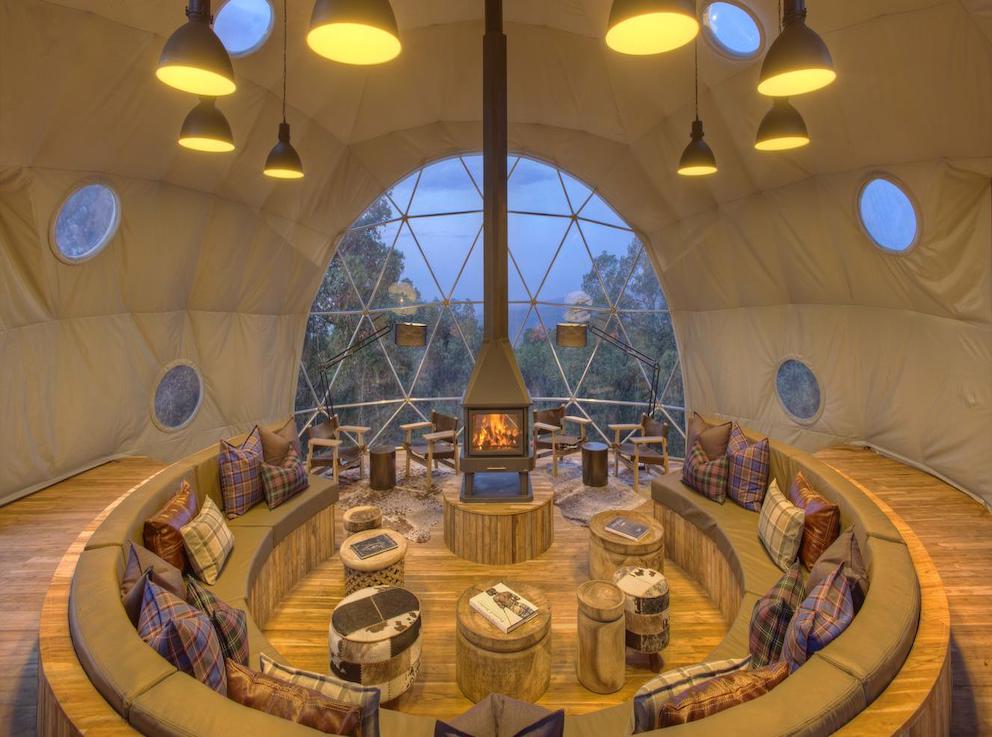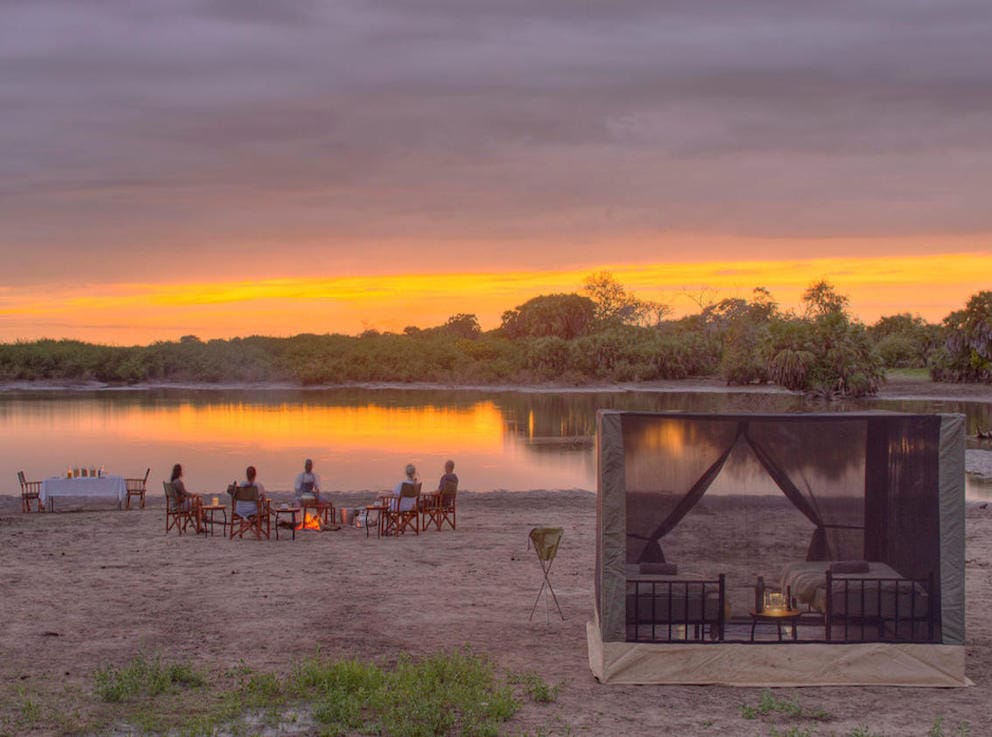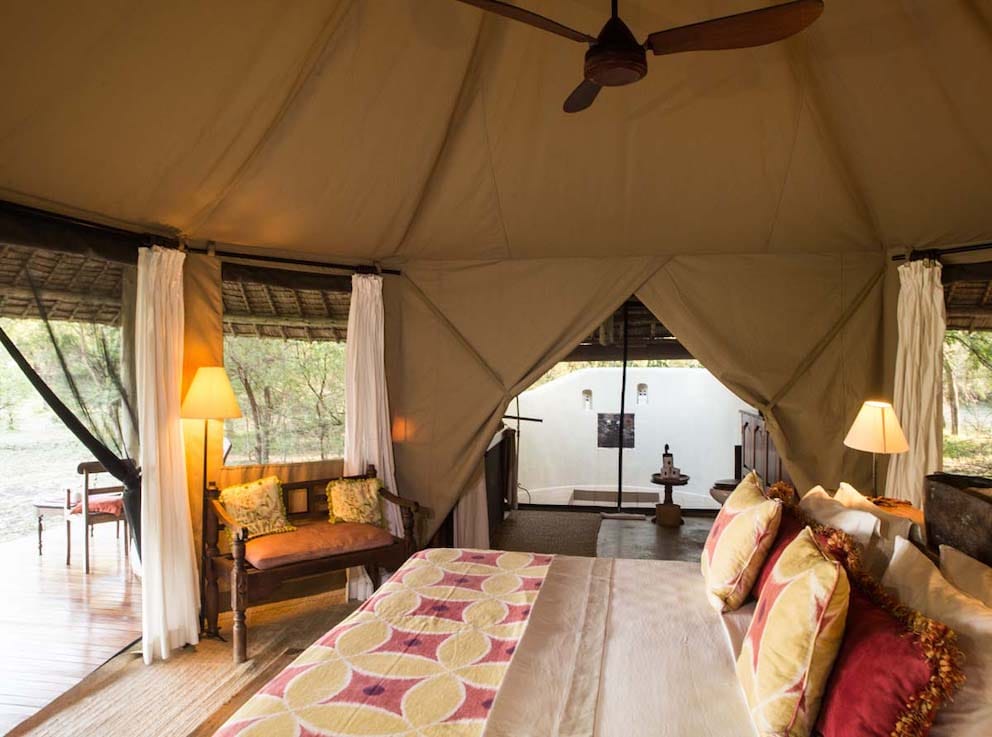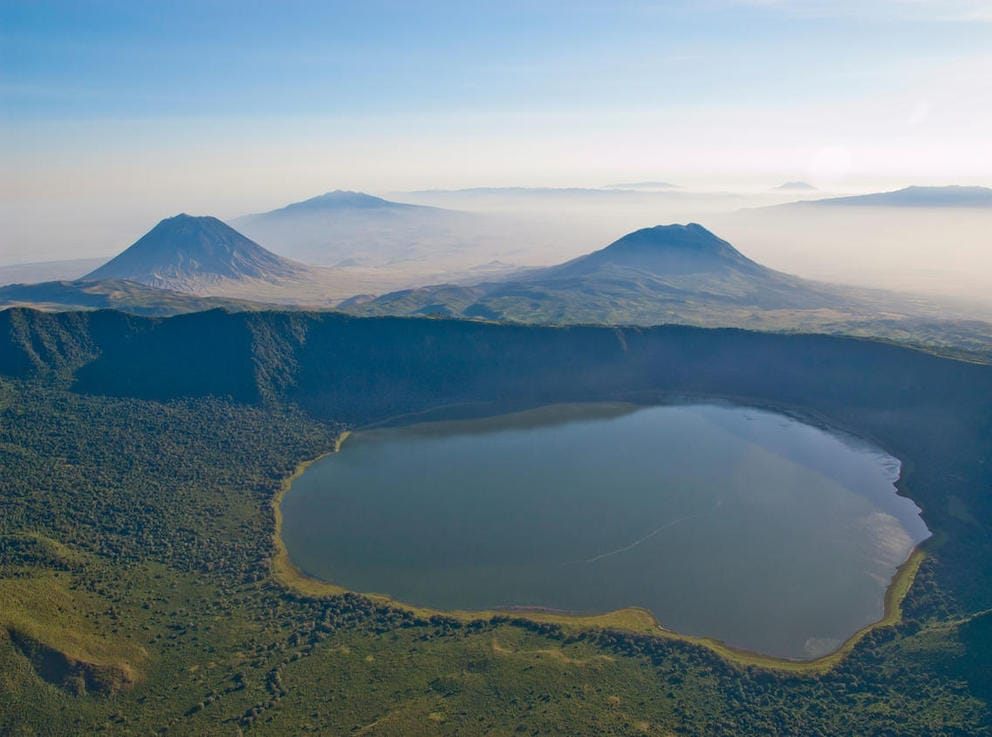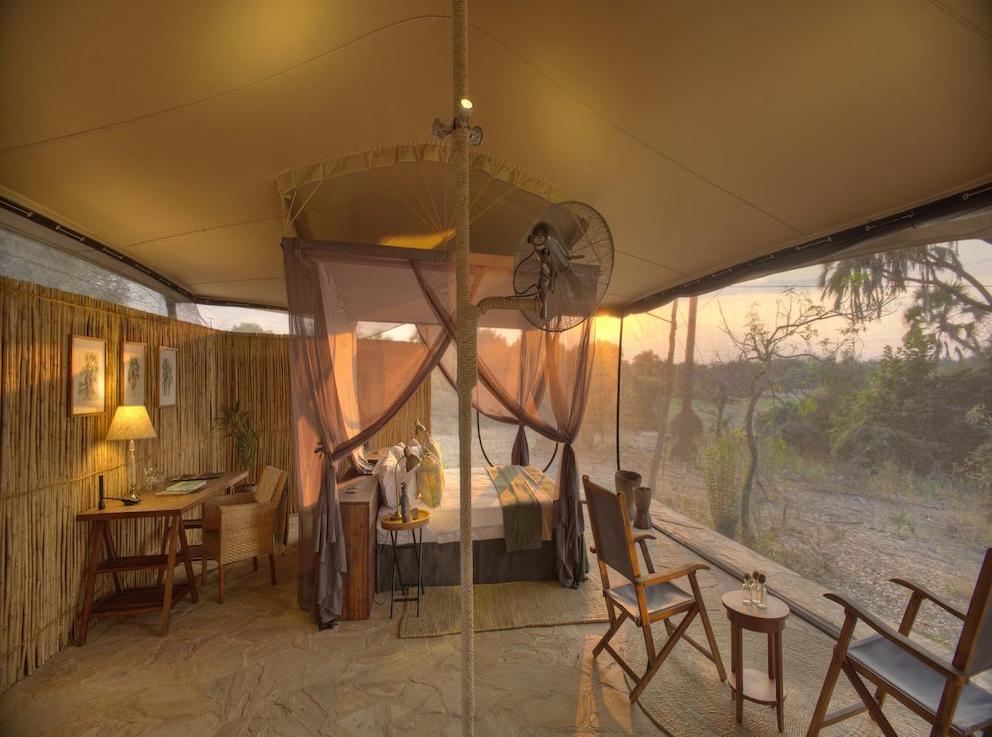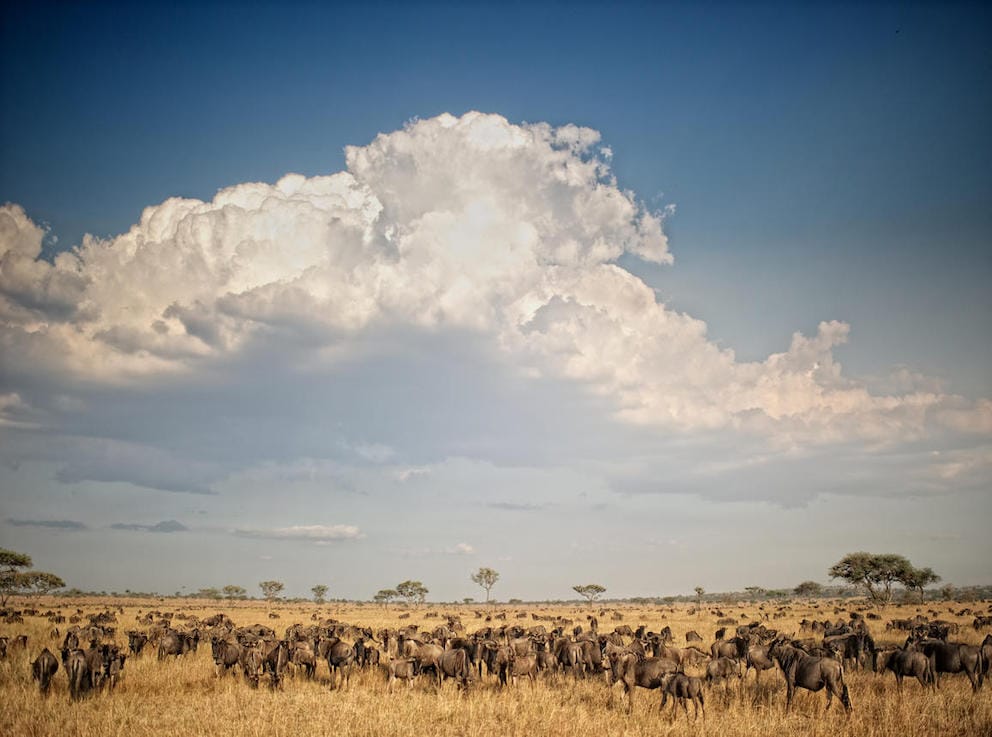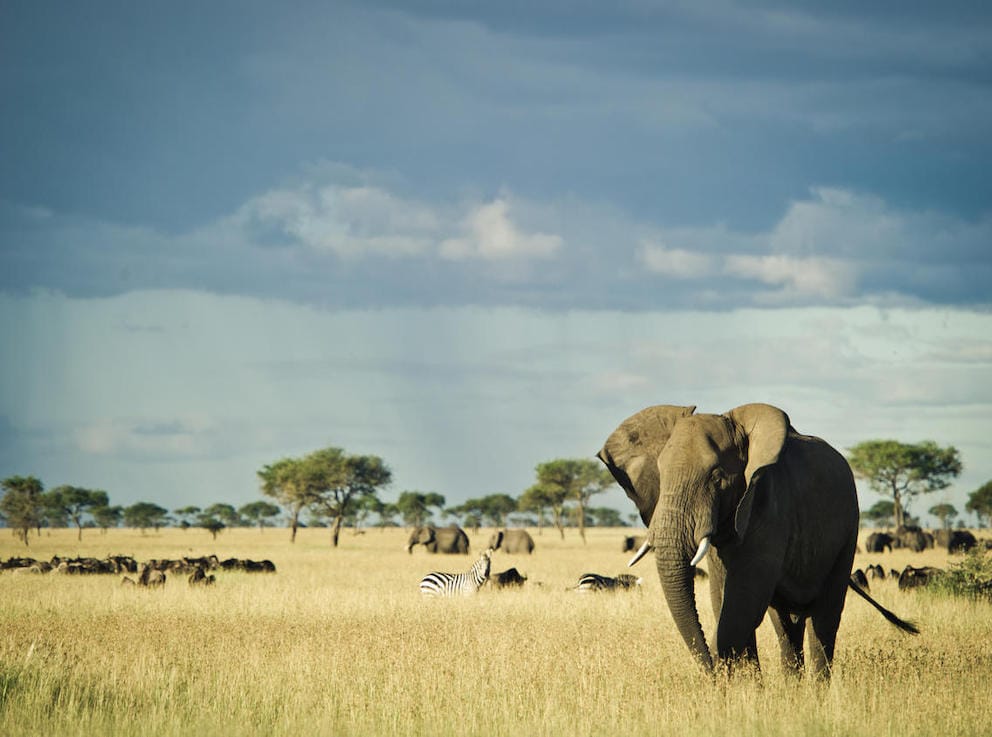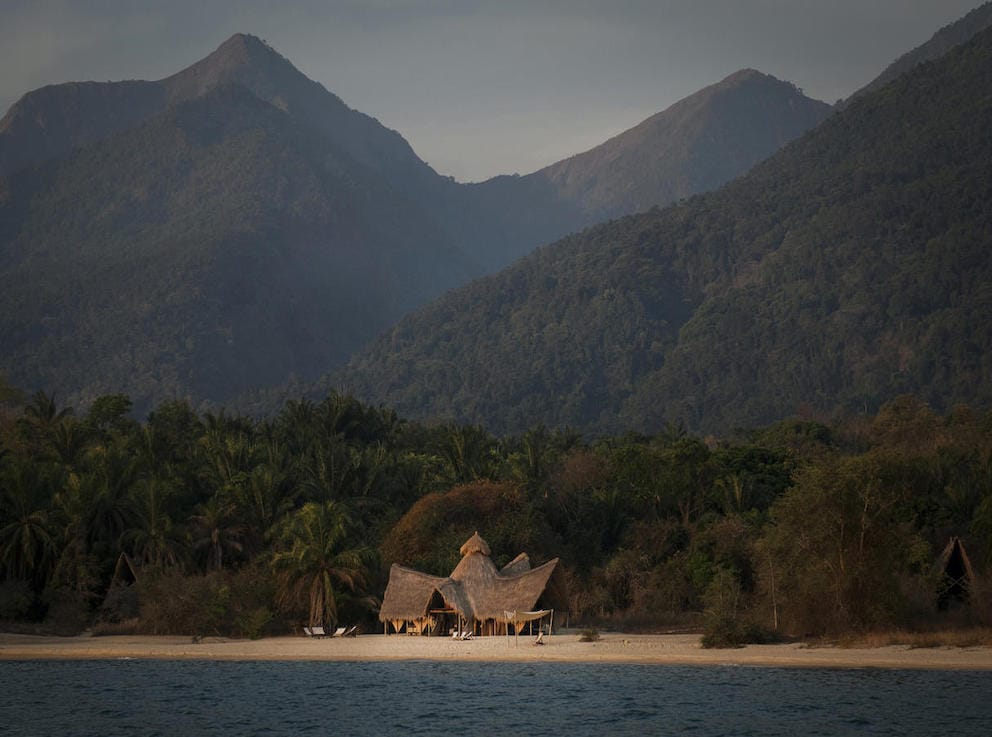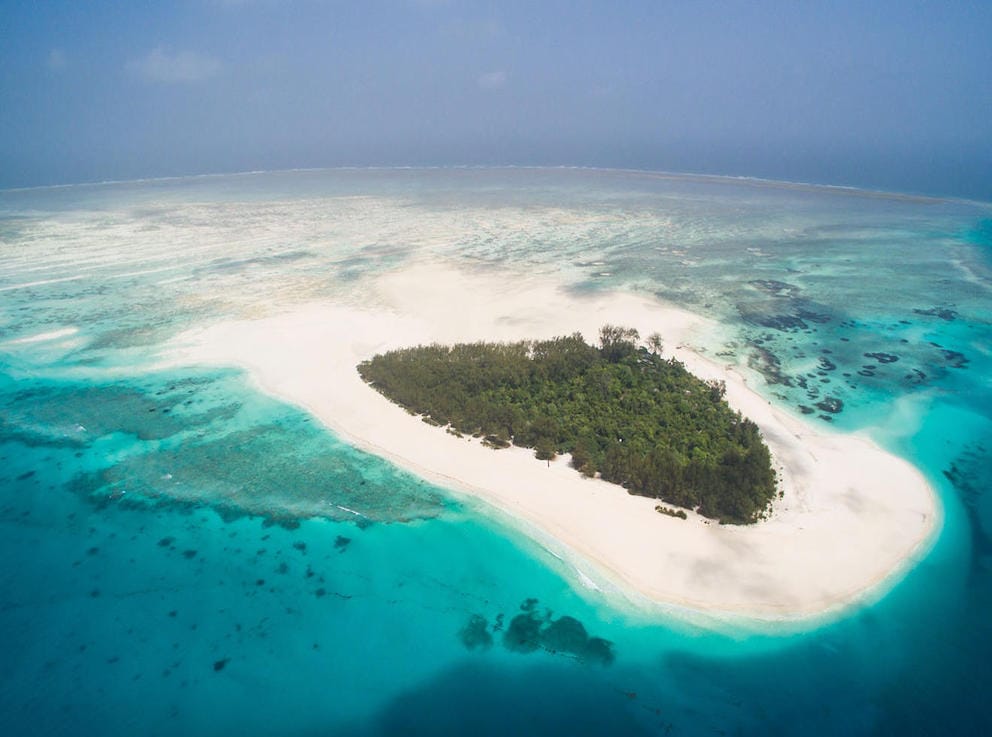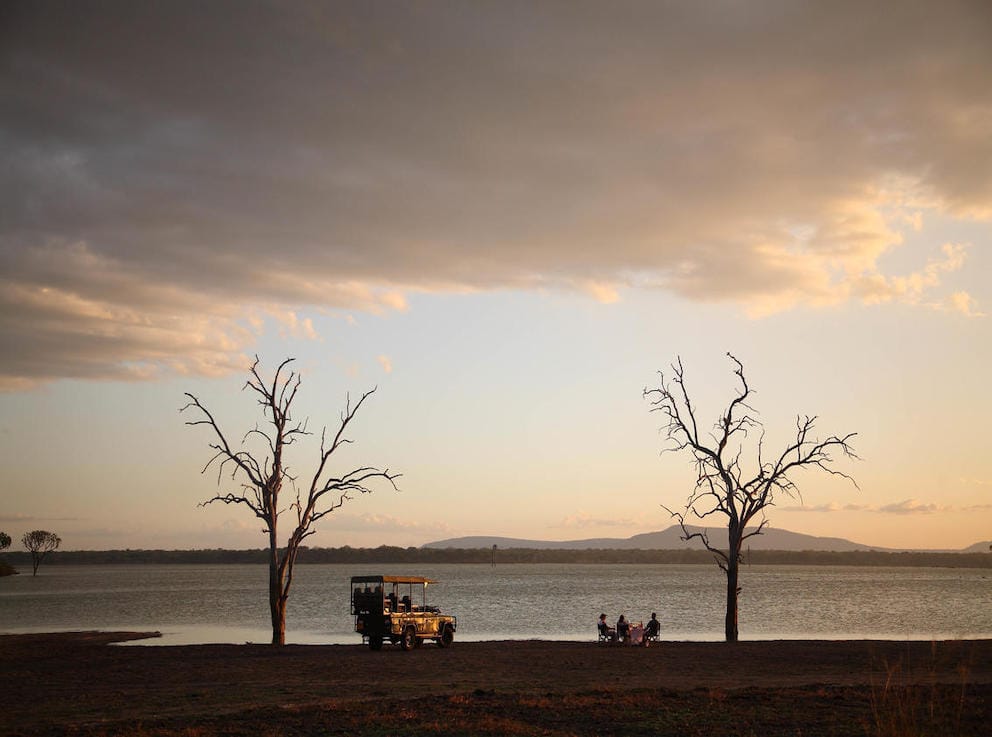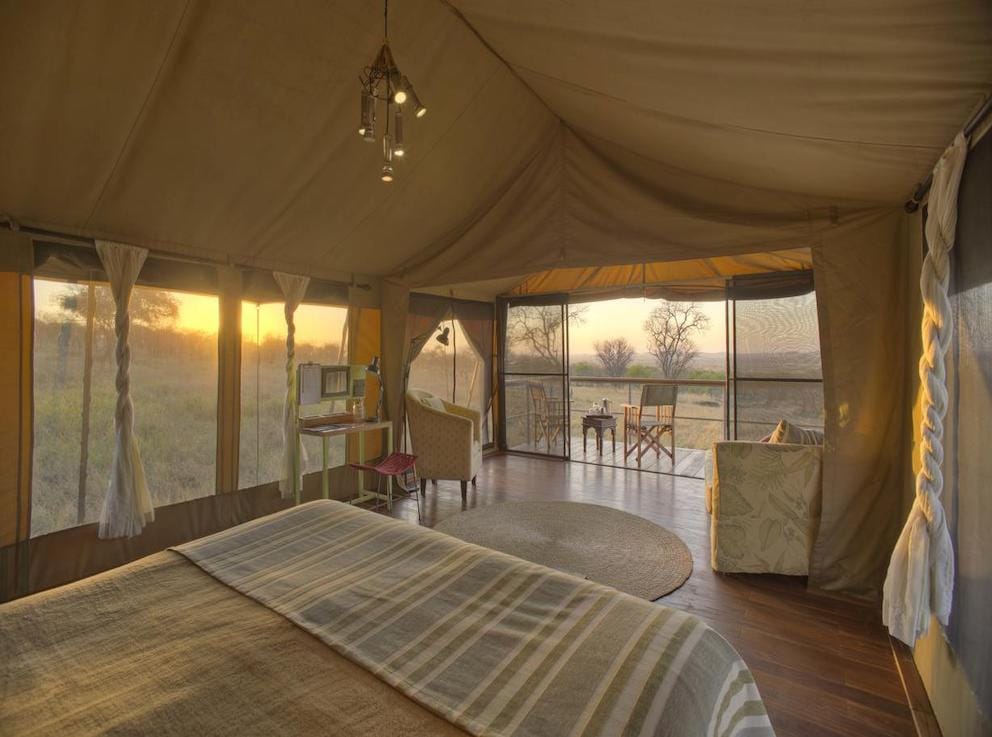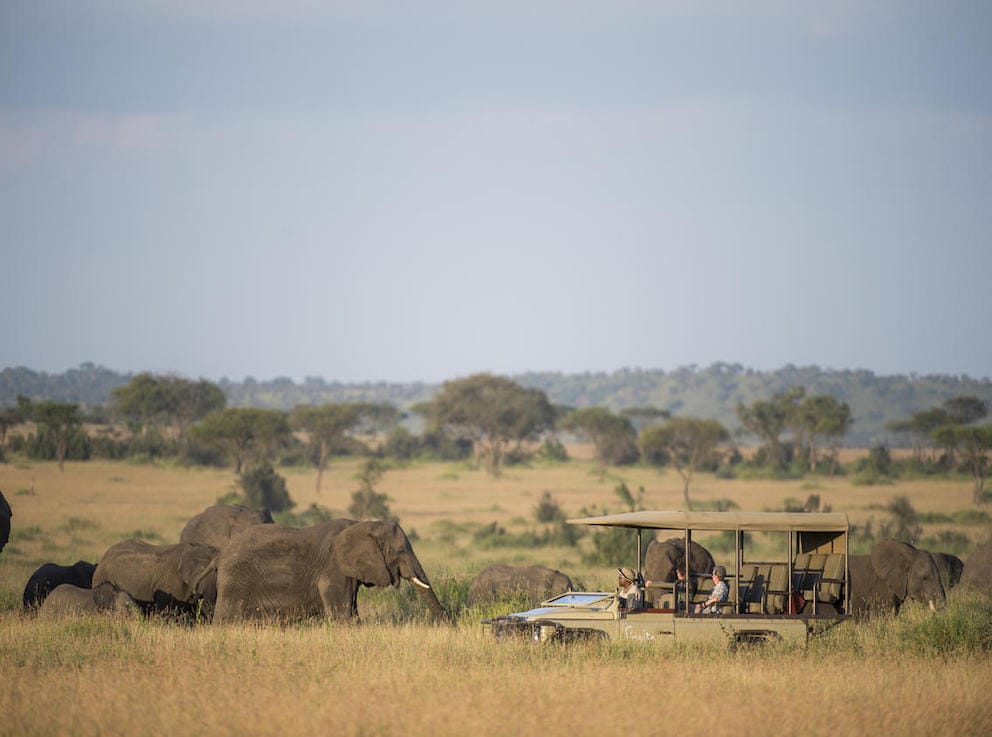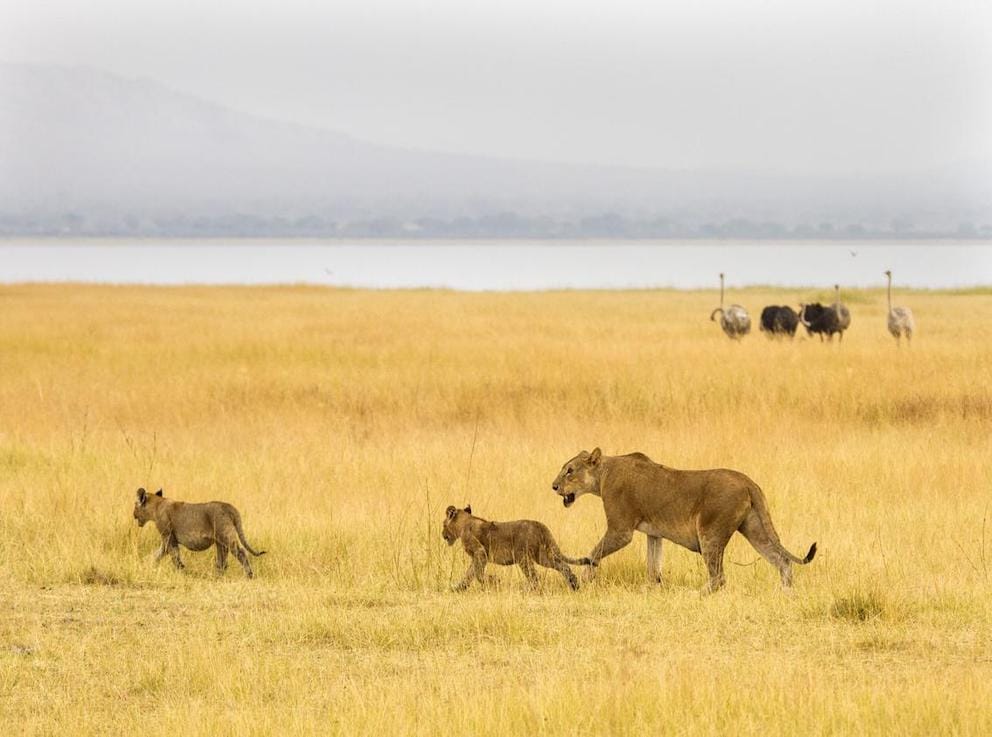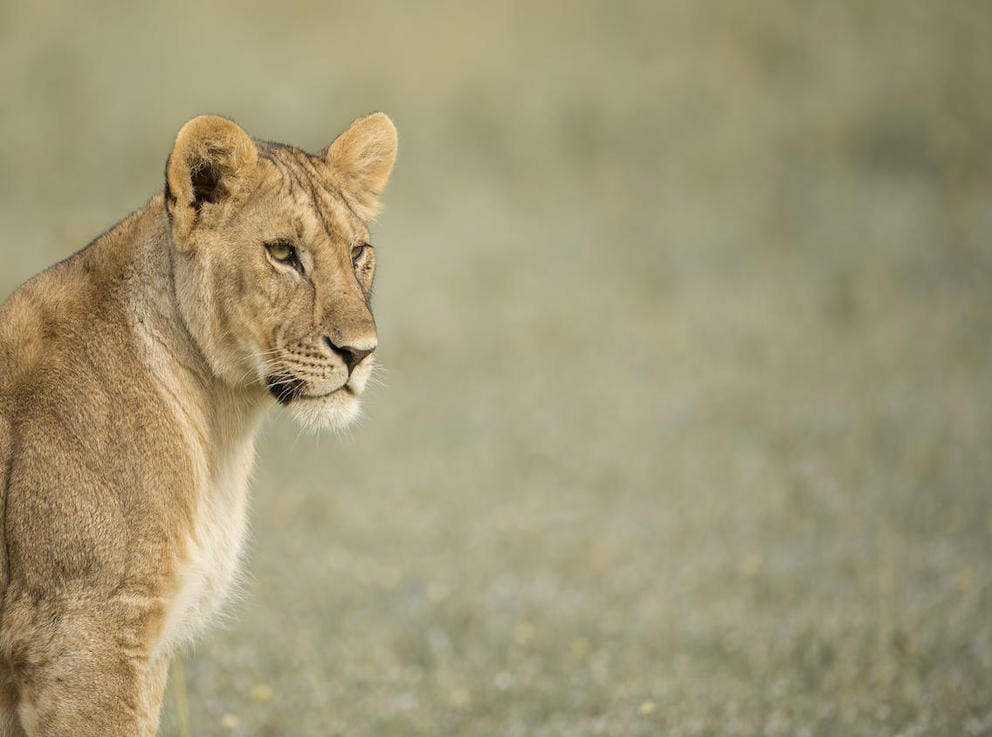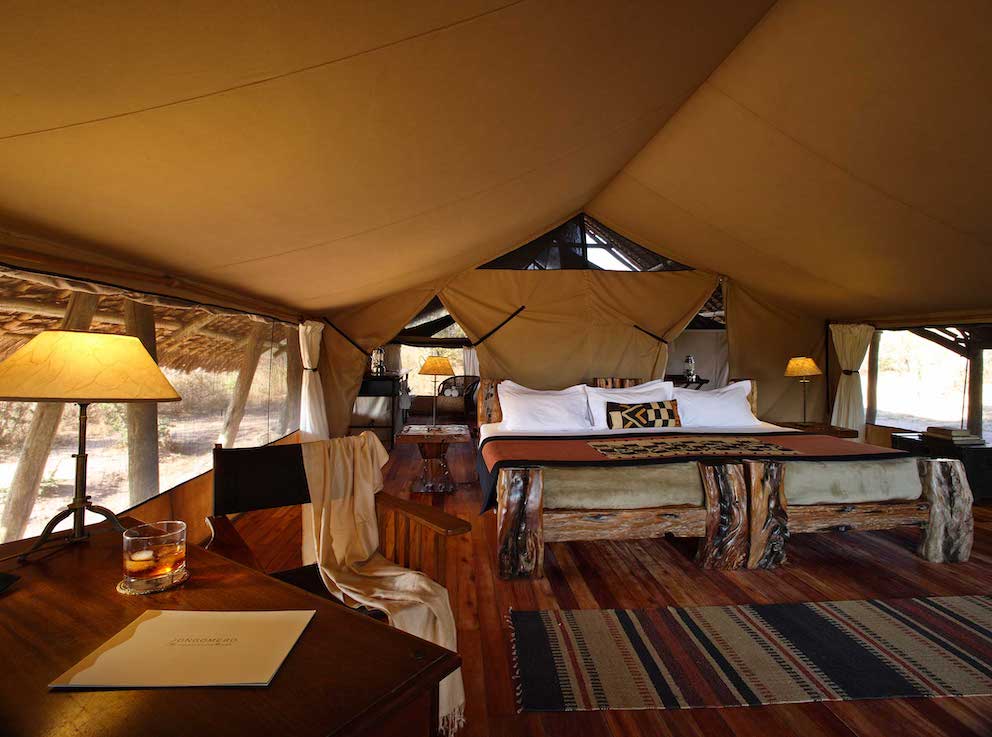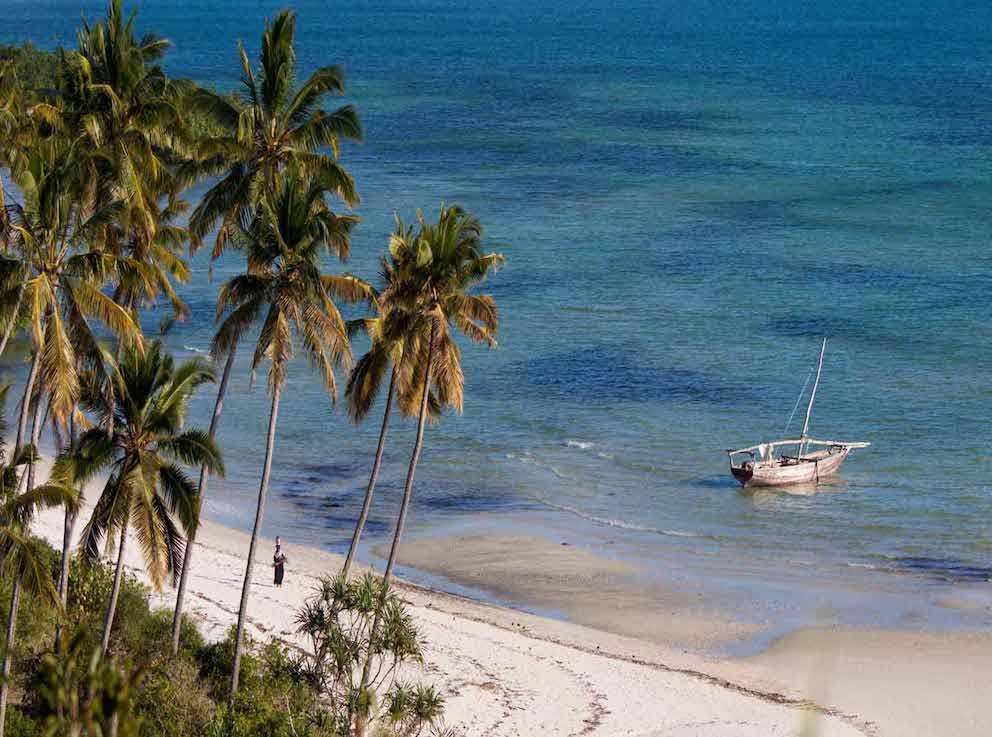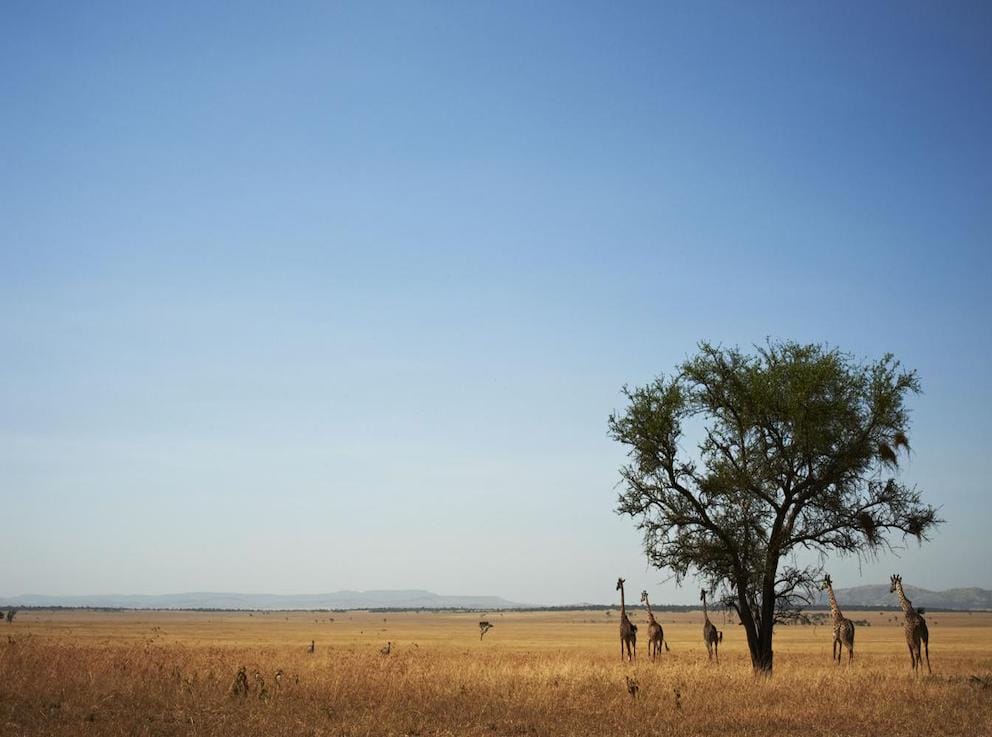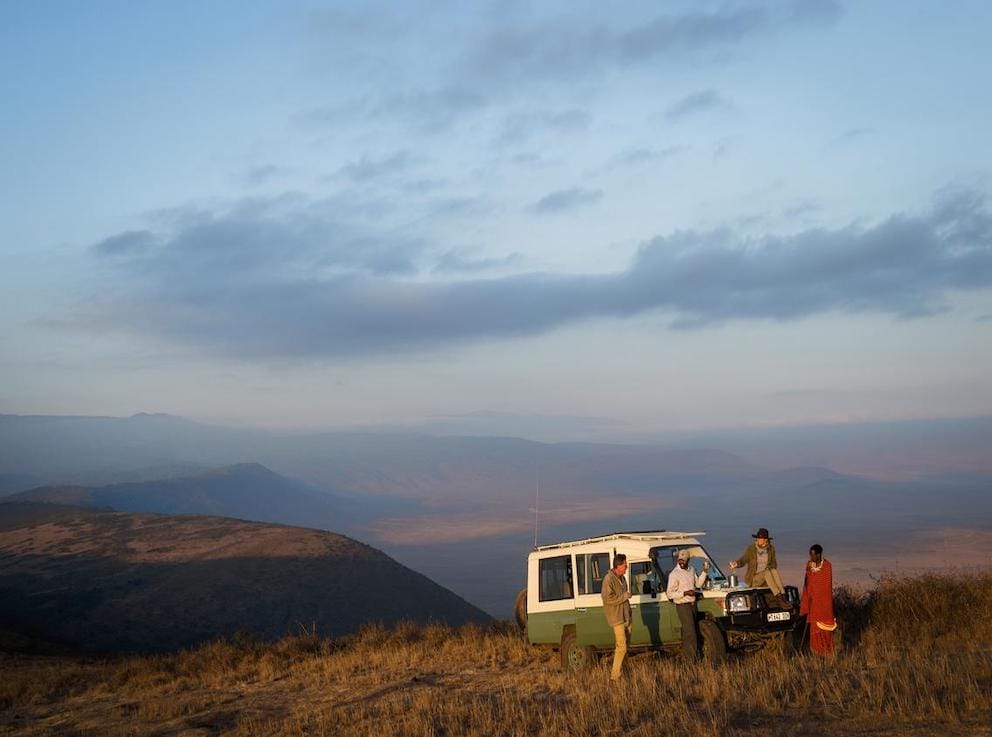Summary
Tanzania is well known for the Serengeti and its famous migration, but venturing off the traditional safari circuit you’ll find jungle-backed beaches, wild rivers and jasmine scented chimpanzee forests. Mount Kilimanjaro stands silently by the border with Kenya – a formidable character to be reckoned with.
- Every year over a million wildebeest, gazelles and zebras, followed by a band of inevitable predators, travel though Kenya and Tanzania in search of seasonal pasture and water. This movement is known as ‘the great migration’ and it is a sight to behold.
- Predators and large herds of plains game can be found across the country and chimpanzees inhabit the shimmering forests of the Mahale Mountains.
- The Nyerere National Park (formerly Selous Game Reserve) and Ruaha National National Park are immense wildlife strongholds, yet neither is visited by more than a handful of intrepid travellers each year.
- The coastline’s powder white beaches are sublime and the exotic island of Zanzibar lays just offshore, rich in history and Swahili culture.
Areas
Tarangire National Park
Tarangire sits on Tanzania’s popular ‘northern circuit’ but is often bypassed in favour of the Ngorongoro Crater or the Serengeti. This is an oversight because it offers architectural baobab trees, a snaking river and wildlife-rich marshlands.
- Tarangire National Park is part of the wider Serengeti/Mara ecosystem through which the wildebeest move on their great migration.
- The wildlife here is similar to that of the Serengeti, with comparable seasonality. Big numbers of elephants are often recorded and predator sightings are good.
- The habitat is rich and varied with lush seasonal swamps, dense wooded thickets and open plains all supporting their own unique ecosystems. The Tarangire River flows northward, carving the park in two.
- The park is known for its great baobab trees and it is one of the best places to see them.
- A series of huge flat swamps lie in the south and these are impassable during the rains. For most of the year they remain dry, uniformly green plains favoured by cheetah.
- Most of Tarangire’s visitors stay less than 24 hours and remain in the north, which can be busy. Venturing south you’ll find plenty of wild space worthy of more than a brief stopover.
Take a look at: Kuro Tarangire, Olivers Camp, Little Olivers Camp, Chem Chem Forest Lodge
Ngorongoro Conservation area
Although this conservation area covers large swathes of Serengeti Plains and the Ngorongoro highlands, the star of the show is undoubtedly the Ngorongoro Crater – a world renowned natural wonder that wears its UNESCO World Heritage Status with pride.
- The crater is the relic of a great imploded volcano, thought to be some three million years old. Its legacy is a vast, flat-bottomed hollow, blanketed in mineral-rich, grassy plains.
- Sitting in a cradle of 3000ft walls, the crater floor is virtually cut off from the surrounding environment, which gives rise to extraordinary wildlife concentrations. Surprisingly, impala and giraffe are absent.
- The open terrain of the crater makes wildlife sightings easy. It’s an excellent location for those looking to tick off a lot of species in a short space of time.
- The views from the crater rim are simply breathtaking and most of the region’s best lodges perch here, gazing out across the landscape.
- With great fame comes great popularity and sadly this means the crater can be busy. As the wildlife concentrates on the crater floor, so too do the vehicles of safari goers.
- The crater is a year-round destination with wildlife sightings generally fantastic throughout the seasons. During the wetter months (Jan to May) the water levels in Lake Magadi rise and attract impressive flocks of lesser flamingos.
Take a look at: Gibbs Farm, Entamanu Camp, The Highlands
Lake Manyara National Park
Just an hour and a half from Arusha, and barely an hour from Ngorongoro, Lake Manyara is a well- known stop on Tanzania’s northern circuit. Two thirds of its area is covered in a shimmering lake which attracts great flocks of flamingoes and pelicans.
- Though small by African standards, the watery environment of Lake Manyara National Park supports a huge range of ecosystems including savannah, marsh and evergreen forest.
- Its accessible location means the park can be busy, especially in the north where most of the accommodation options are located. Spending a couple of days or more allows exploration of the quieter southern regions.
- Wildlife includes plenty of plains game, healthy herds of elephant and journeys of giraffe. The broken forest is good leopard habitat and the lions are known for their tree climbing antics.
- The diverse range of habitats mean the birdlife is dazzling. Expect flamingos, pelicans, kingfishers, hornbills, bee eaters, storks, eagles, ibises and more, especially during the wet season (November to April) when the migrants arrive.
- The peak of the high season falls around July/August/September when wildlife sightings are at their best. This is also the busiest time to visit.
Take a look at: Chem Chem Lodge, Little Chem Chem
Serengeti National Park
The Serengeti requires little introduction. Here the circle of life plays out as resident wildlife, migrating wildebeest and insatiable predators all come together in one of the greatest nature spectacles on earth.
- The Serengeti National Park forms the heart of the wider the Serengeti ecosystem. This stretches across the border and into Kenya’s Maasai Mara.
- There is no one season to best experience the Serengeti. The sheer numbers of resident wildlife ensure that game viewing is exceptional year round. Within the eco system a migrating herd of around 1.6 million wildebeest march north and south on a perpetual cycle, driven by rain patterns and instinct.
- From roughly June to November migrating herds are in the north and this is when you will witness the adrenalin-fuelled crossing of the Mara River. From December to May the herds congregate in the south to give birth en masse. Driven by the forces of nature, migration timings are not exact and can never be predicted.
- A number of exceptional mobile safari operators move their camps to remain with the herds through the seasons. These outfitters have the flexibility and agility to provide the best sightings at any one time.
- The National Park itself can be busy but several neighbouring private conservancies provide the same wildlife experience with far fewer crowds.
- The Serengeti is only busy because it’s incredible. Believe the hype!
Take a look at: Serengeti Safari Camp, Lamai Camp, Ubuntu Camp, Namiri Plains, Mwiba Lodge, Dunia Camp, Serian Migration, Sayari, Kwihala Camp, Singita Faru Faru Lodge, Singita Sabora Tented Camp, Singita Mara Camp, Singita Sasakwa Lodge
Ruaha National Park
Deep in the south west of Tanzania, Ruaha is nearly 50% bigger than the Serengeti but welcomes just a tenth of the visitor numbers. It’s rugged and largely untrodden, awakening the inner explorer in any safari enthusiast.
- The terrain is a mixture of wide plains, swathes of woodland, rocky outcrops and an impressive escarpment – part of the Great Rift Valley. Baobabs stand in architectural groves.
- The Great Ruaha River is the lifeblood of the park and the wildlife relies heavily upon in. Several ‘sand’ rivers lace the park, drying up seasonally to create wildlife corridors.
- The wildlife is impressive. Lions are big and powerful, dominating the land in prides of over 20 individuals. It’s a stronghold for African wild dog, and home to Tanzania’s largest elephant population, estimated at 12,000 animals.
- Ruaha is listed as one of the top ten birding spots worldwide –no fewer than 580 recorded species are present.
- Peak season is from July to October, when drying conditions force wildlife to congregate near water. Dry river beds make great tracks for walking safaris.
- You’ll find the guides to be passionate and dedicated since this is an exhilarating, raw and at times challenging destination – not a place for half hearted operators!
Take a look at: Ikuka Camp, Ruaha Kigelia, Kichaka Expeditions, Jabali Ridge, Jongomero Camp, Kwihala Camp
Nyerere National Park (formerly Selous)
Vast and largely undiscovered, the Selous earnt its UNESCO world heritage status for being one of the largest remaining wilderness areas in Africa. Its greatest drawcard is that people simply don’t come here.
- With virtually no modern references, Nyerere could exist in almost any era. Visitors today see it as the first explorers would have done in the 1800s.
- The park was named after British naturalist, author and hunter Frederick Courteney Selous. During the 1800s he sent some 5000 specimens from his beloved park back to the British Natural History Museum, where they remain today. In 2019 the park gained National Park status and now takes its name from Julius Nyerere, the first president of Tanzania.
- The reserve is surprisingly easy to access via light aircraft from Dar es Salaam and combines well with nearby Ruaha for an unusual safari experience.
- Nyerere is known for its walking safaris and the quality of guiding facilitates thrilling encounters with big game including elephant, buffalo and even lion on foot, exactly as the explorers of old would have done.
- The mighty Rufiji swirls through the park, bringing life to the remotest reaches with its tawny waters. Its many tributaries and channels provide excellent boating opportunities.
Take a look at: Sand Rivers, Roho ya Selous, Siwandu Camp
Katavi National Park
Katavi is Tanzania’s wild west. It’s vast, isolated, and difficult to reach and as a result there’s virtually no one here. The wildlife has been left largely to its own devices and the animals seem bigger and more bestial than elsewhere. It’s wild and exciting safari country!
- Life in Katavi hinges on three fragile seasonal rivers – the Katuma, the Kavu and the Kapapa. During the dry season these are the only water sources for miles and they brim with hippos and crocodiles.
- Peak game viewing season falls from July to October as conditions hot up, grasses dry out, and wildlife is forced to congregate around dwindling water sources. Inter-species encounters are tense!
- The season in Katavi is short with most camps closing their doors from December to May.
- The cost of running a camp or lodge in such wild environs is prohibitive and only a handful operate in this vast wilderness. The standard of these camps however, is exceptional.
- Visitor numbers are incredibly low and you’ll almost certainly count more prides of lions than people on your safari. The Serengeti National Park receives more visitors per day than Katavi does all year.
Take a look at: Chada Katavi
Mahale National Park
Indescribably beautiful and tantalisingly remote, Mahale National Park is an eden of sugar-white beaches, jasmine draped jungle, vivid blue butterflies and lots and lots of primates.
- The forests of Mahale National Park are home to around 1000 chimpanzees. One group has been habituated by researchers since the sixties. They are 100% wild and roam freely, but are completely unafraid of humans.
- Trekking to see the chimpanzees in the wild is the prime activity here. Sightings are never guaranteed but you would be incredibly unlucky not to see them. Due to the chimp’s relaxed behaviour, the encounters are incredibly rewarding.
- Additional species include yellow baboons, red-tailed, red colobus and blue monkeys, giant pangolins and leopards, plus otters, hippos and crocodiles in the gin-clear lake.
- Mahale is difficult to reach and this keeps visitor numbers exceptionally low. There are just a couple of lodges, both of which are excellent, but overall it is untouched and unspoilt.
- Peak season falls from July to October, when conditions are warm and dry and chimps congregate in large groups to feast on fruiting trees.
Take a look at: Greystoke Mahale
Rubondo Island
A veritable Noah’s Ark, Rubondo is a haven for some of Tanzania’s most threatened species. Inhabited only by a handful of researchers and park wardens, visitors may find themselves virtually alone in this wild and wonderful sanctuary.
- Rubondo Island National Park comprises a chain of ten volcanic islands sitting in the south west corner of Lake Victoria and must be reached by light aircraft from mainland Tanzania.
- Until the 1960s, the island was home to a small fishing community who were relocated when the island was declared a national park in 1965. It is now almost entirely uninhabited.
- During the late 60s a group of 16 formerly-captive chimpanzees were introduced and they thrived in the wild to become a healthy breeding family. Today numbers are at around 40 individuals and guests can be involved in the habituation process.
- Additional species including elephants, giraffes and grey parrots have also been reintroduced. The shy semi-aquatic sitatunga antelope can be spotted in the papyrus swamps and the island teems with birds, butterflies and orchids.
- The fishing is fantastic here. Tilapia are plentiful and a single Nile perch can weigh in excess of 200kg.
- There is just one camp in the national park and it provides a welcome blend of beach relaxation and nature exploration. Rubondo is a unique sanctuary to be enjoyed by the privileged few.
Take a look at: Rubondo Island Camp
Zanzibar & Pemba Islands
Zanzibar and neighbouring Pemba are every bit as exotic as one imagines. The sweeping reefs and white sand beaches are the picture of paradise, while African and Arabic influences combine in a rich Swahili culture.
- The Zanzibar Archipelago is a smattering of fifty islands ranging from tiny sunbleached sand banks to the established islands of Pemba and Unguja – the official name of Zanzibar Island.
- Zanzibar was a key trading post in centuries gone by. The markets still carry the scent of cloves, cinnamon and tamarind while the crumbling slave caves tell of a darker trade.
- Stone Town is a fascinating labyrinth of cobbled streets, carved Omani doors, colonial style drinking establishments, quirky museums and palm-lined promenades. Blending Arabic, European, Indian and African influences it’s a feast for the culturally curious.
- The beaches of Zanzibar are sublime. Fish dart over on jewel-coloured reefs and stretches of white sand extend for miles, fringed with sultry mangroves. Snorkelling, diving, sailing and kayaking are all on the cards and sport fishing provides fresh sashimi suppers.
- Zanzibar Island is an established holiday destination where prosaic hotel developments, exquisite beach hideaways and backpacker hostels can all be found. It is important to choose your accommodation wisely.
- Pemba Island (80km northeast of Zanzibar) also offers white sand beaches and coral reefs, but is less developed than Zanzibar and sees far fewer visitors. It is unspoiled and authentic.
Take a look at: Xanadu Lodge, Zuri, White Sands, Mnemba Island Lodge, Fundu Lagoon, Kilindi Lodge
Access
International:
Fly direct to Dar es Salam, Kilimanjaro or Zanzibar from the Middle East, Europe or Nairobi.
Internal:
The northern circuit can be driven. Remote areas in the south west (Nyerere, Ruaha etc) are best reached by light aircraft. A ferry runs from Dar es Salaam to Zanzibar but a scheduled flight is recommended.

